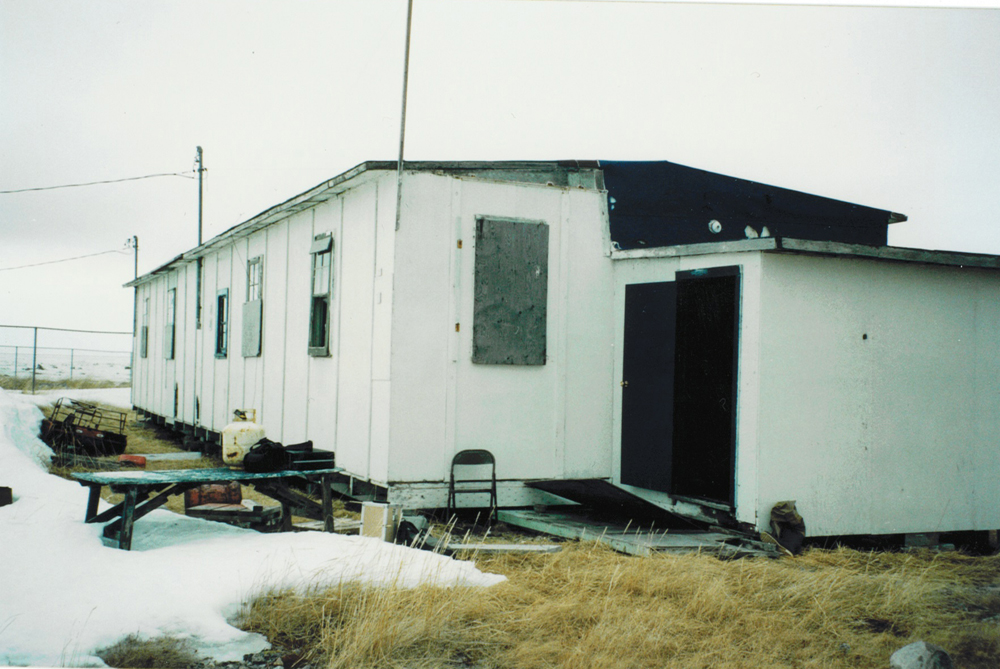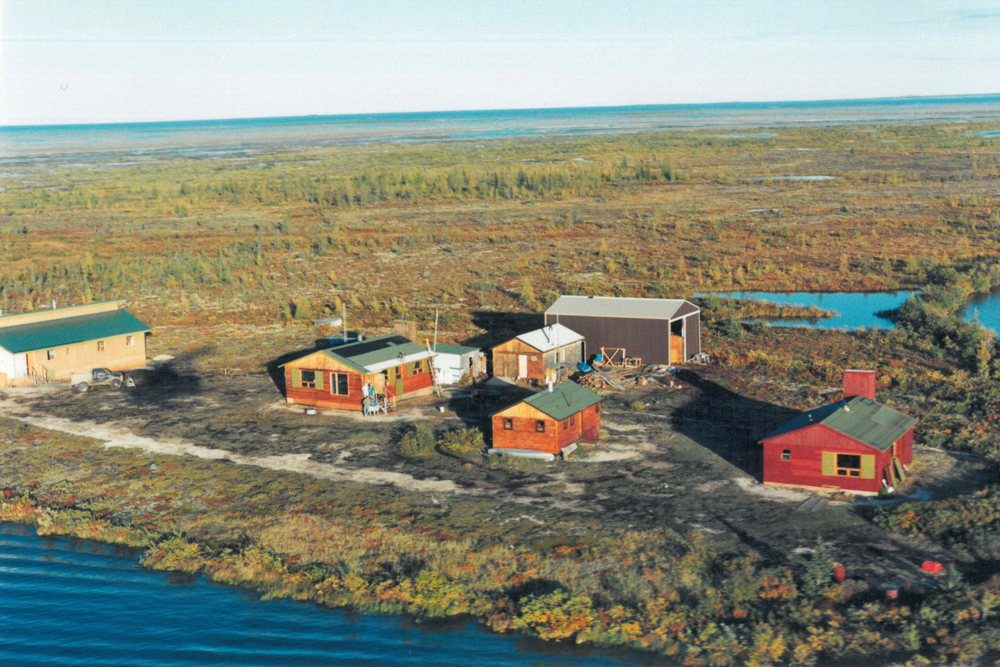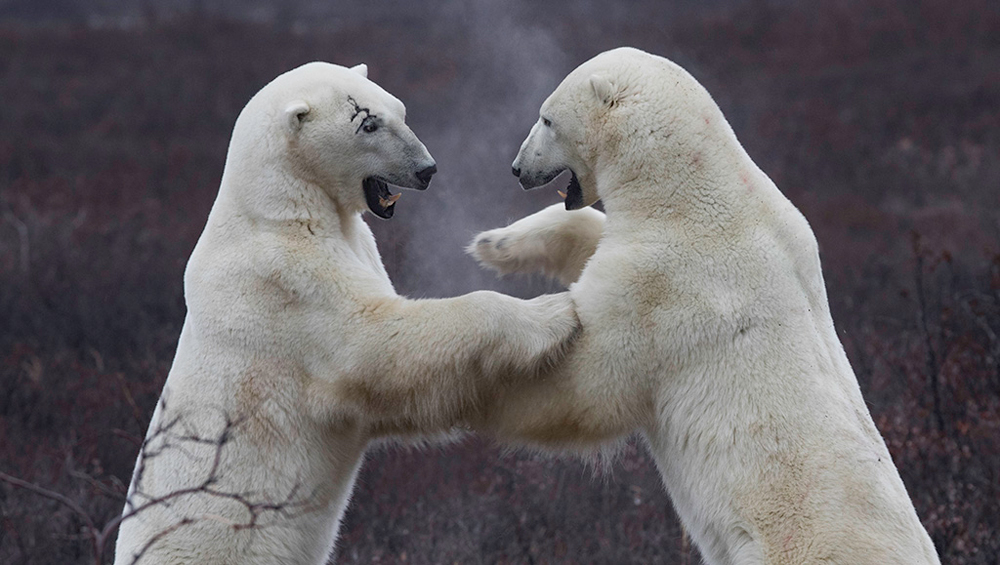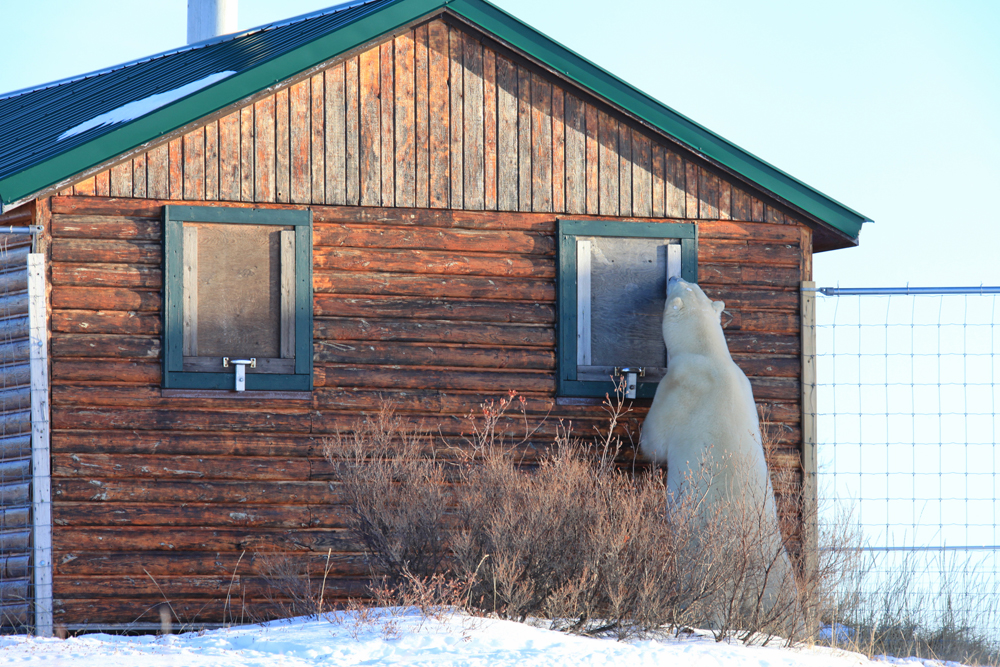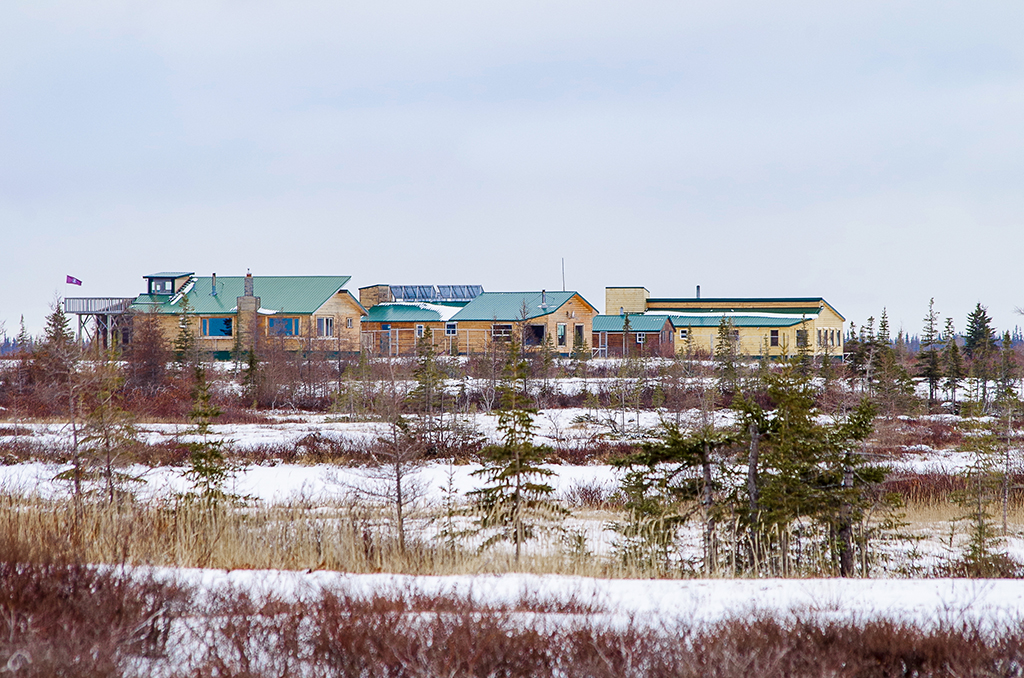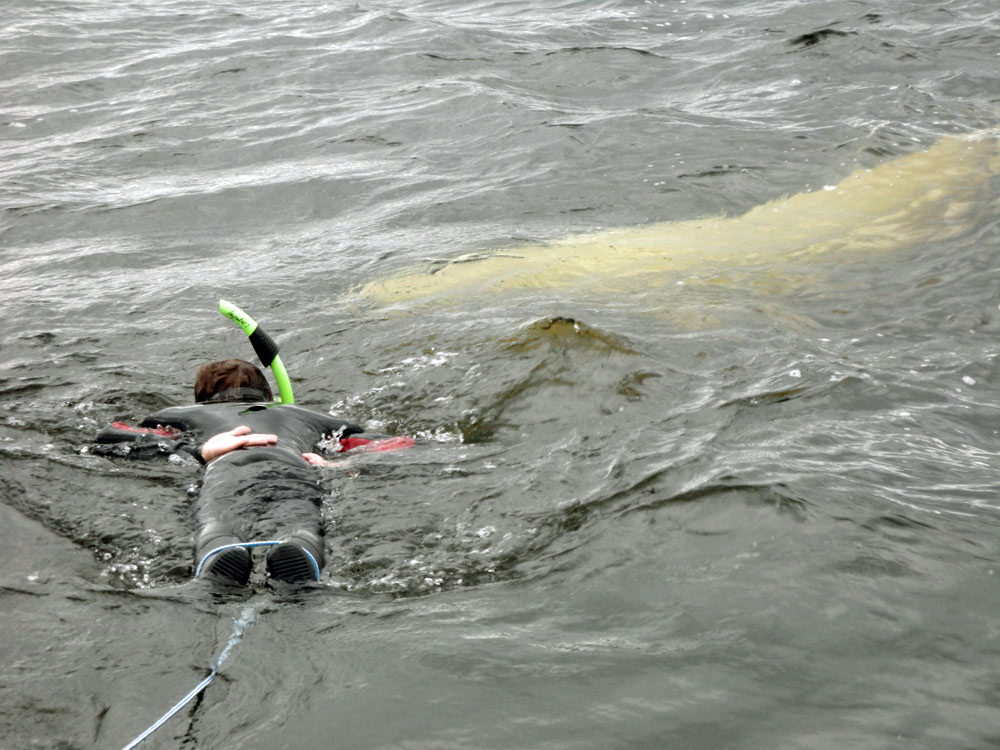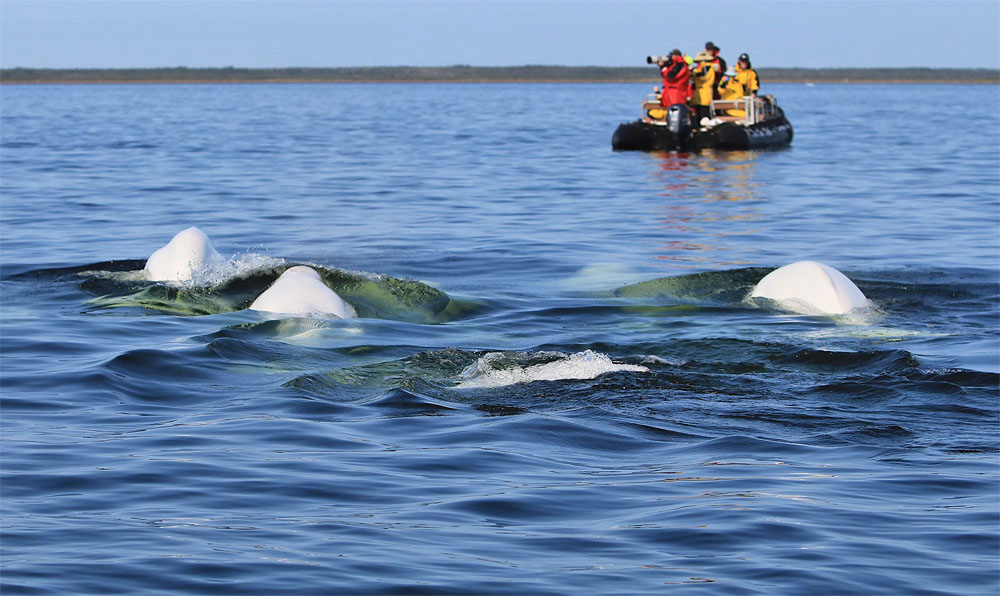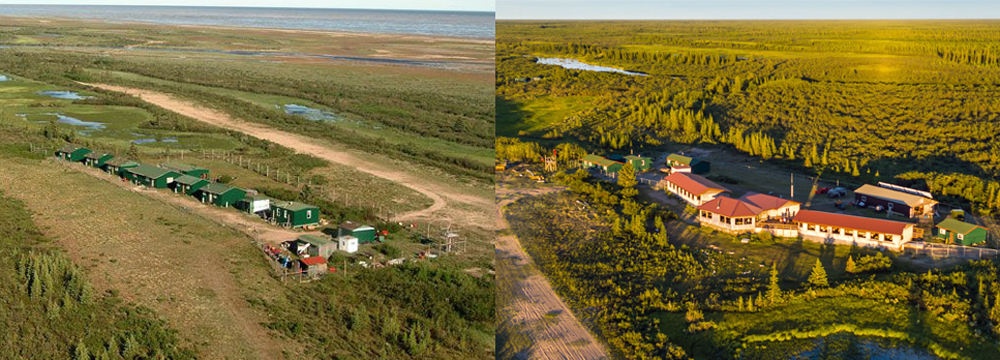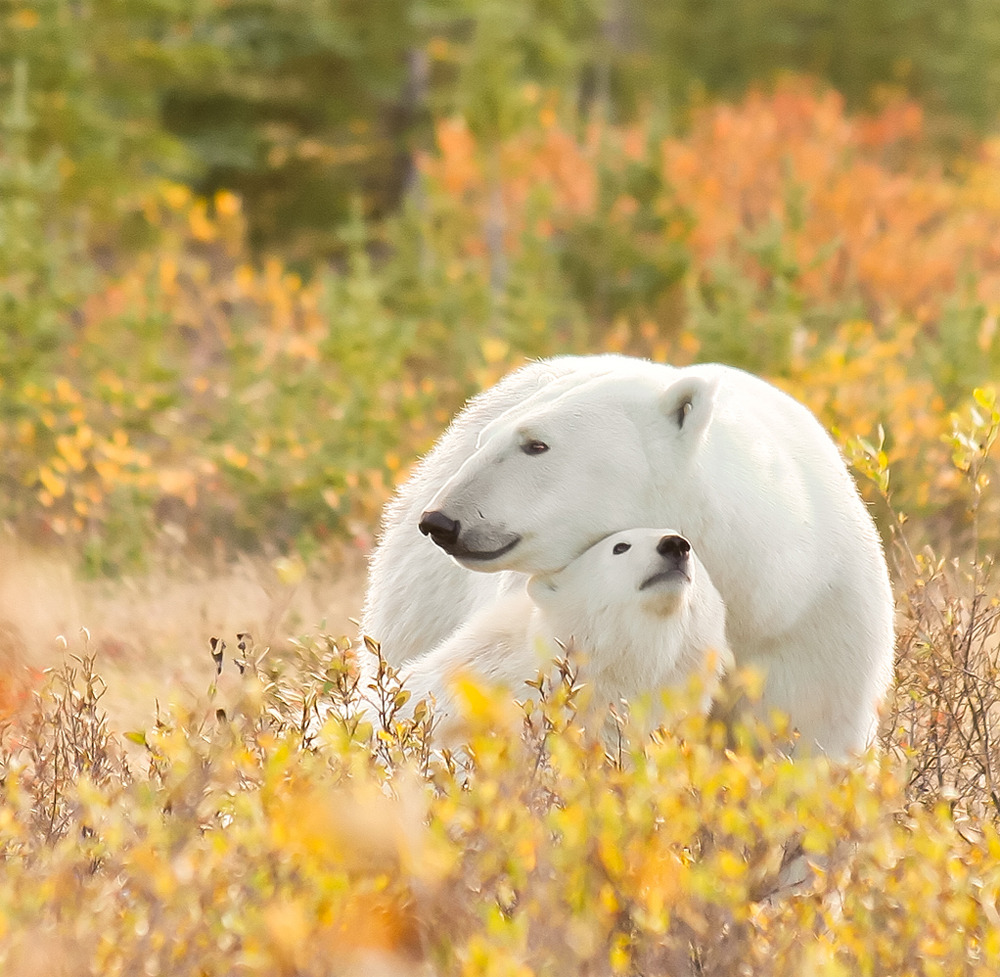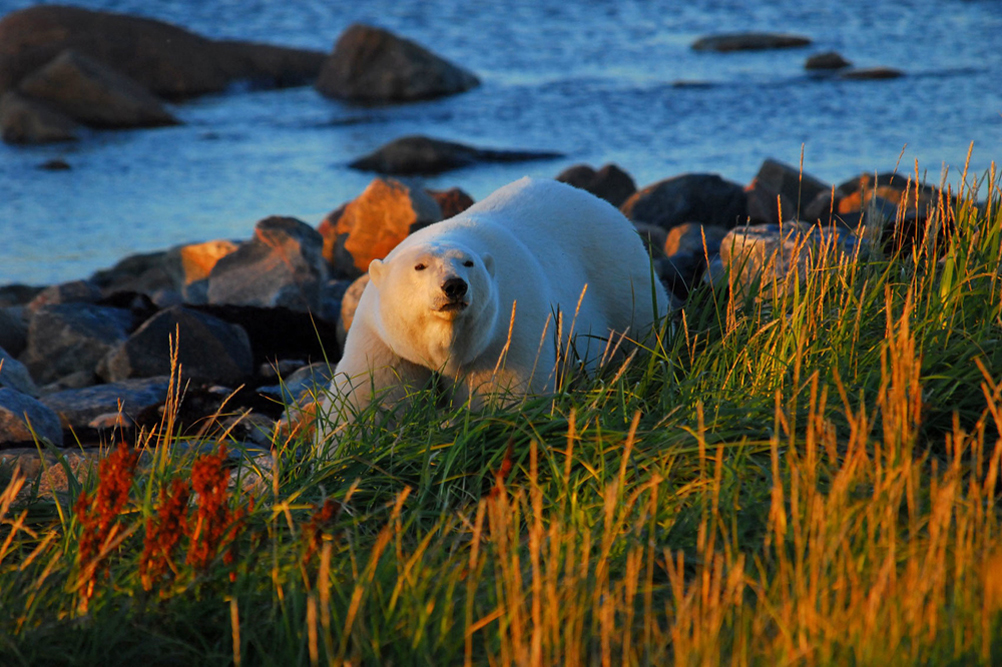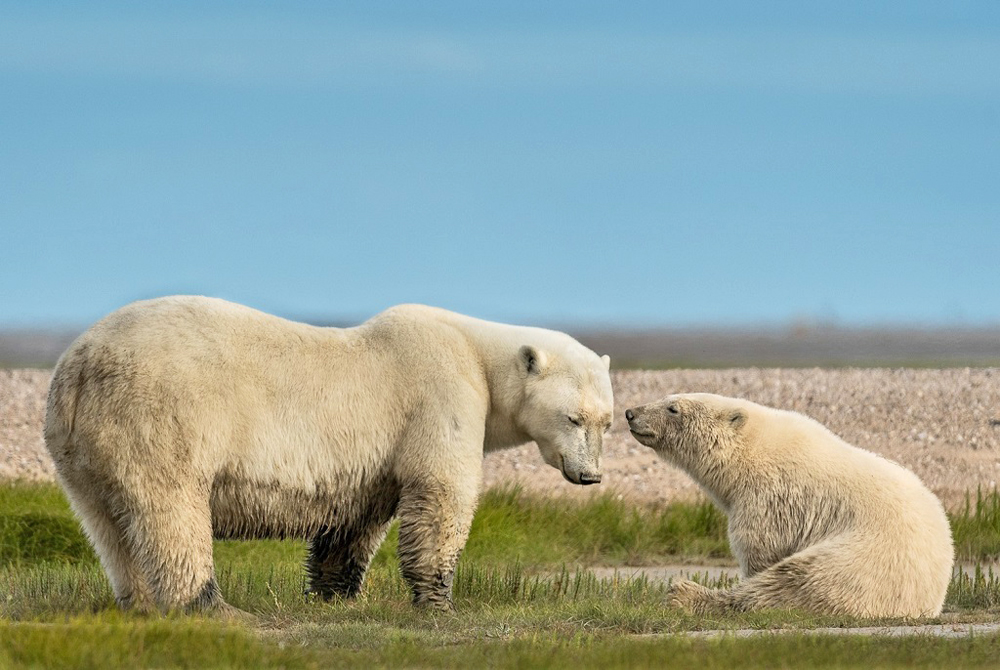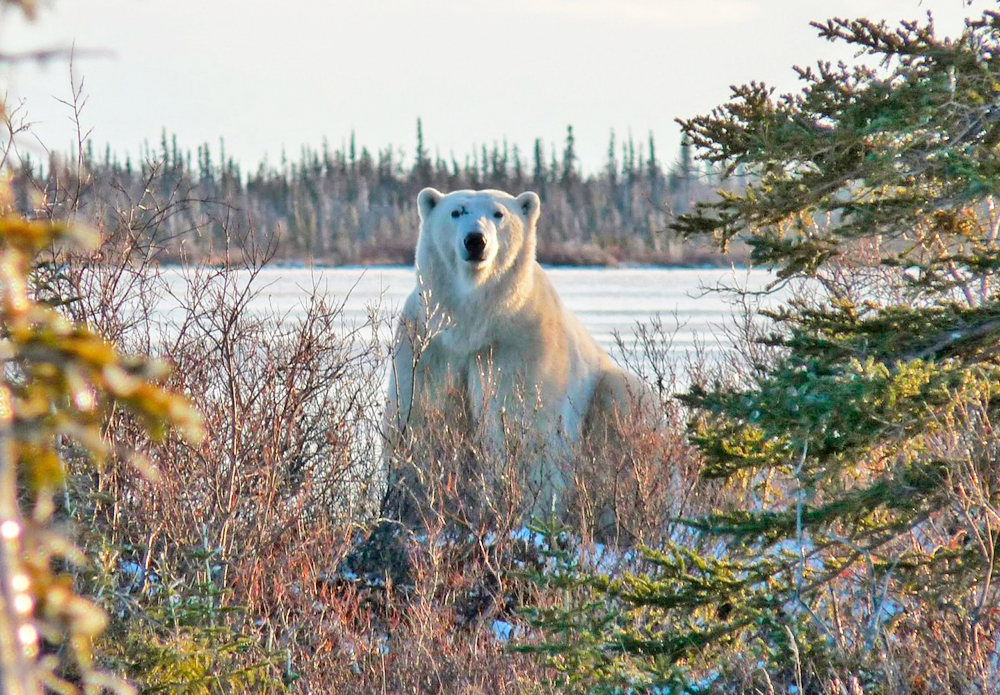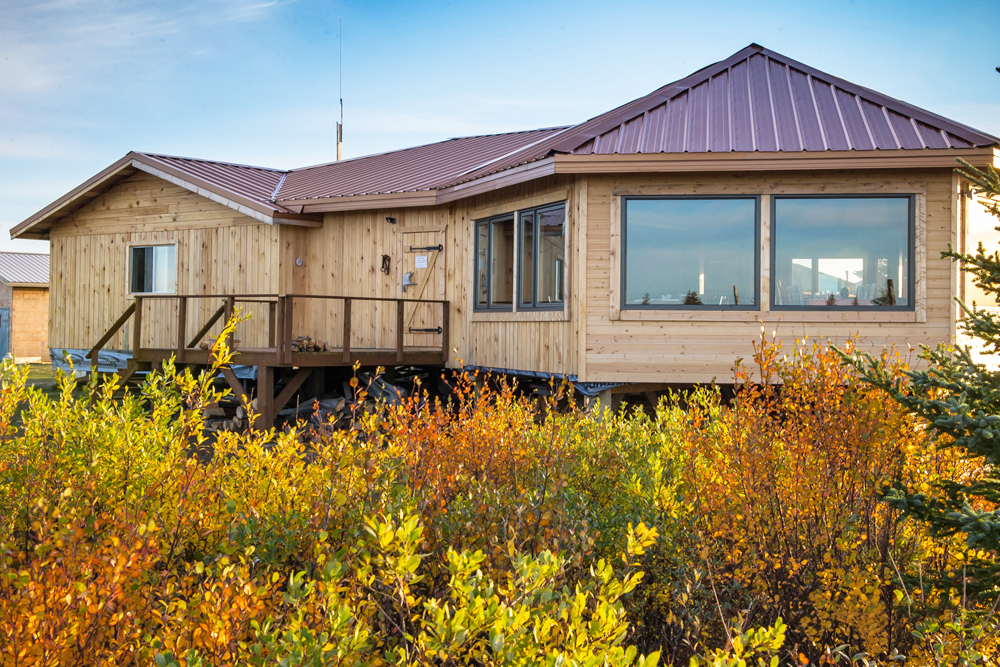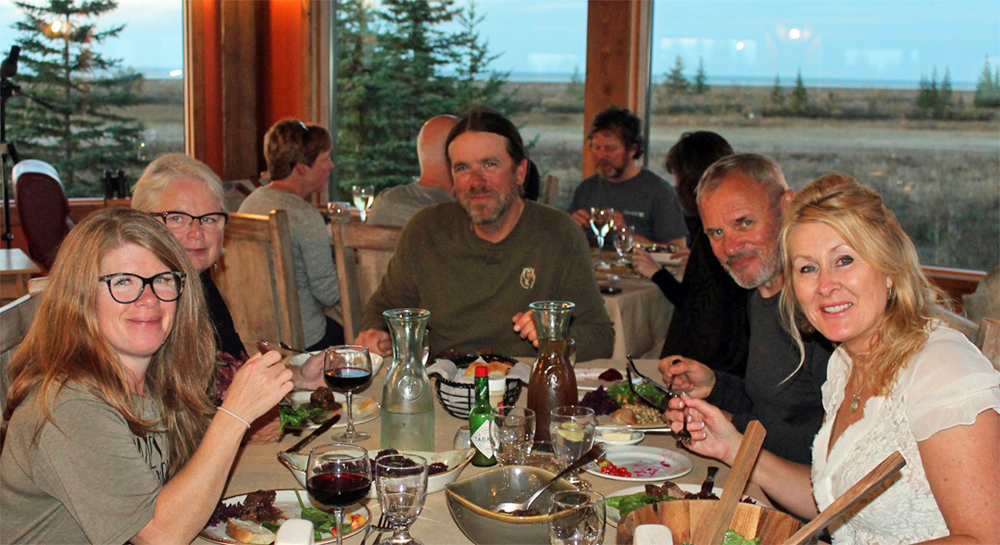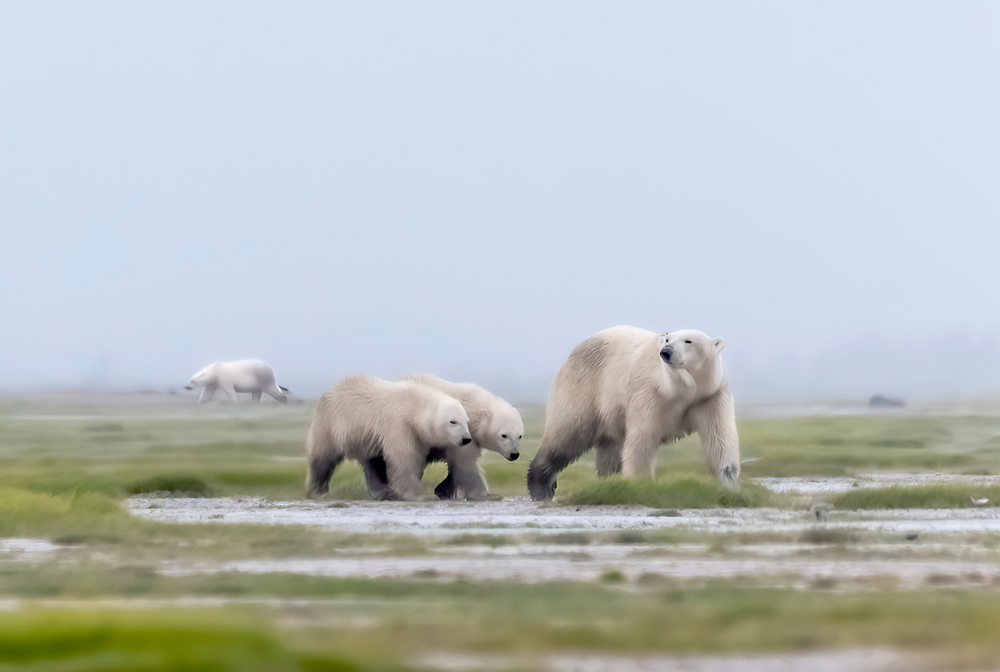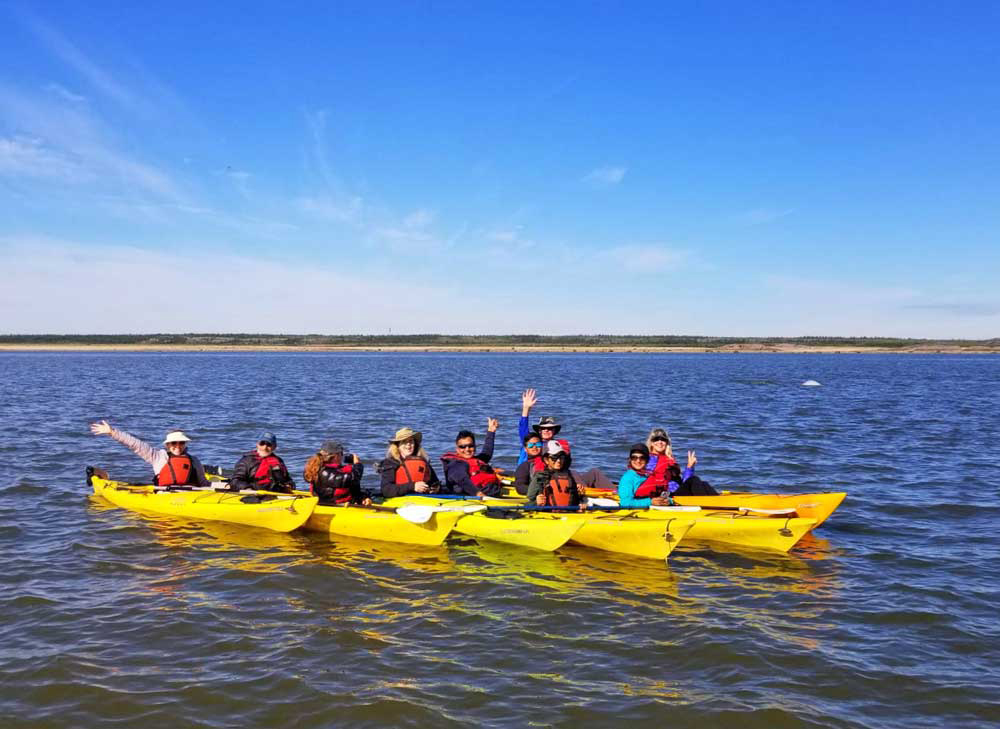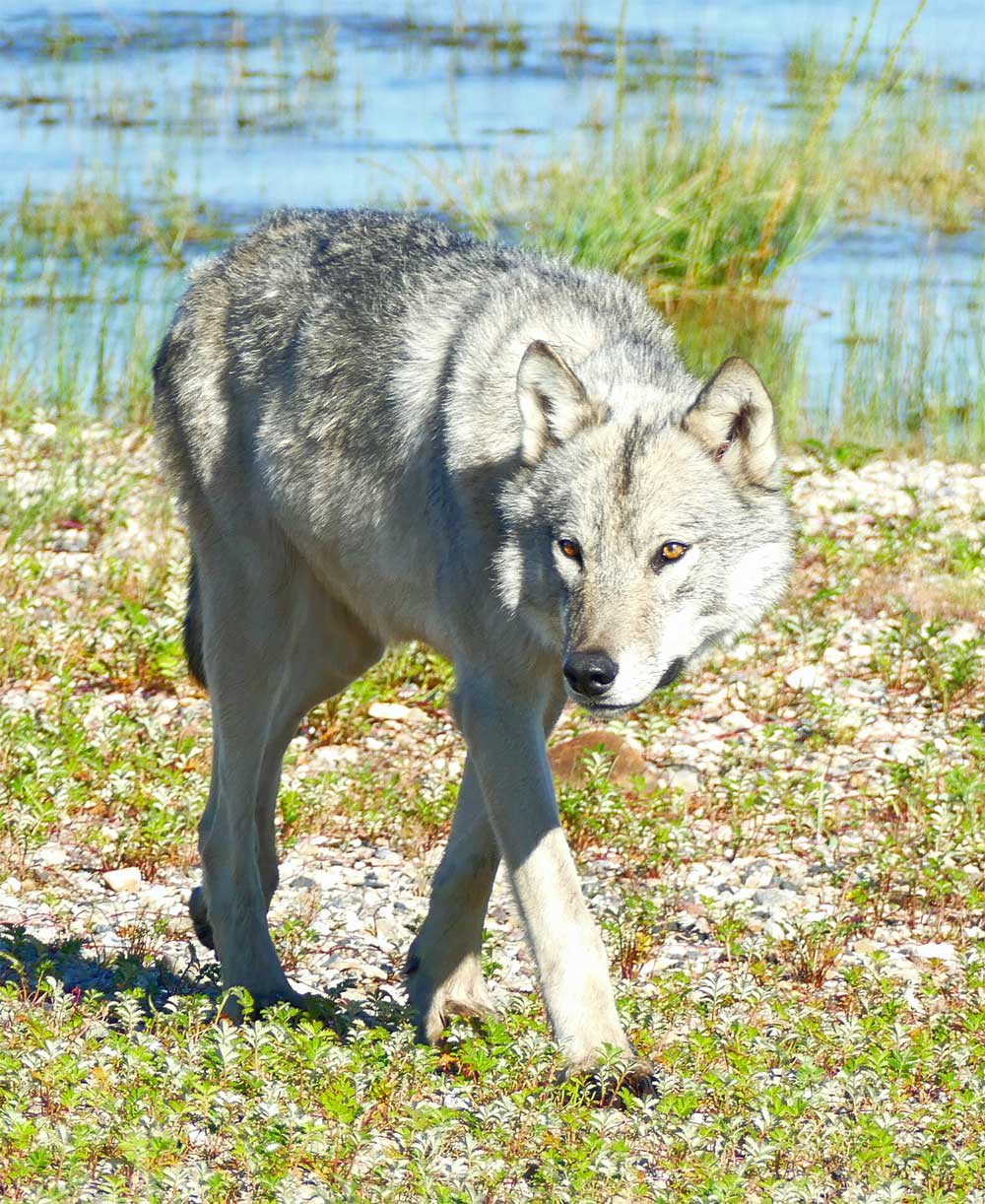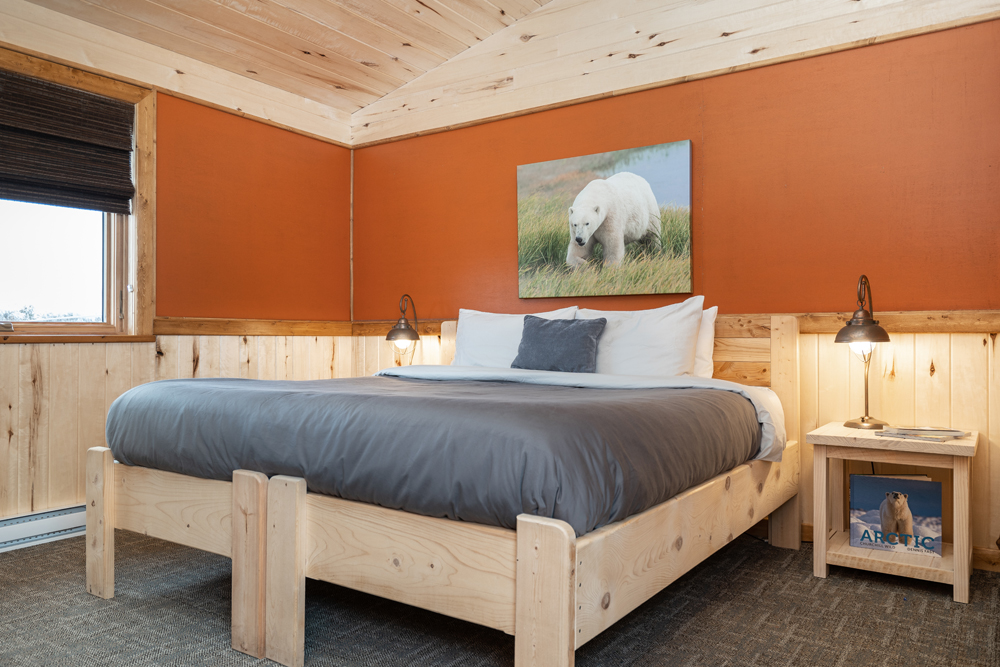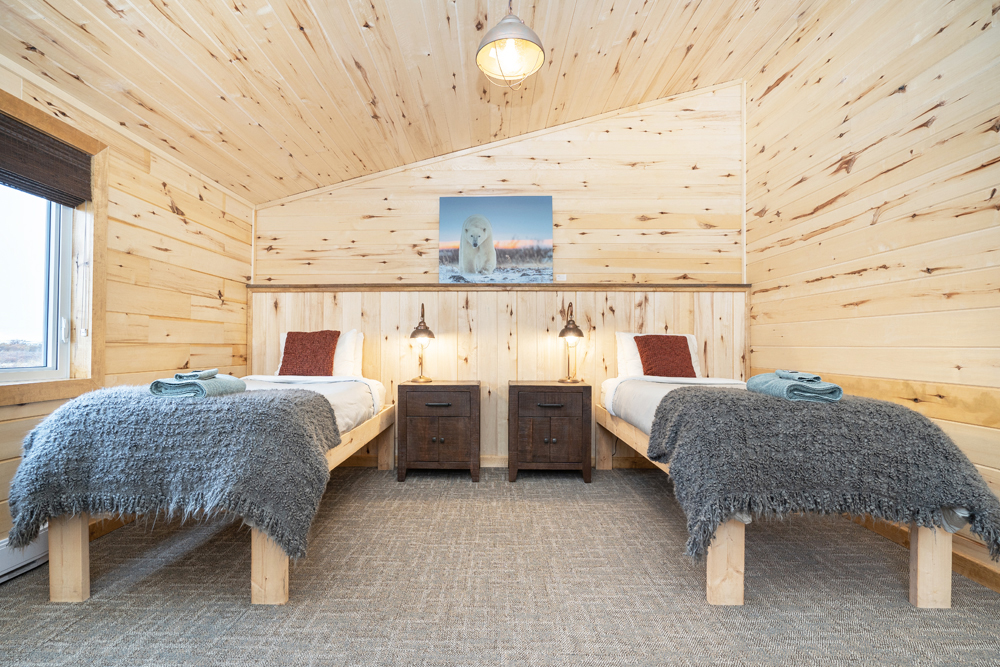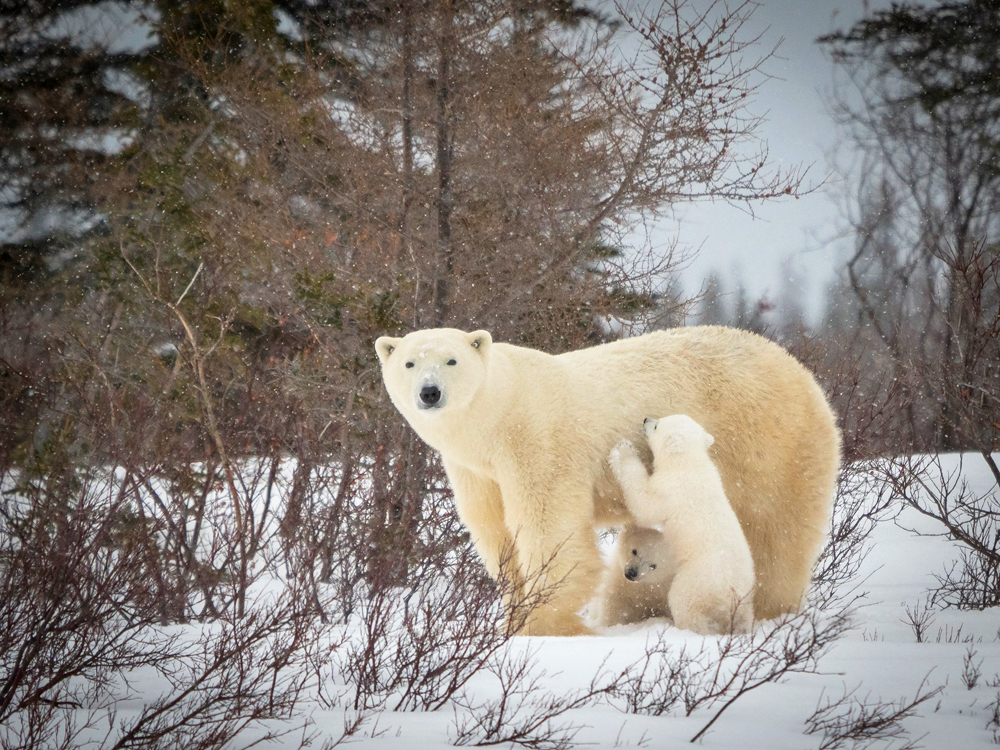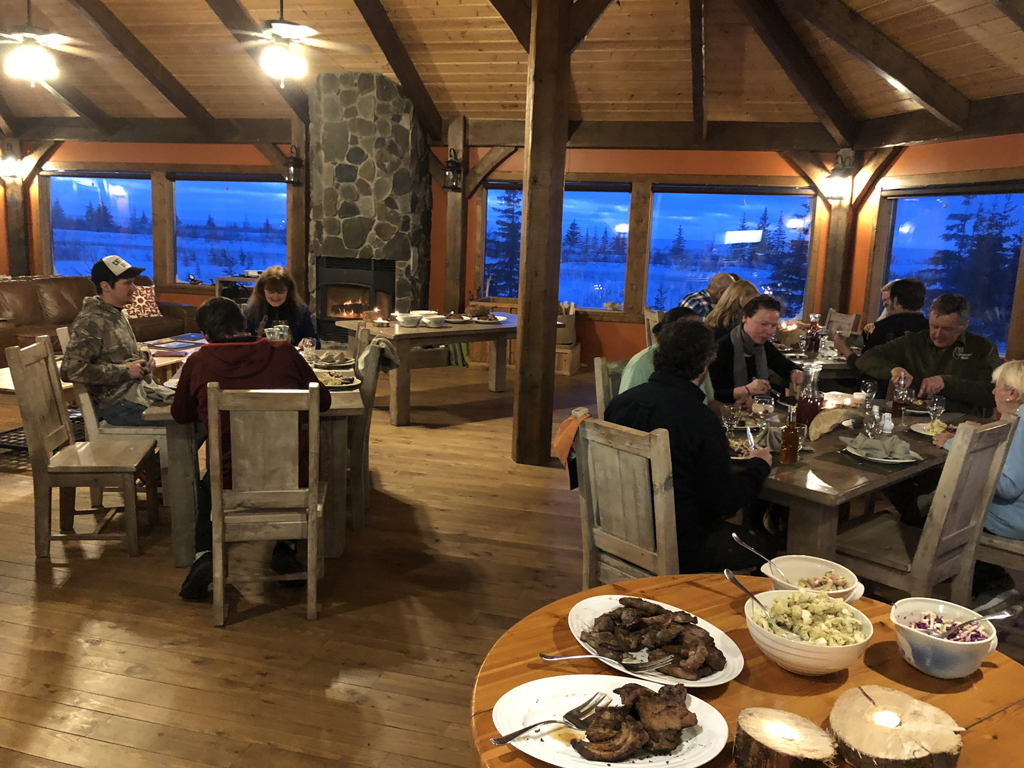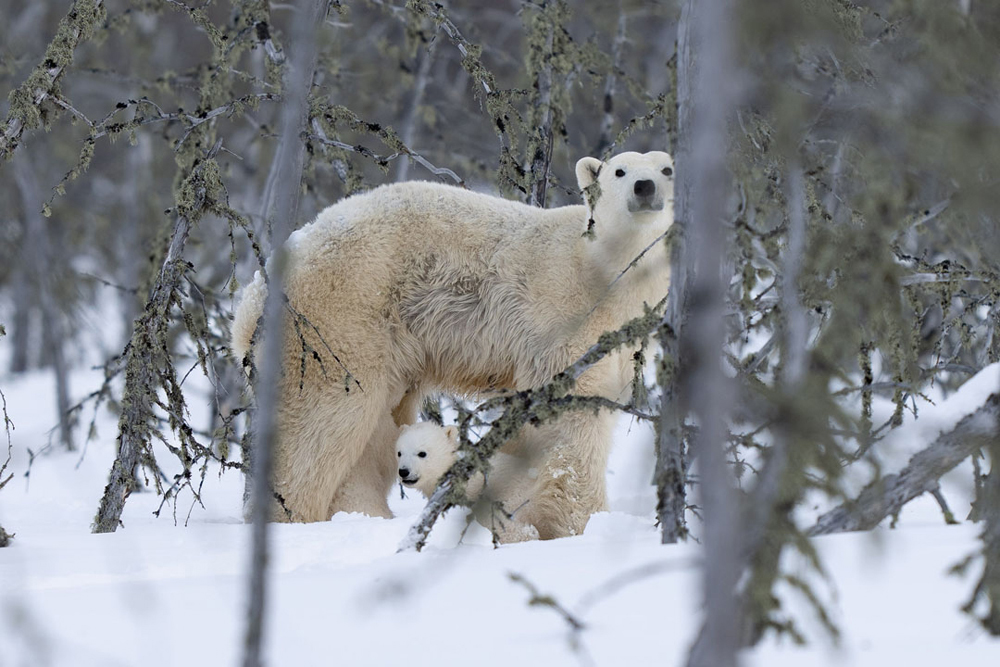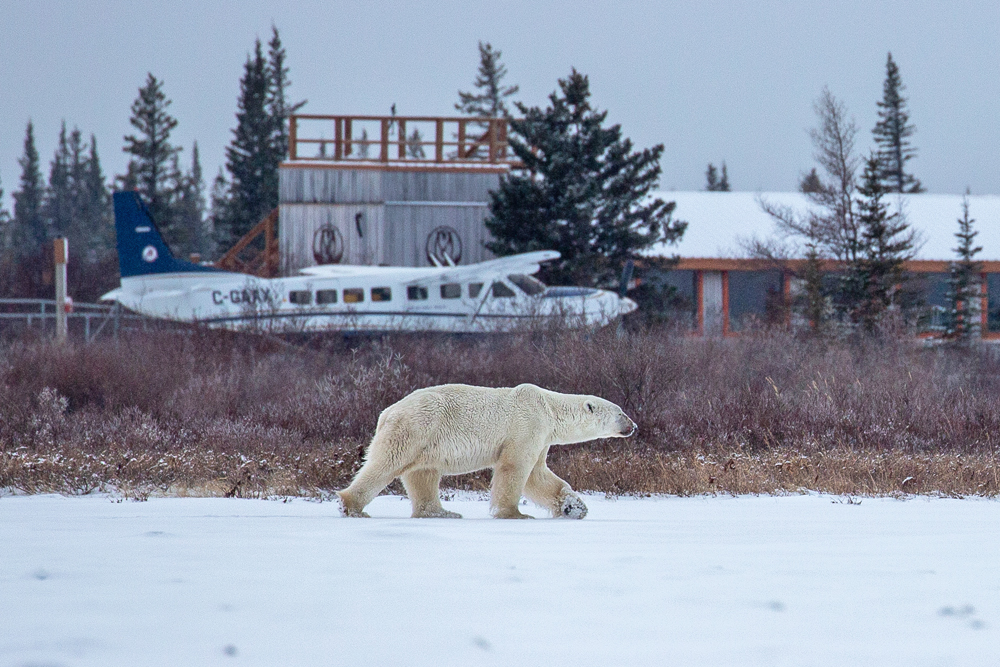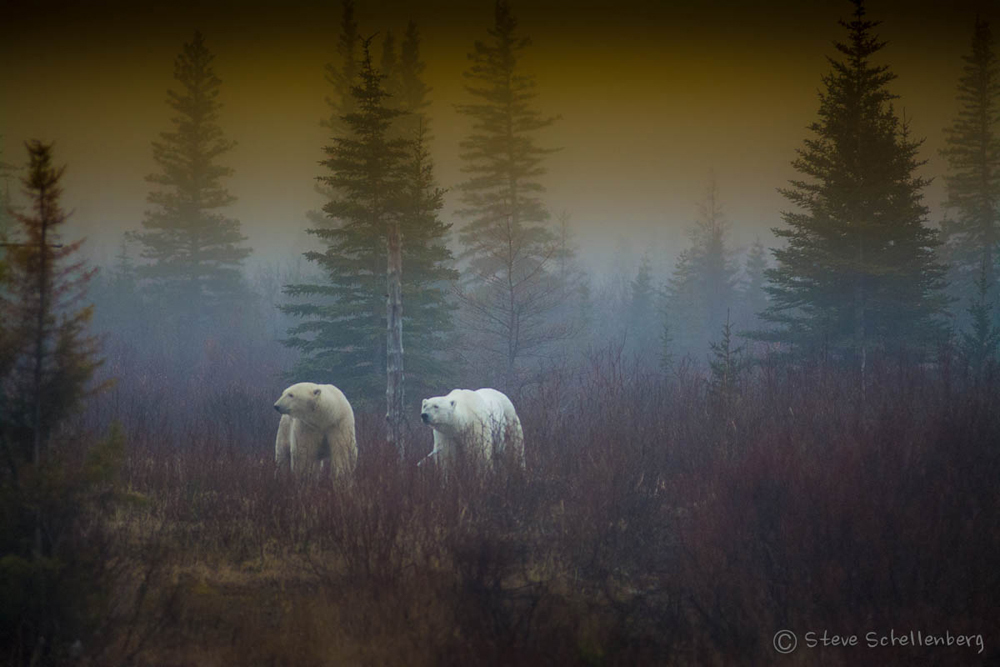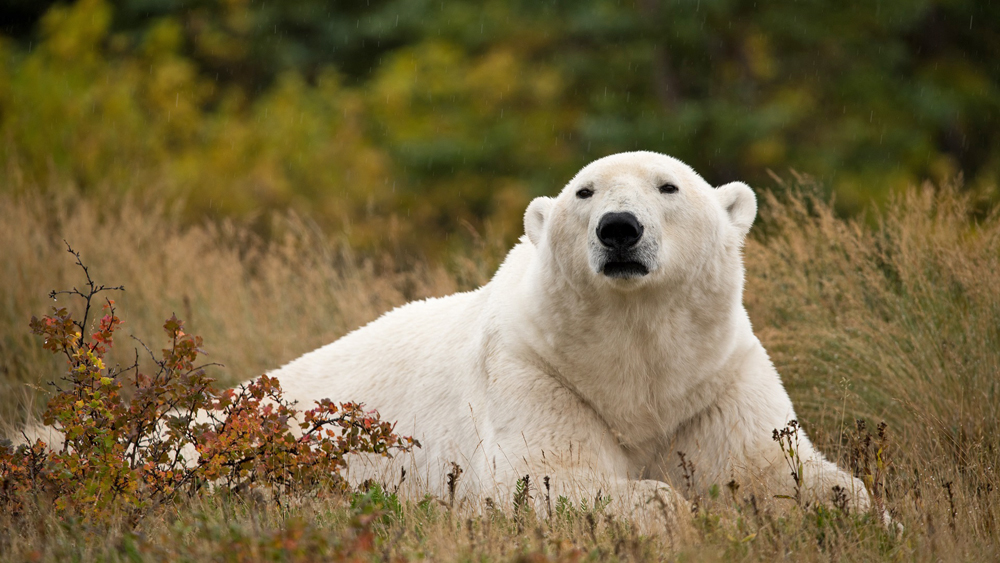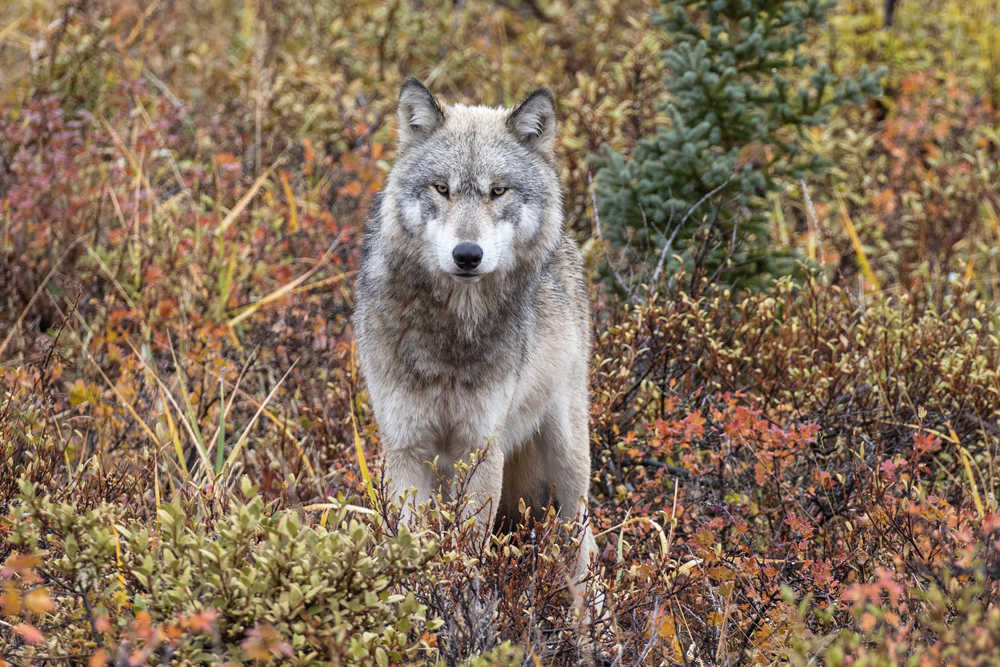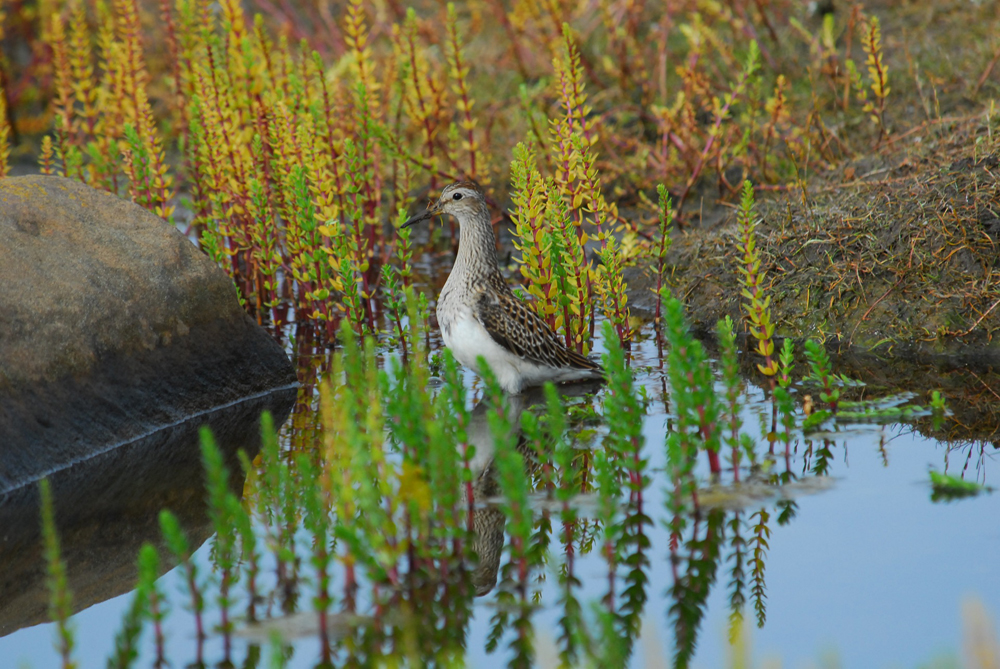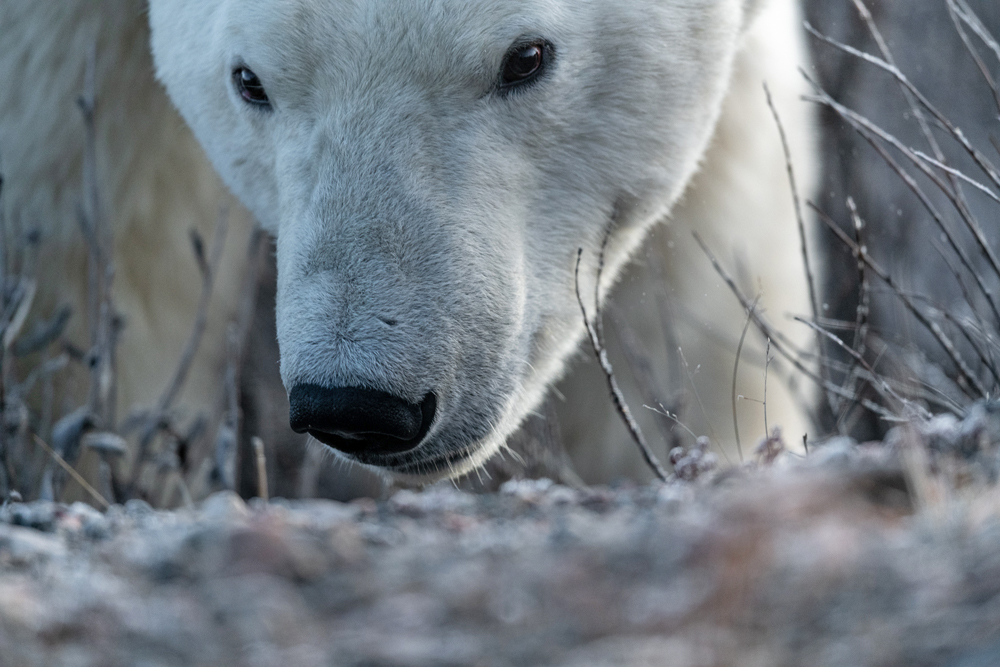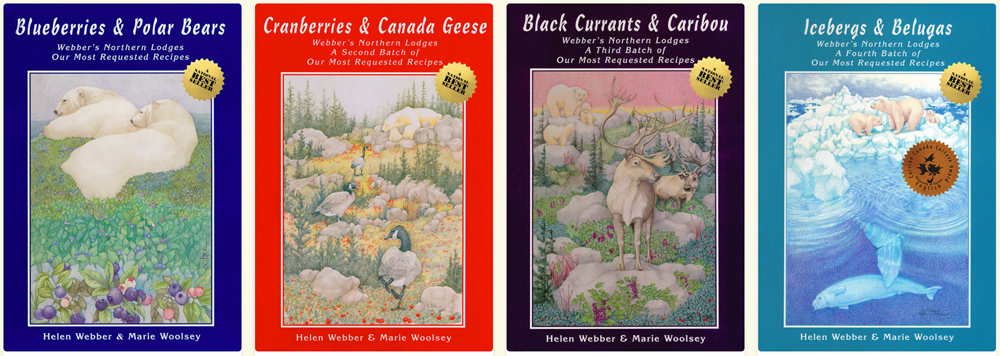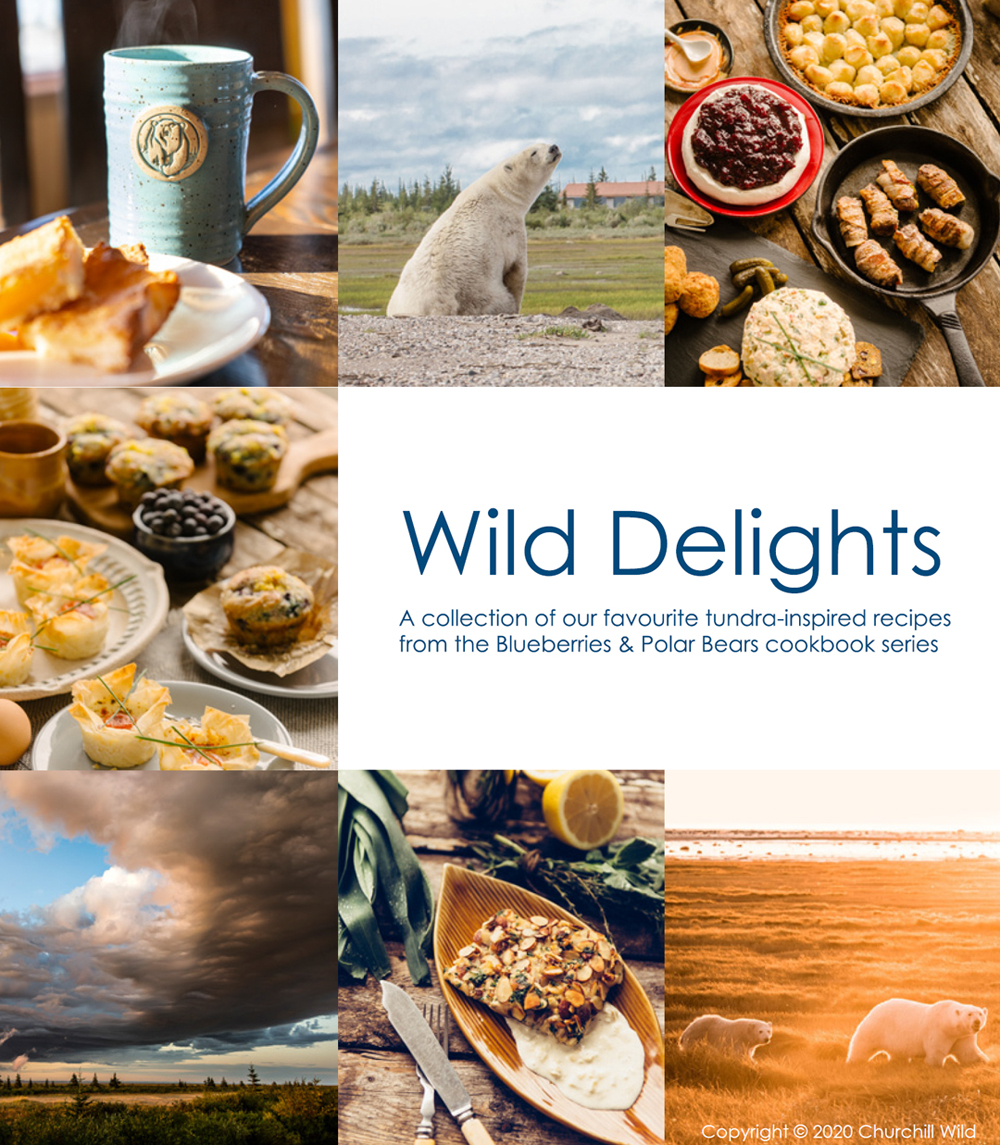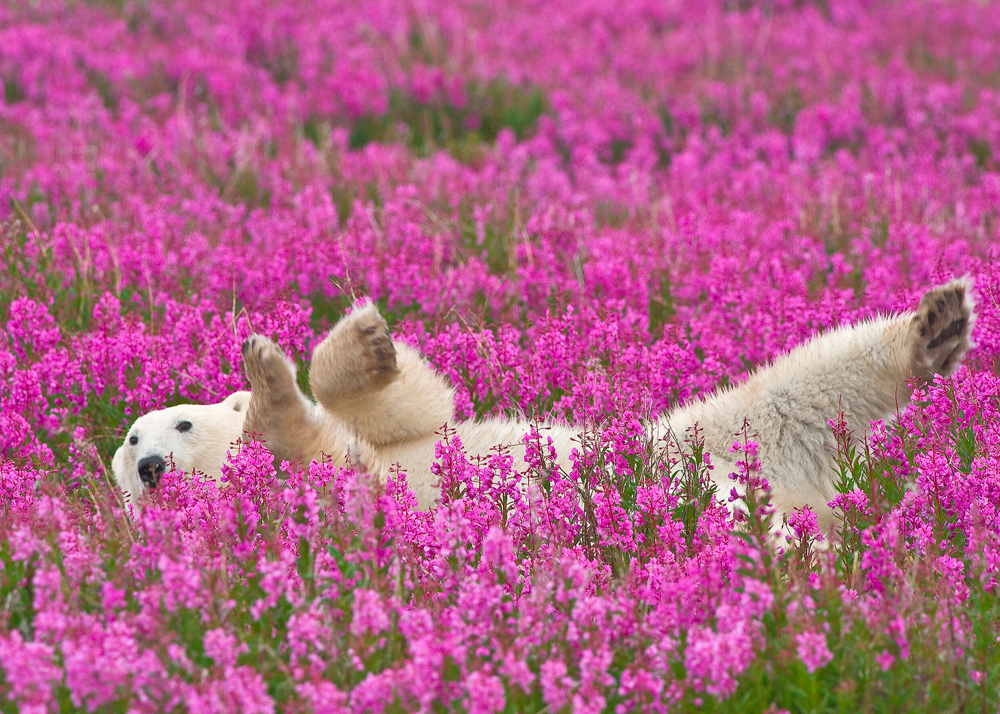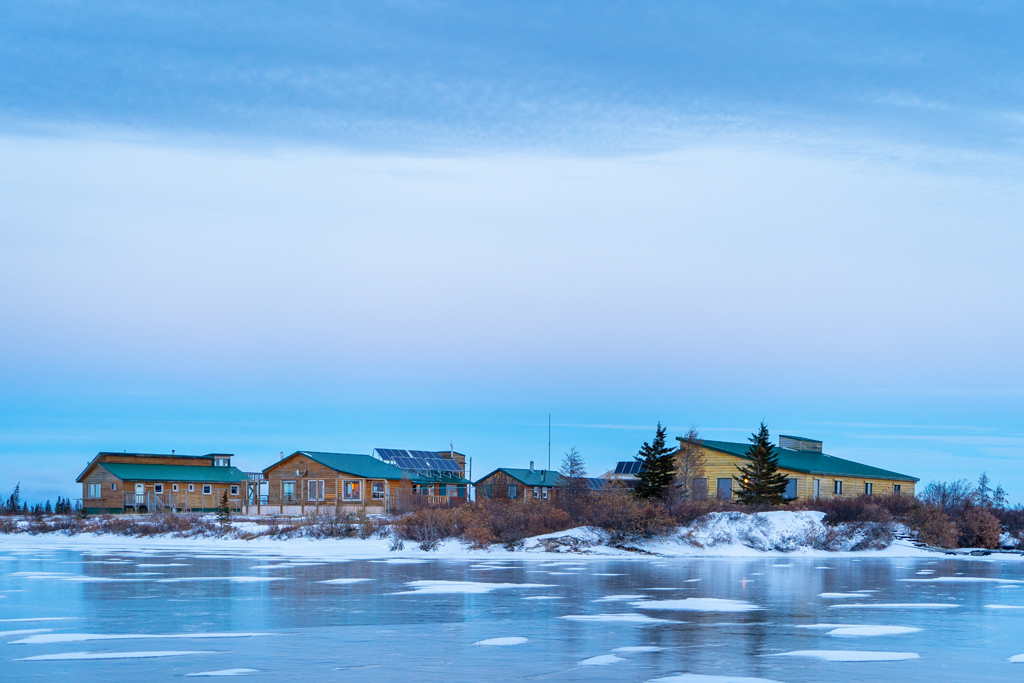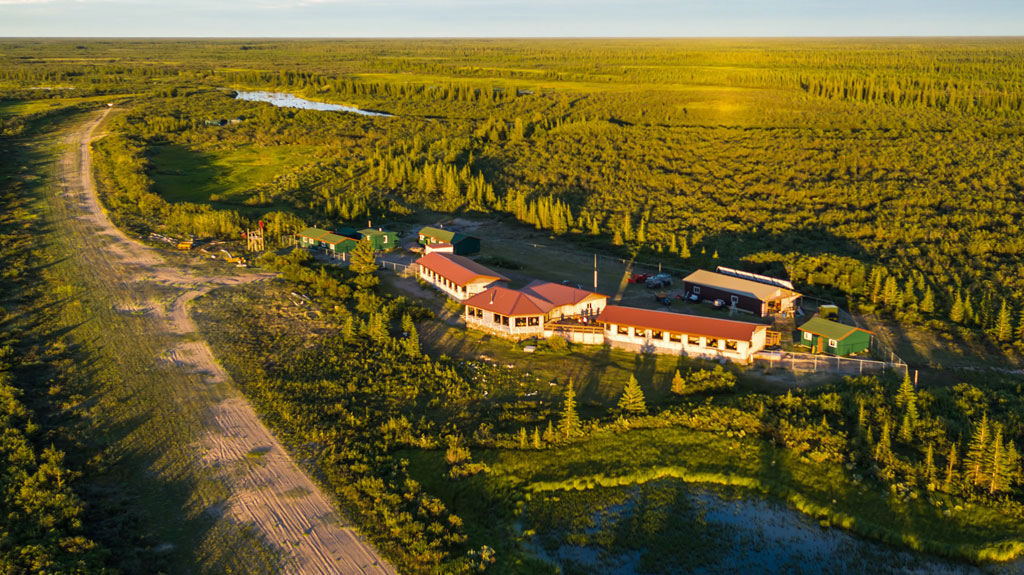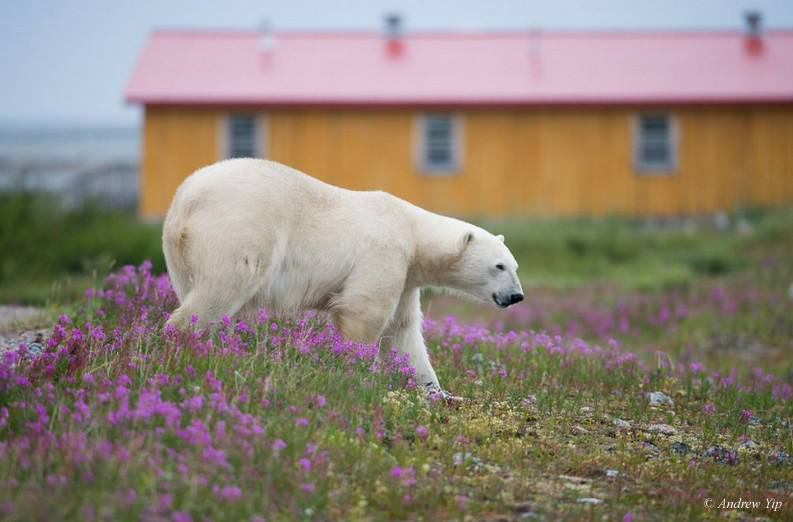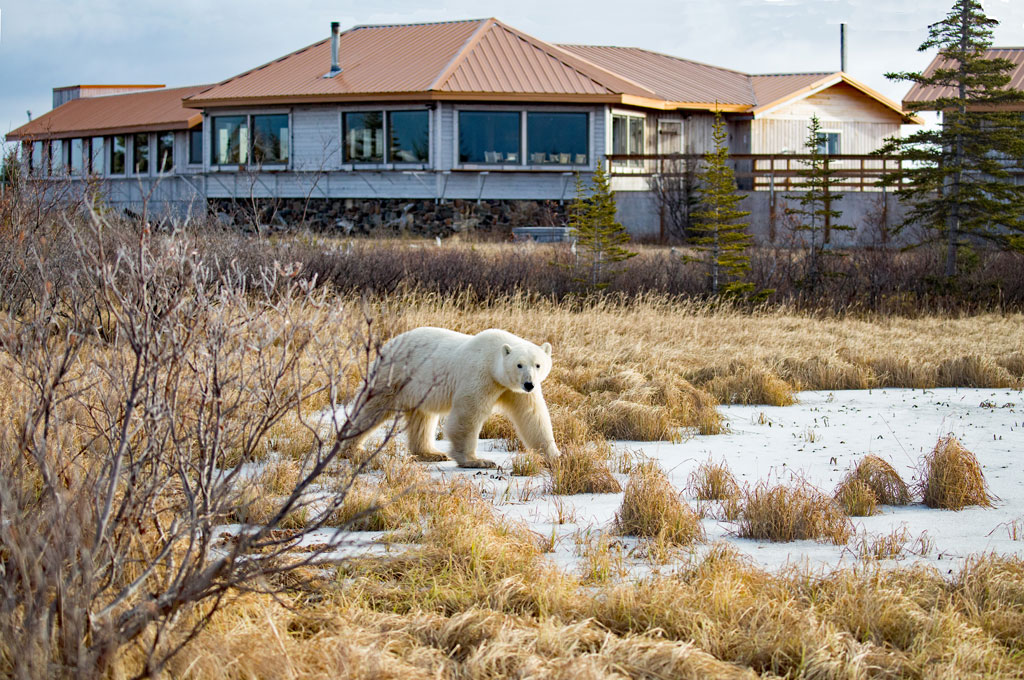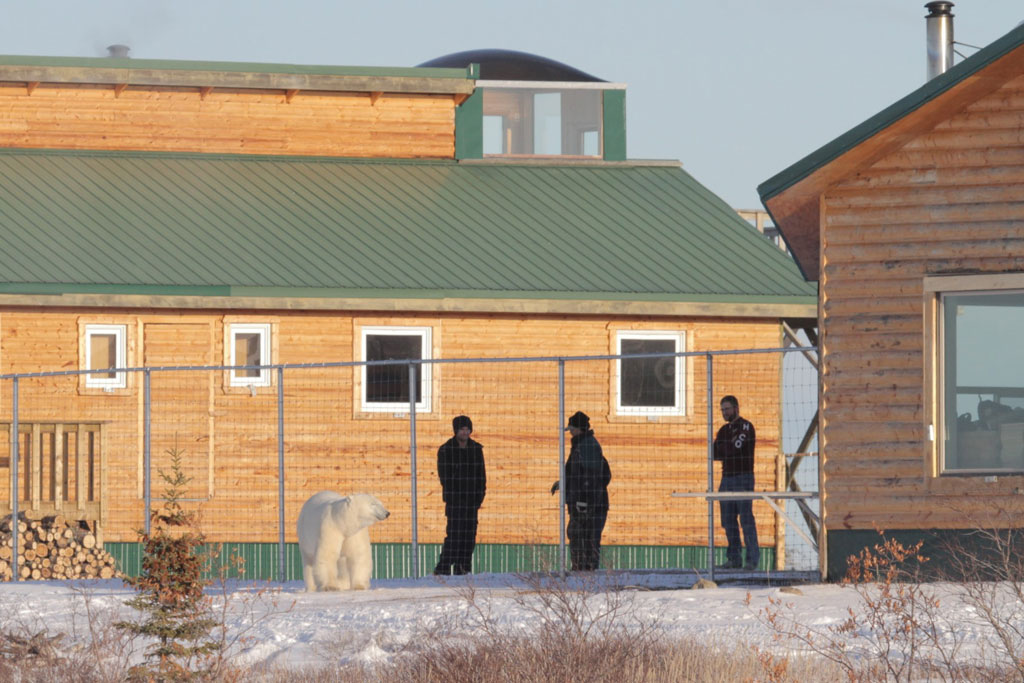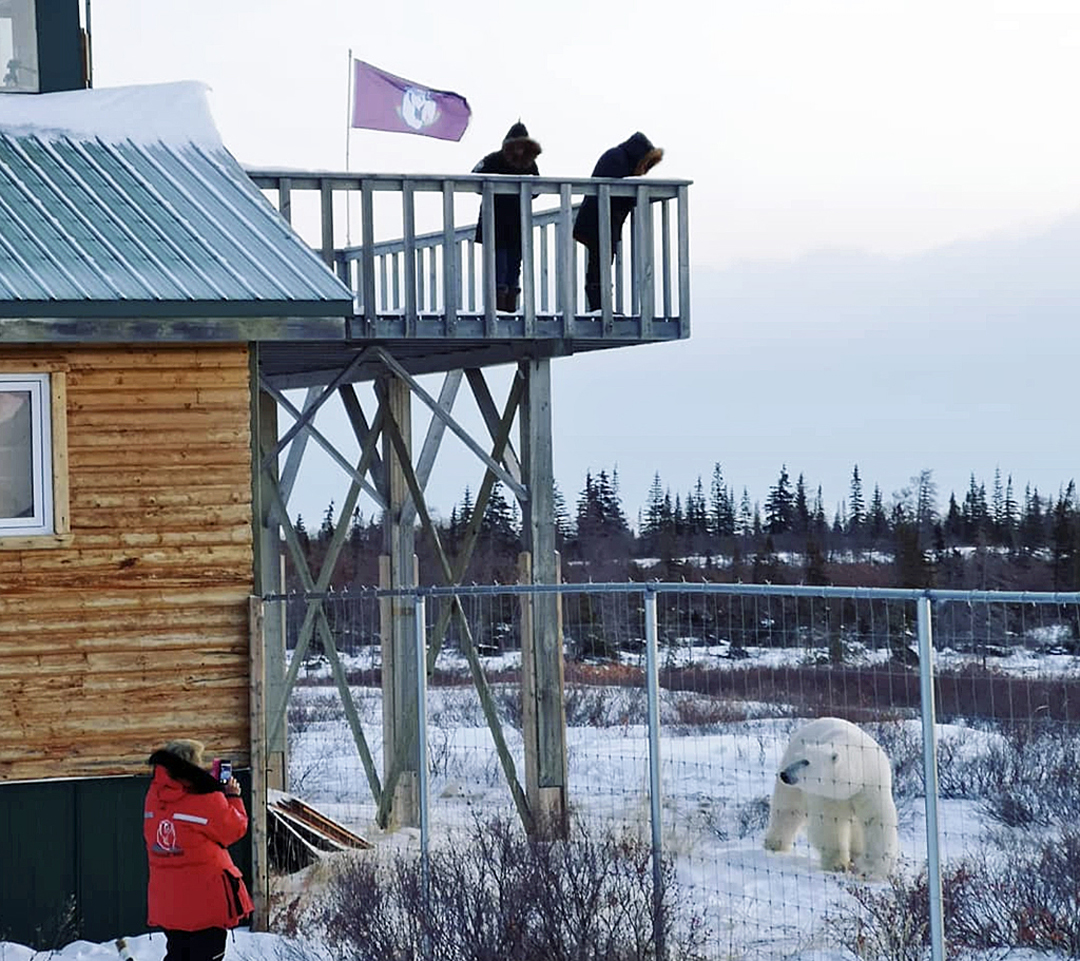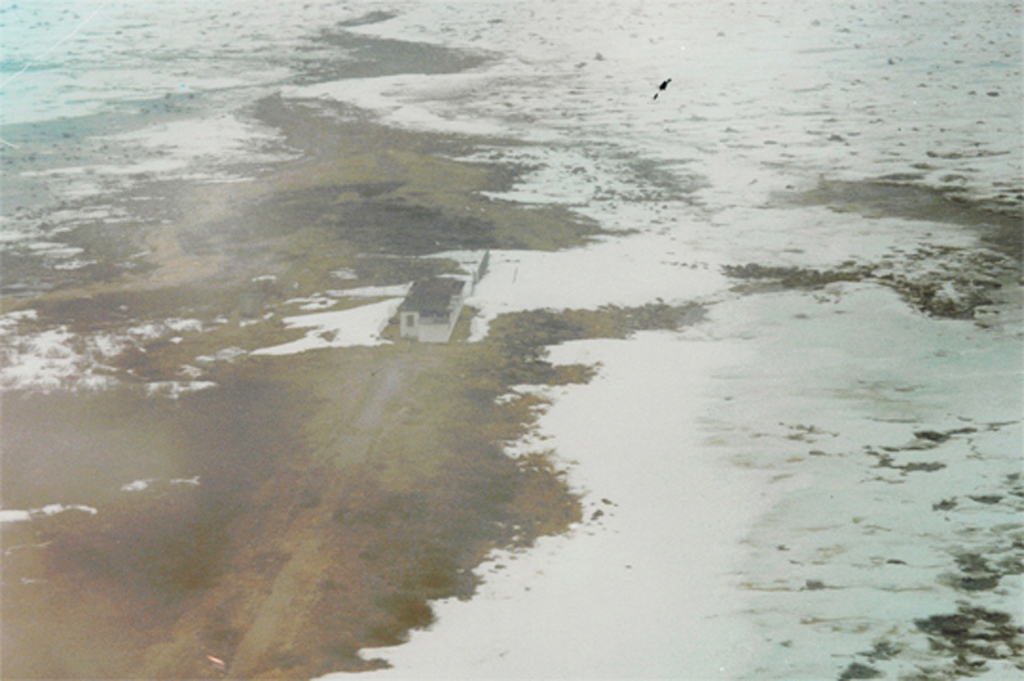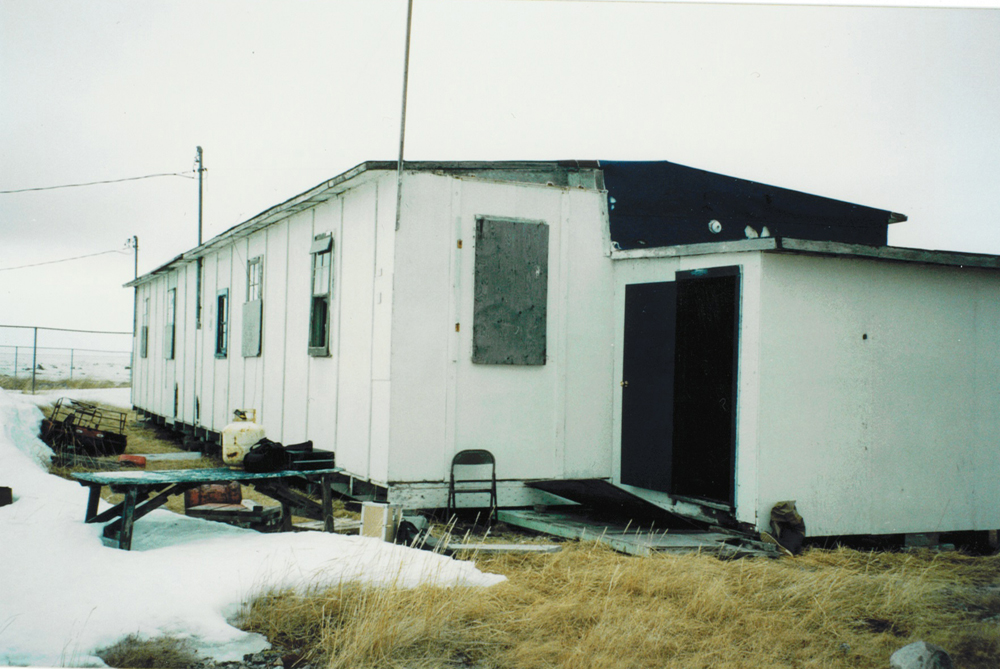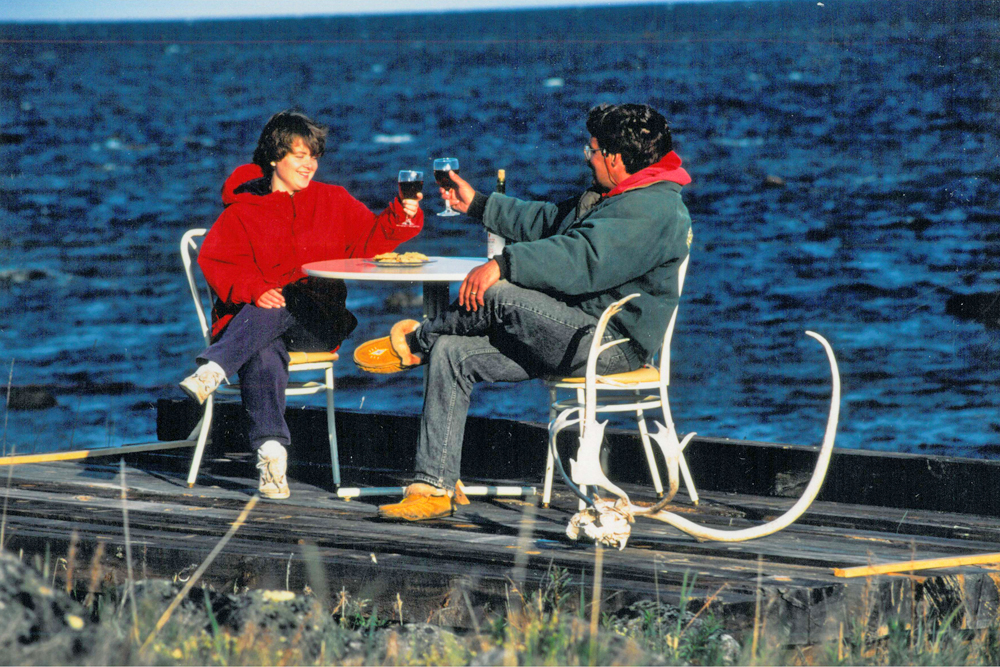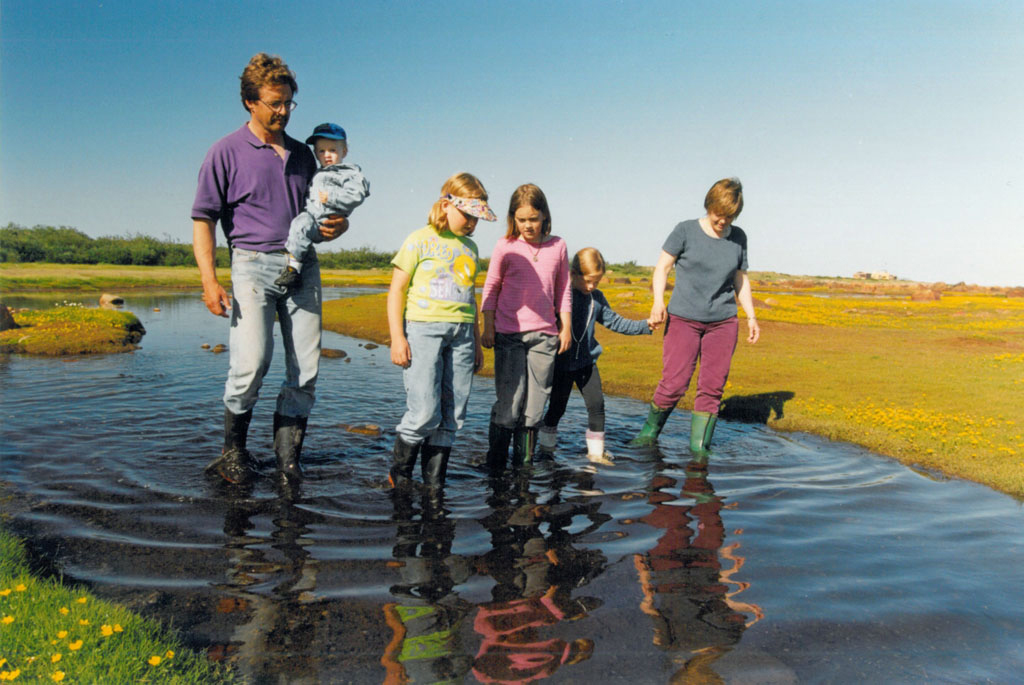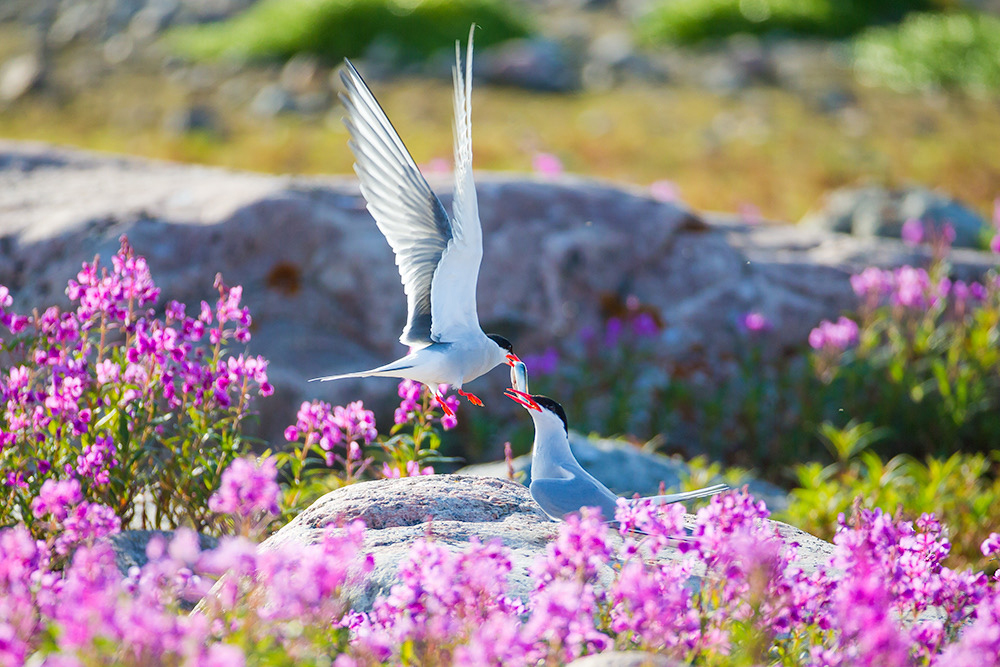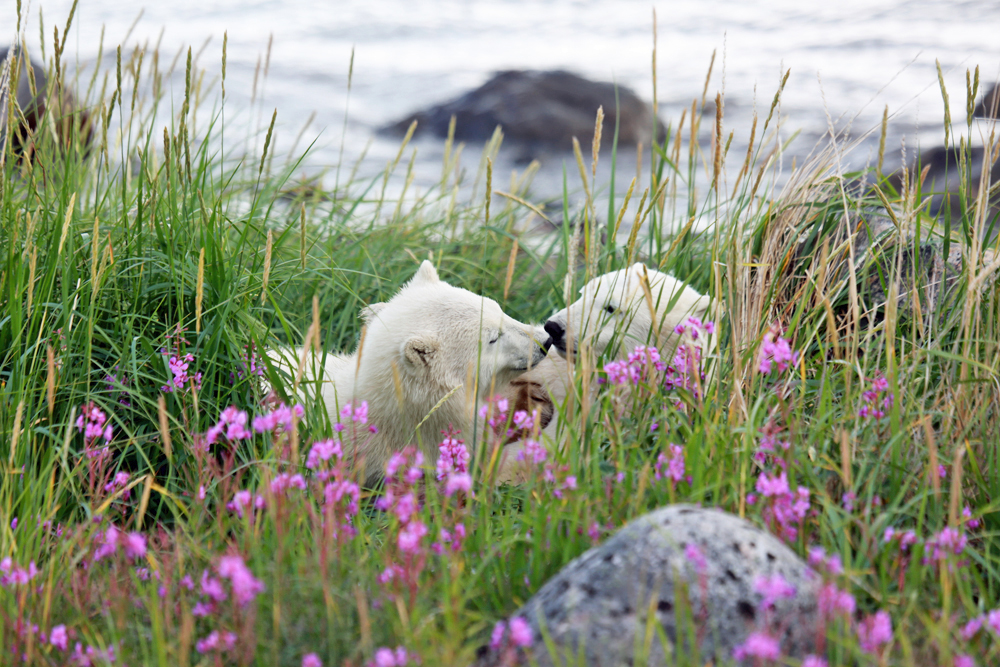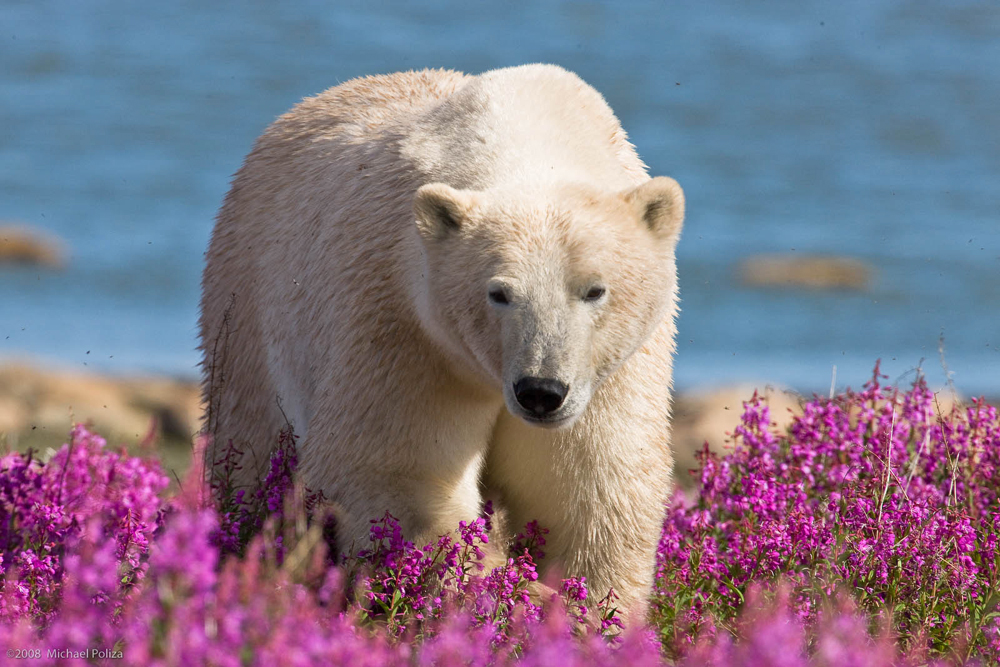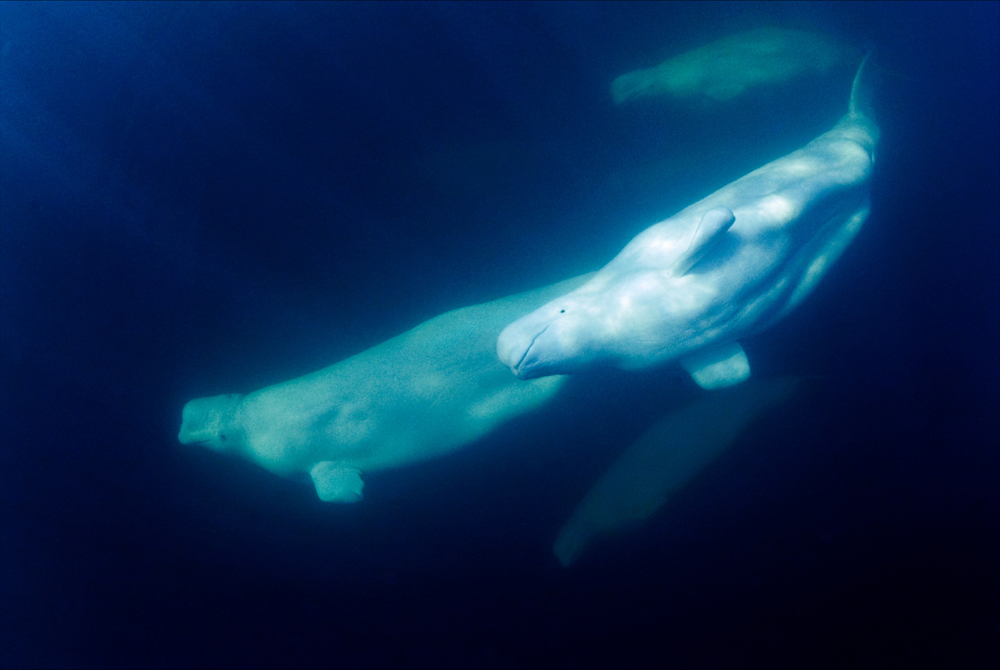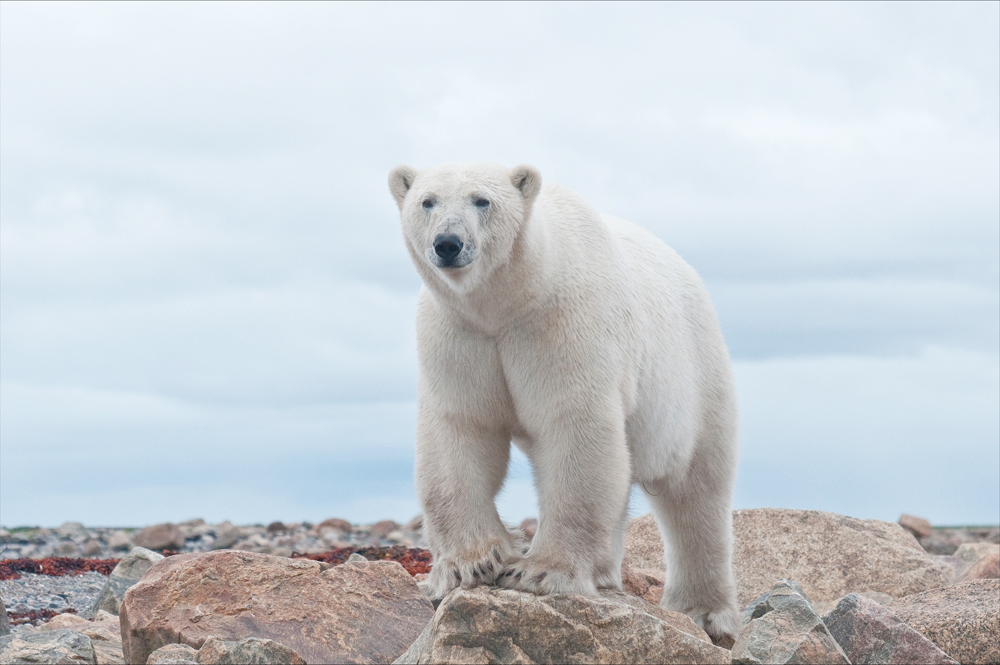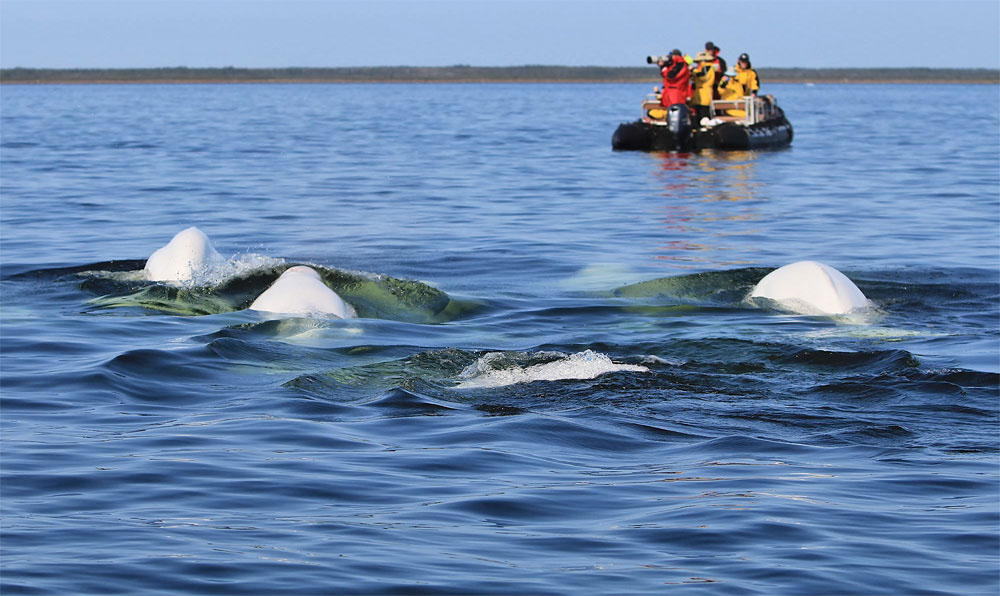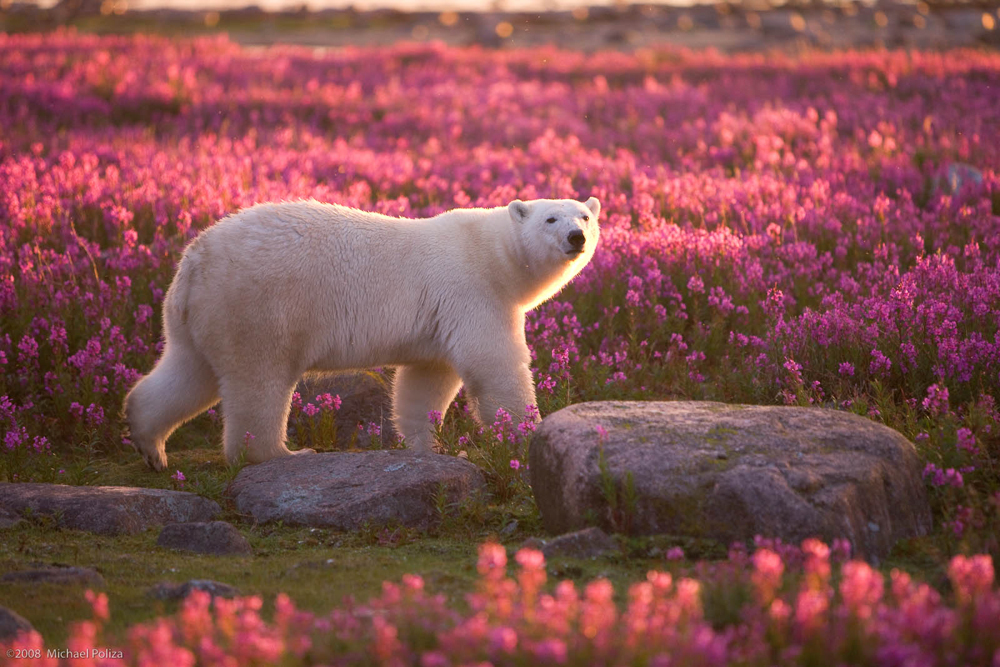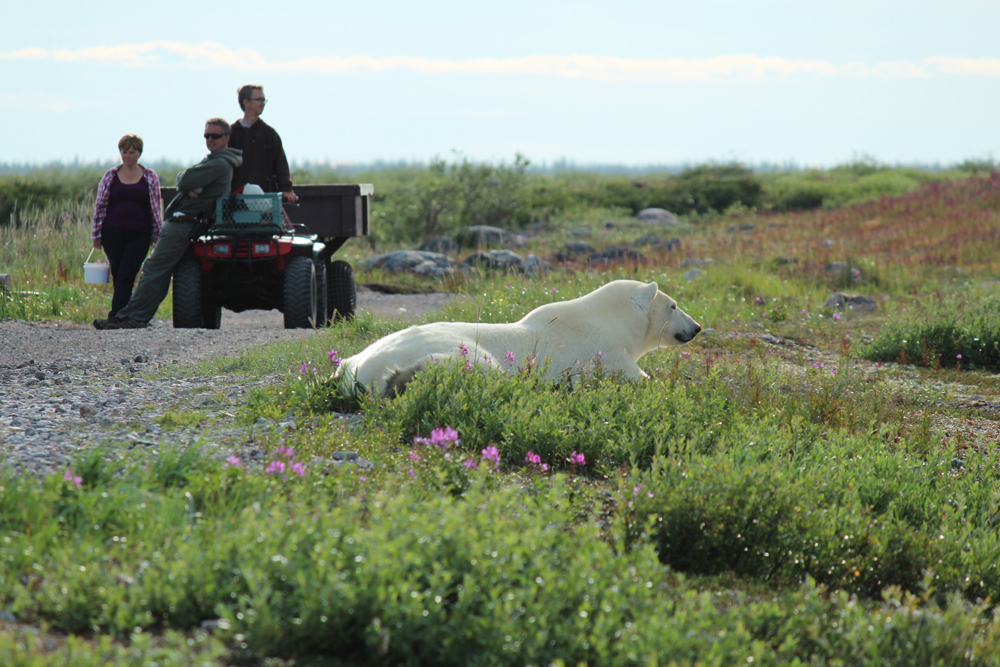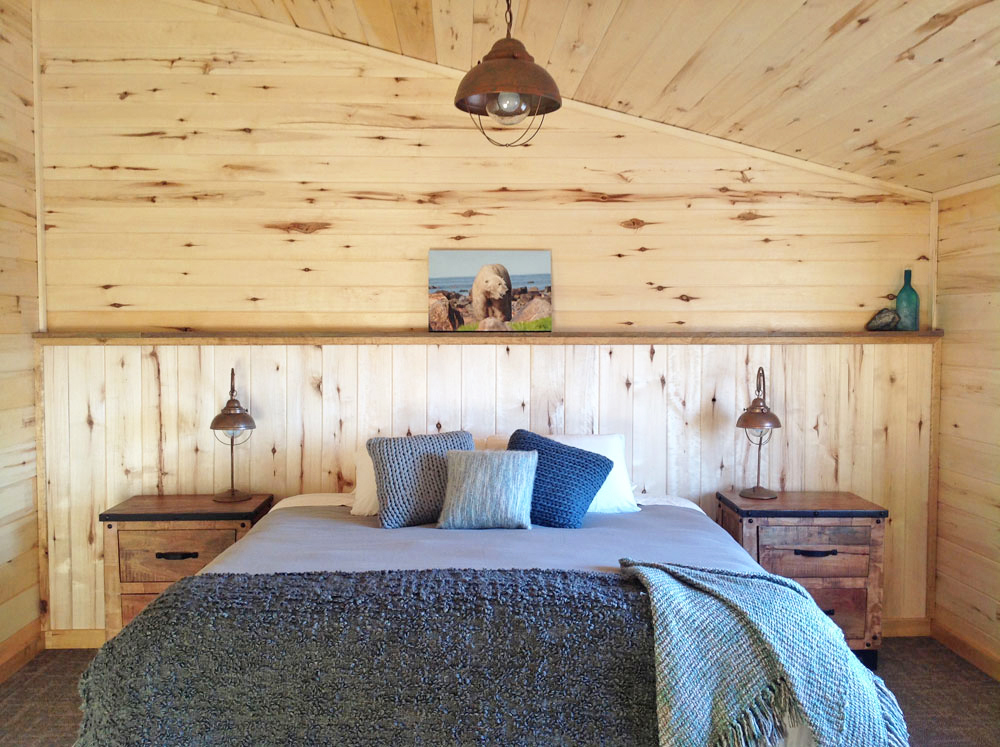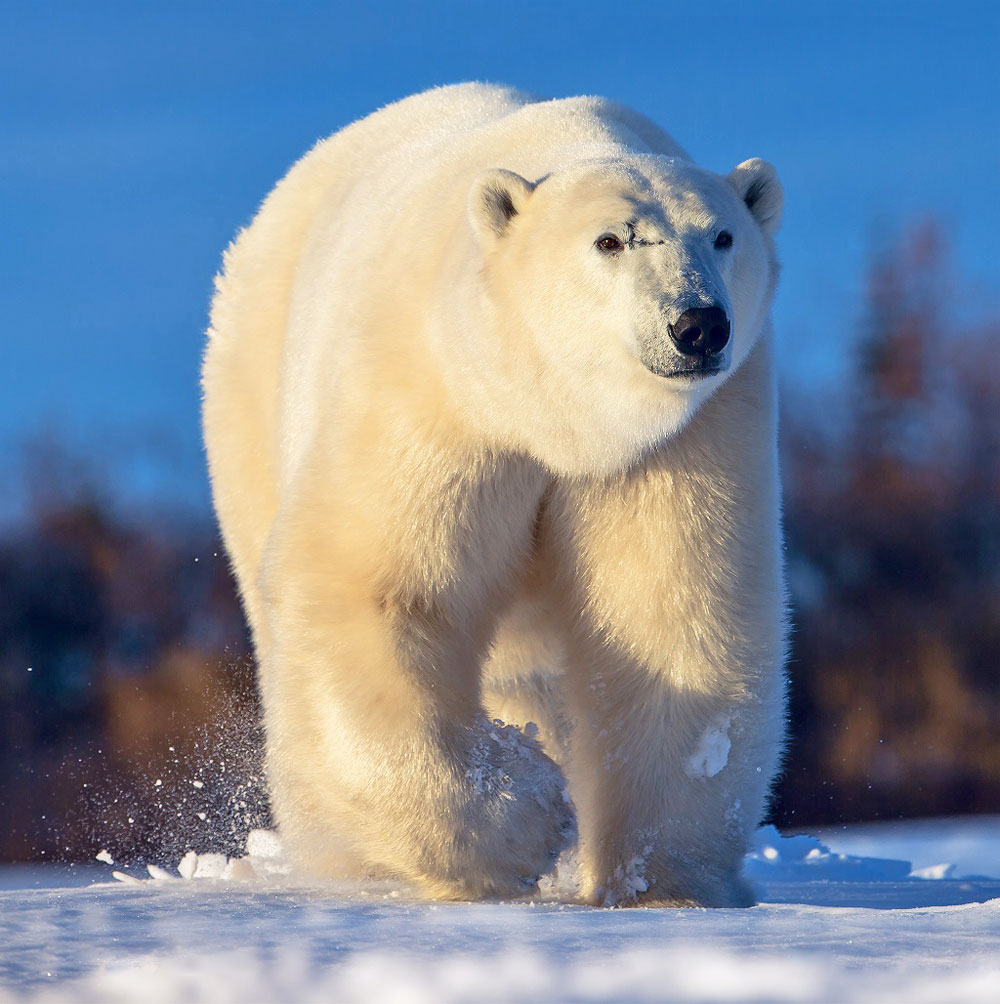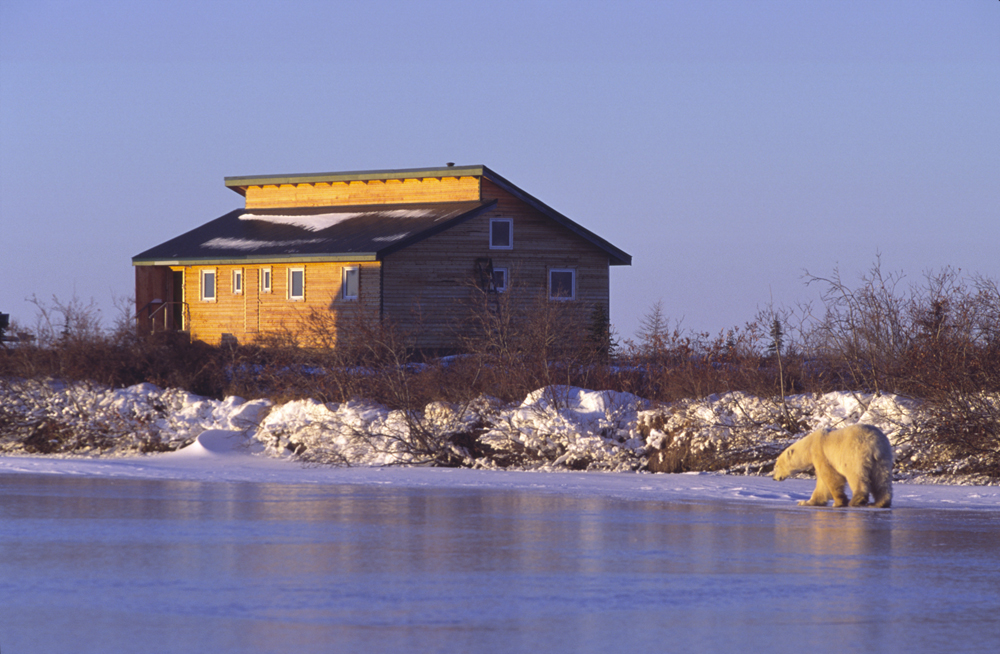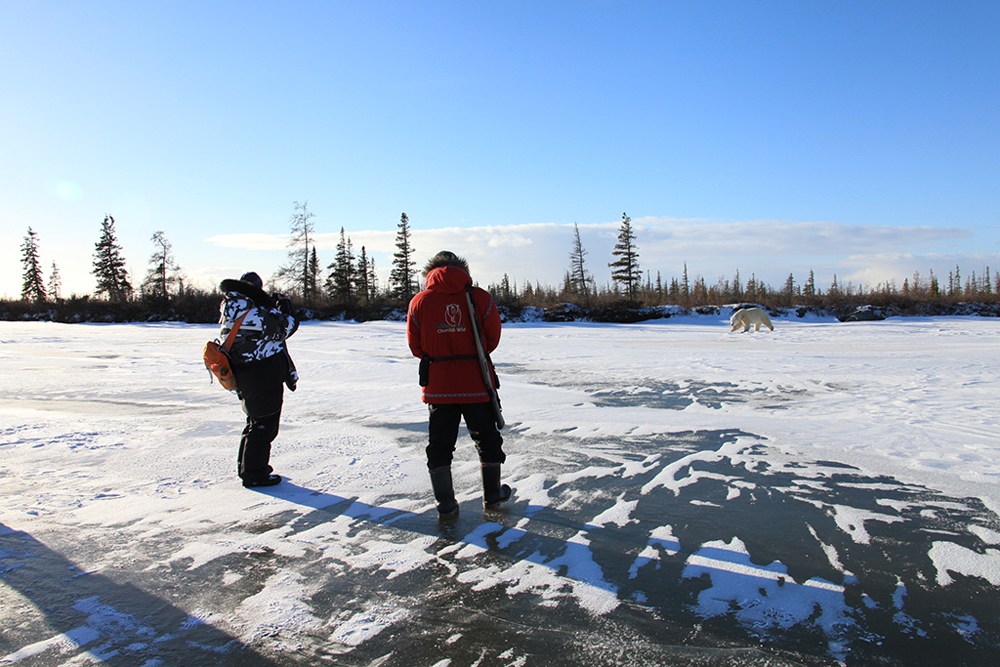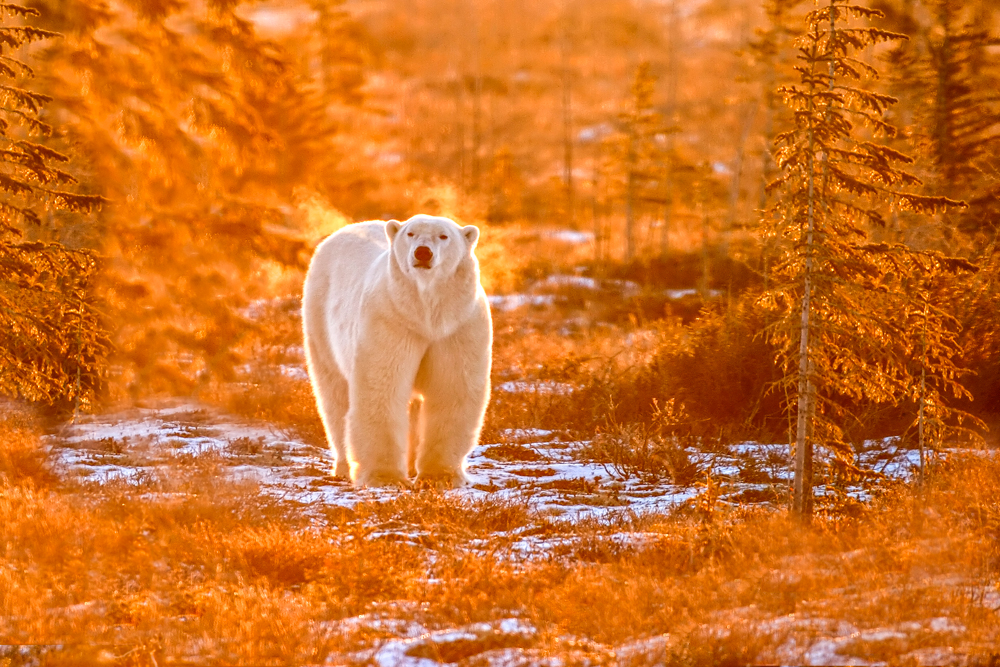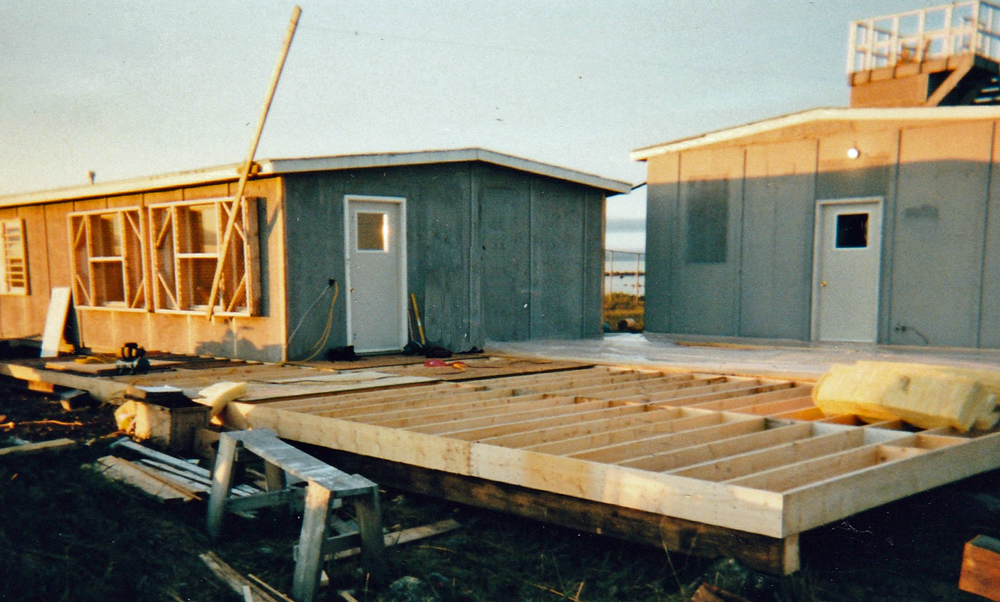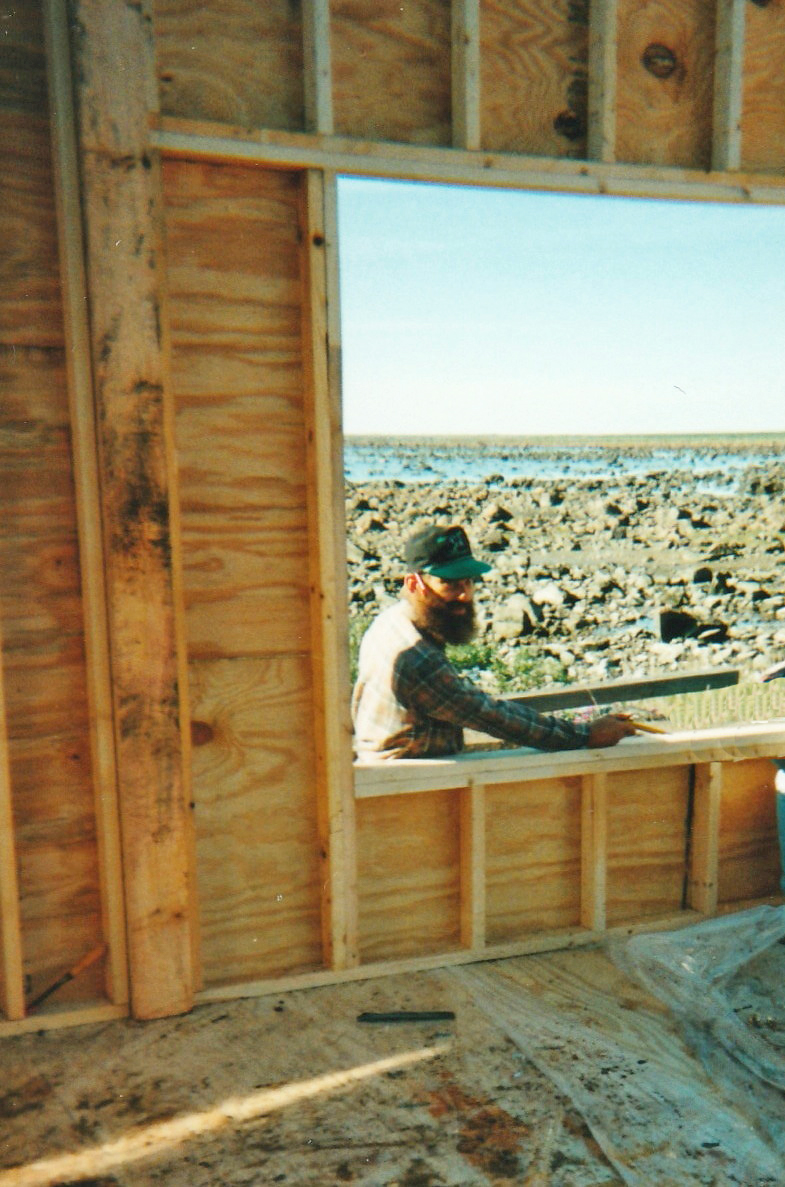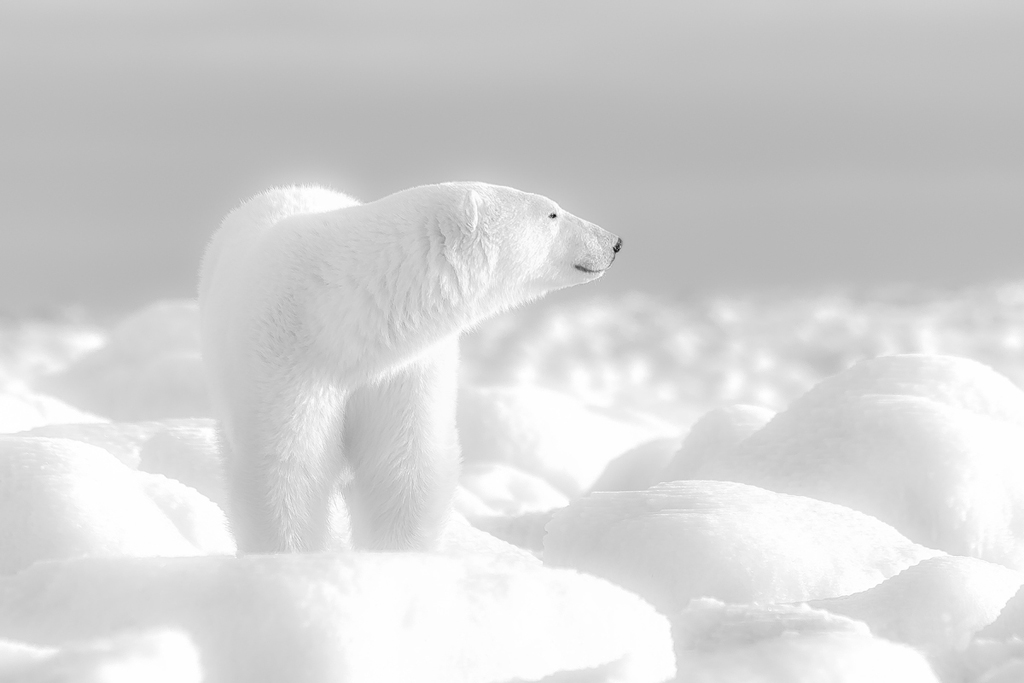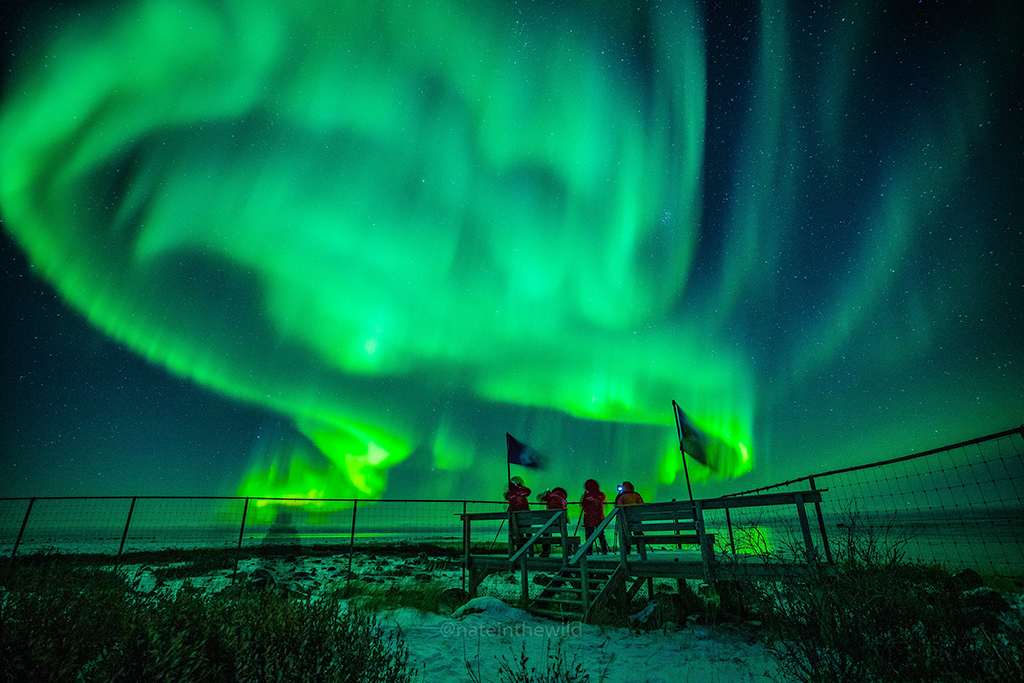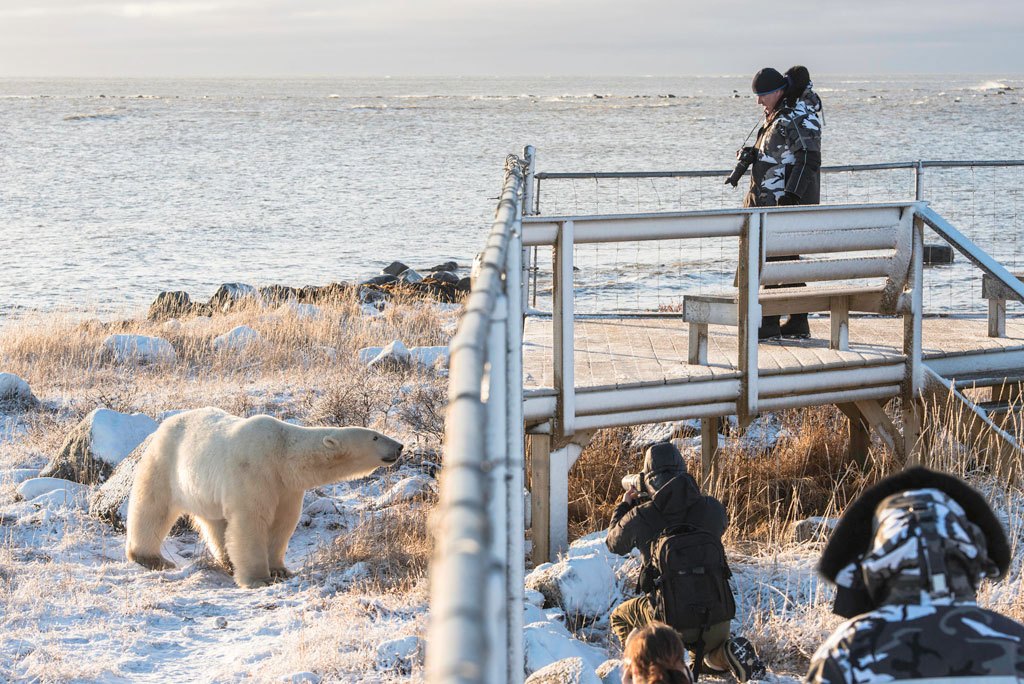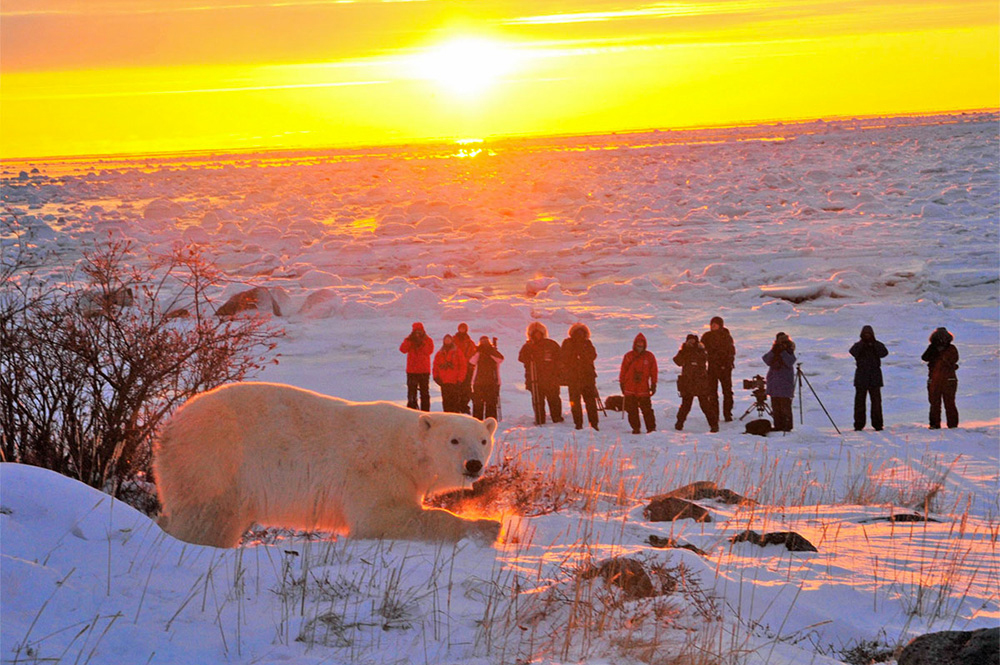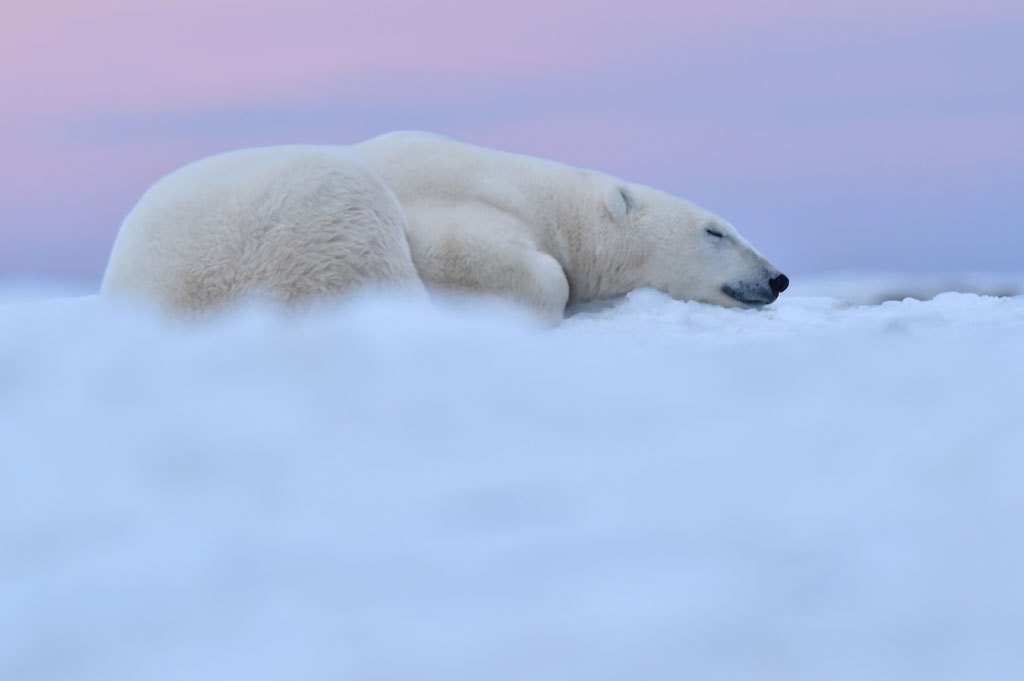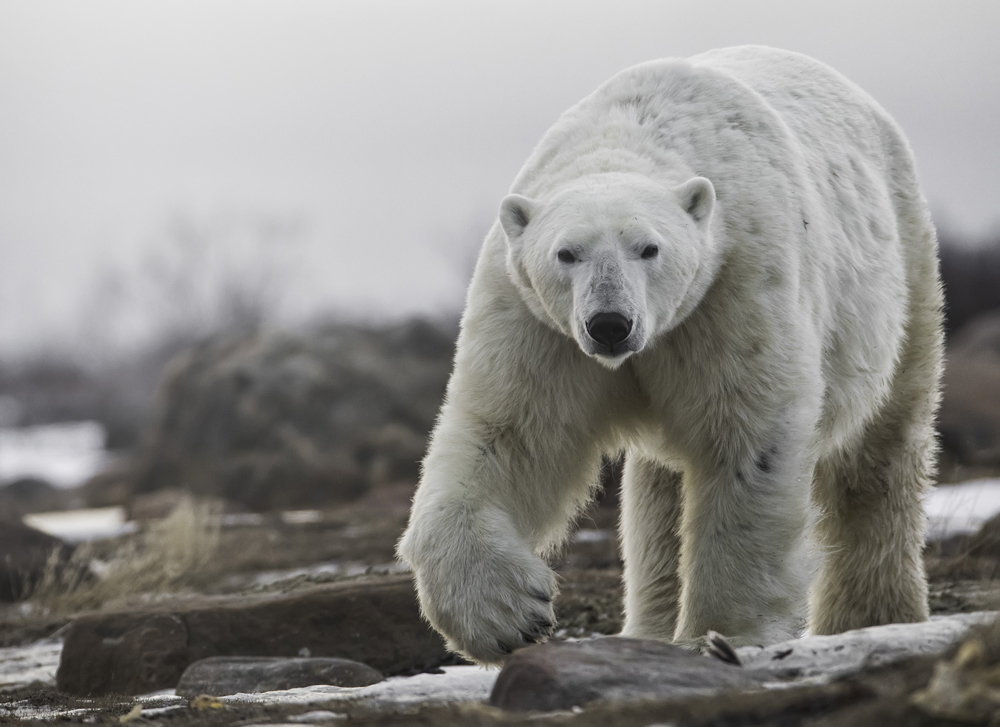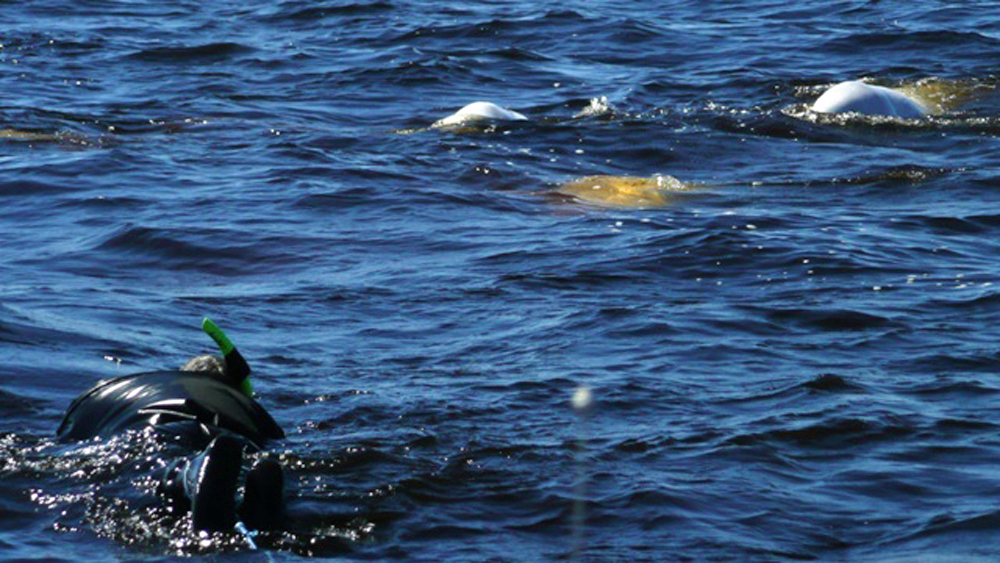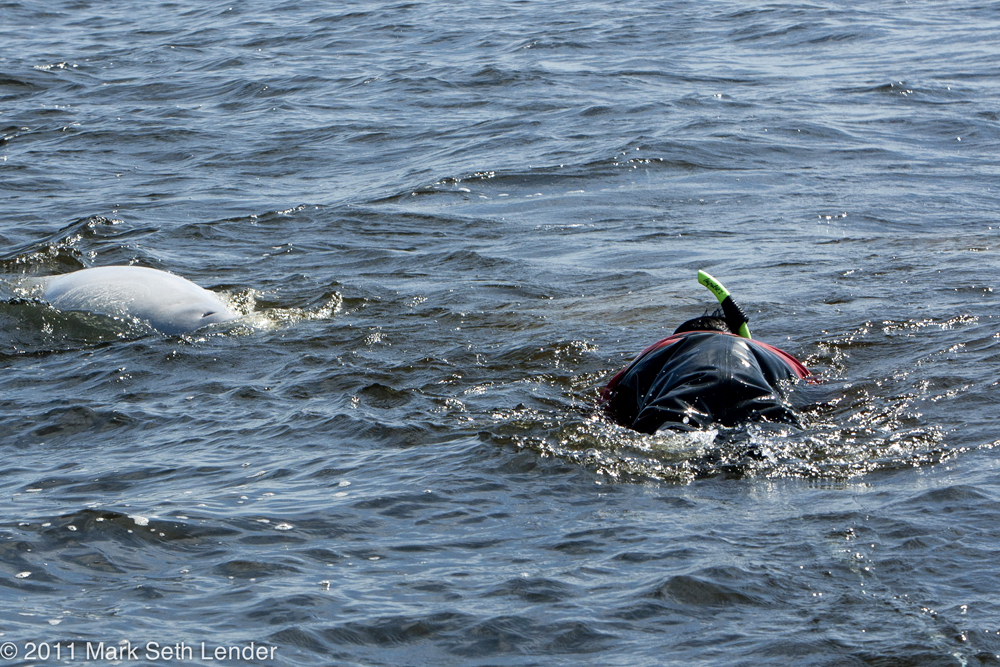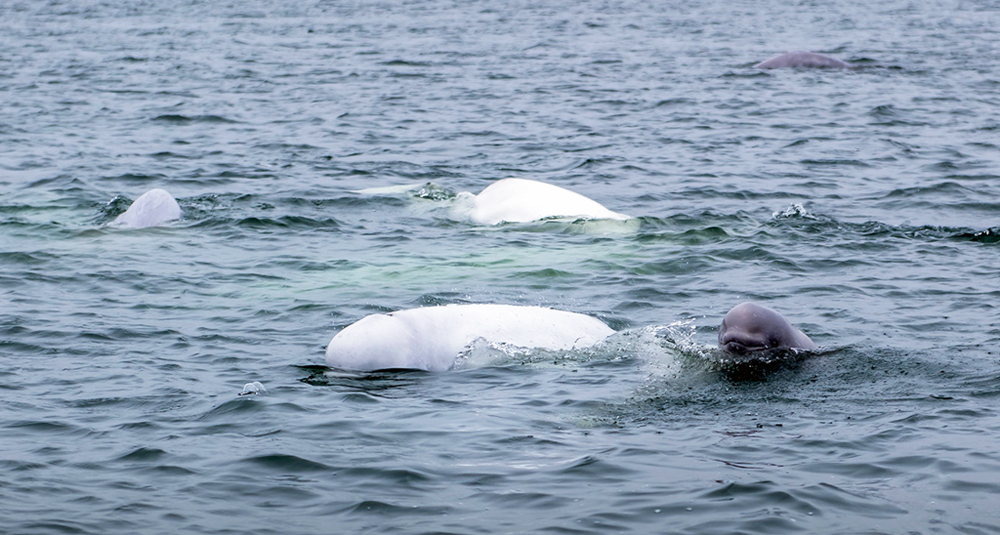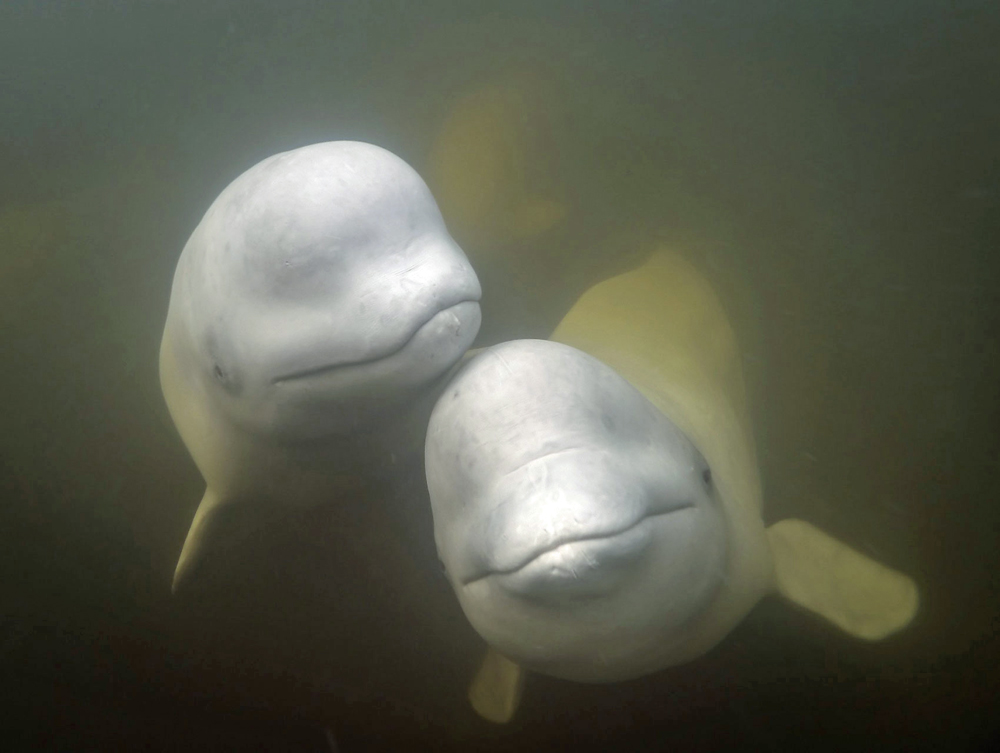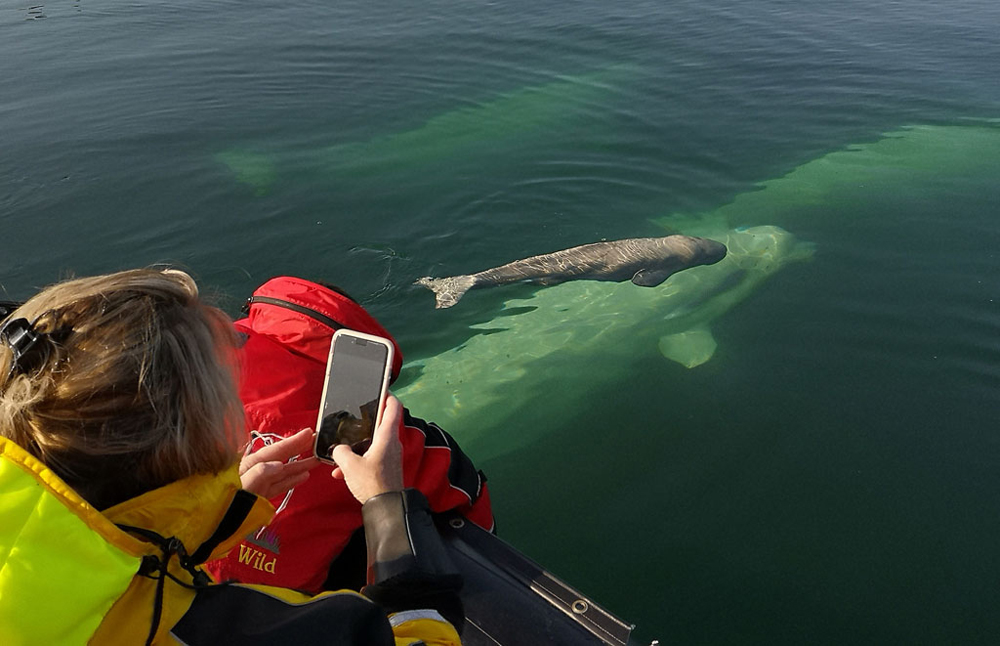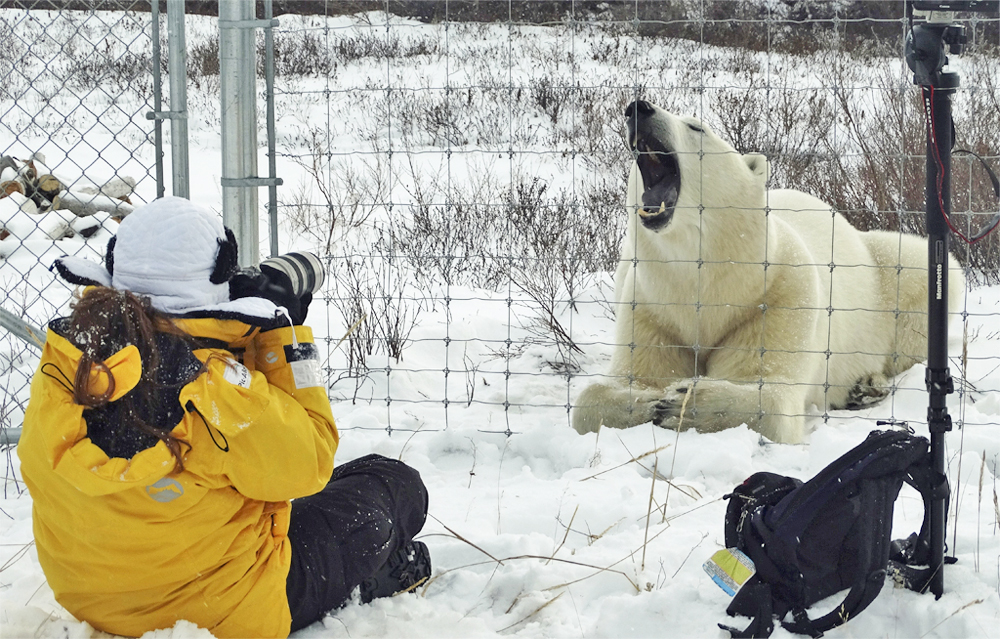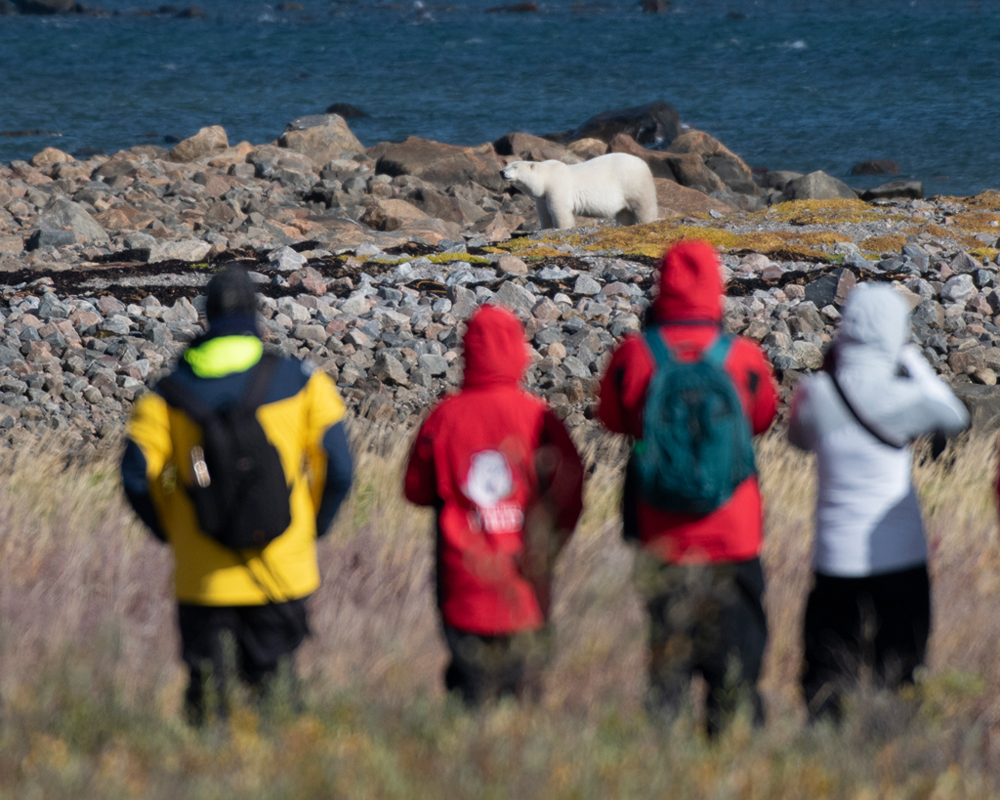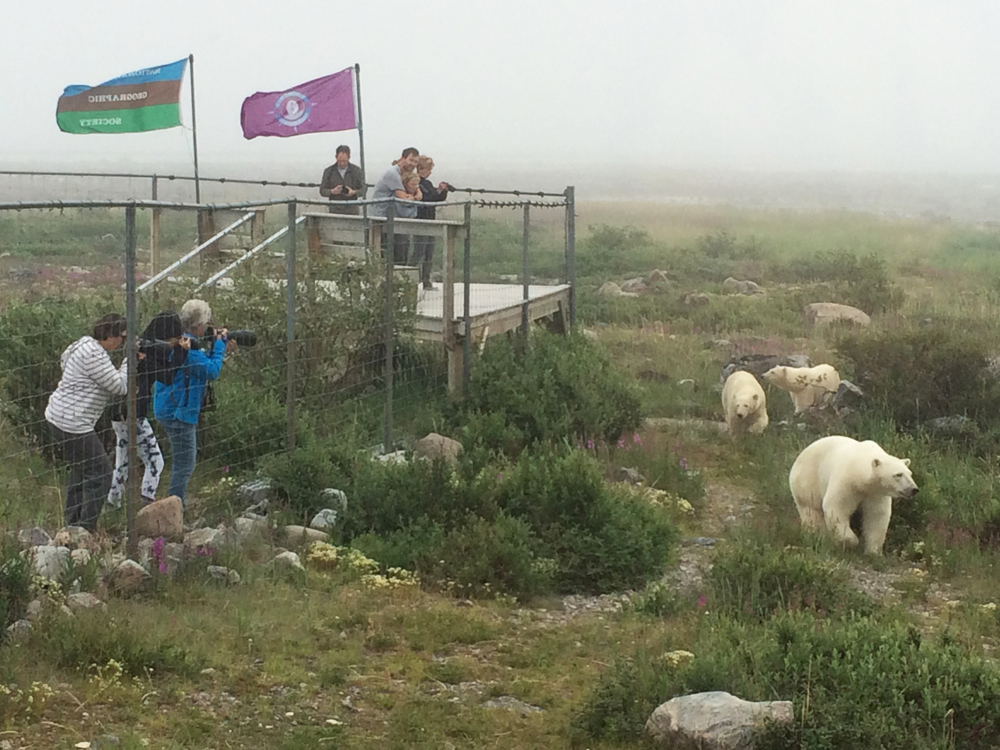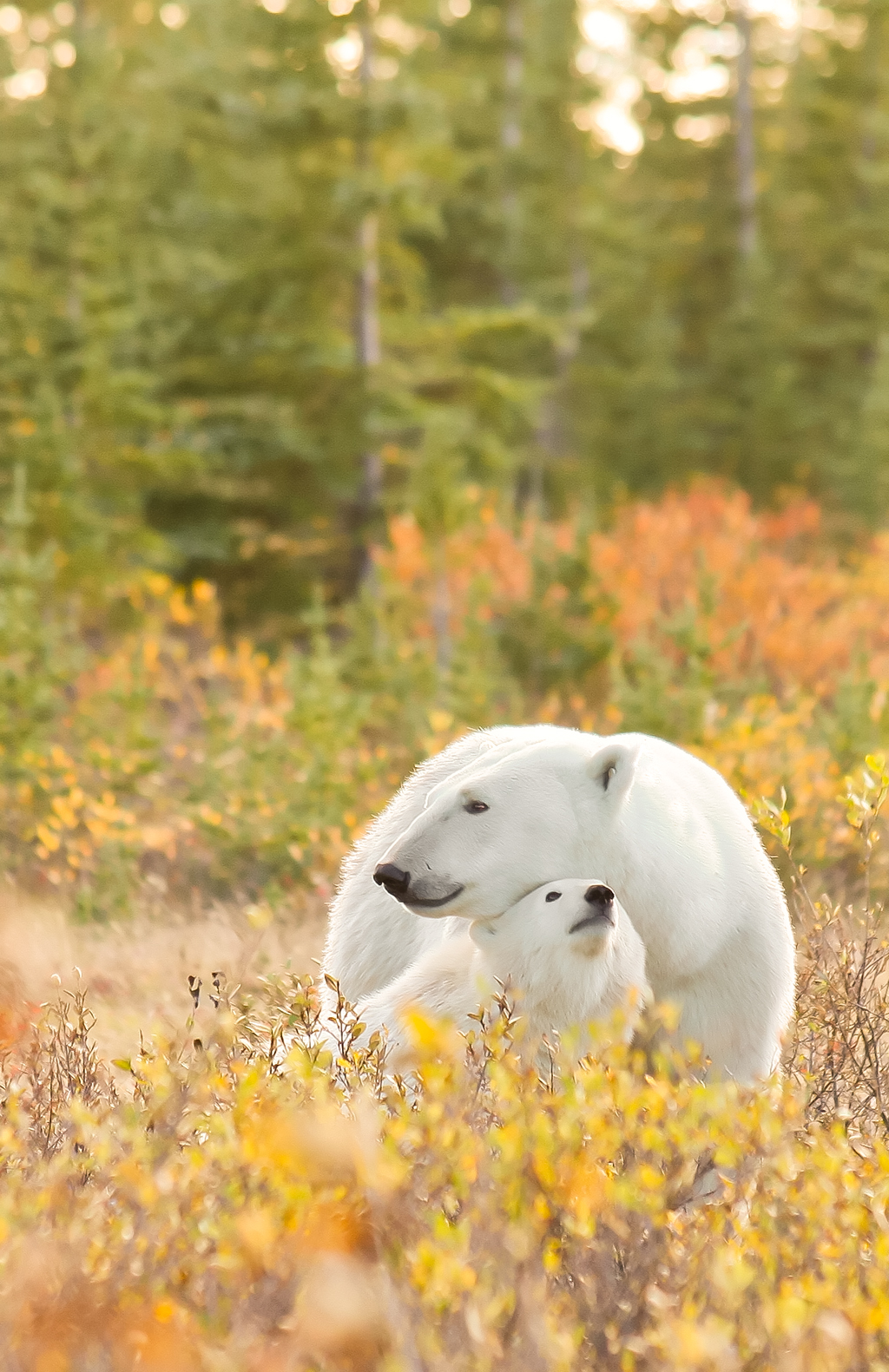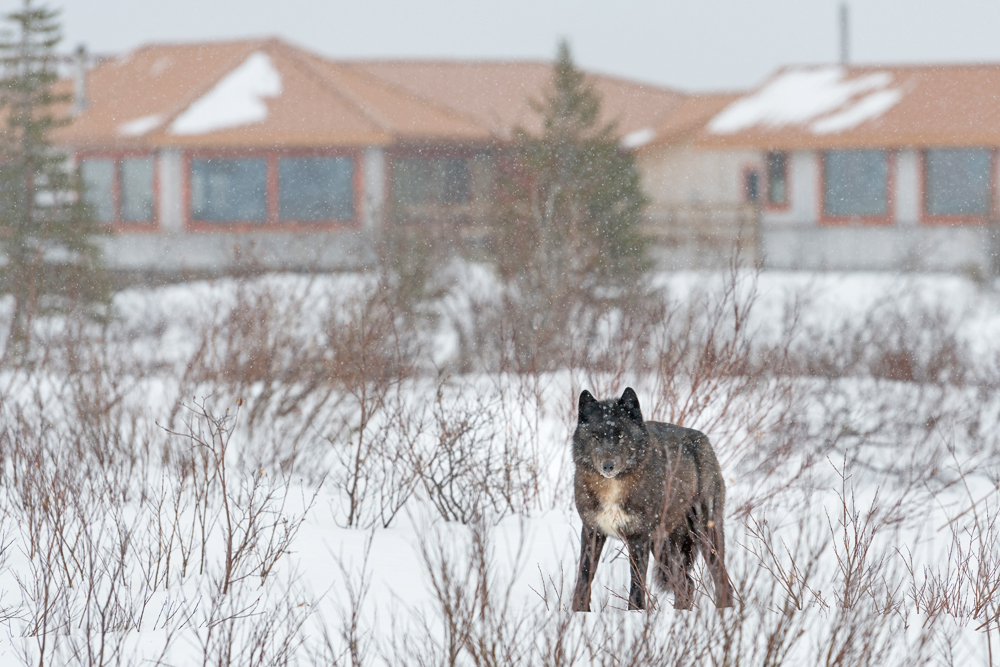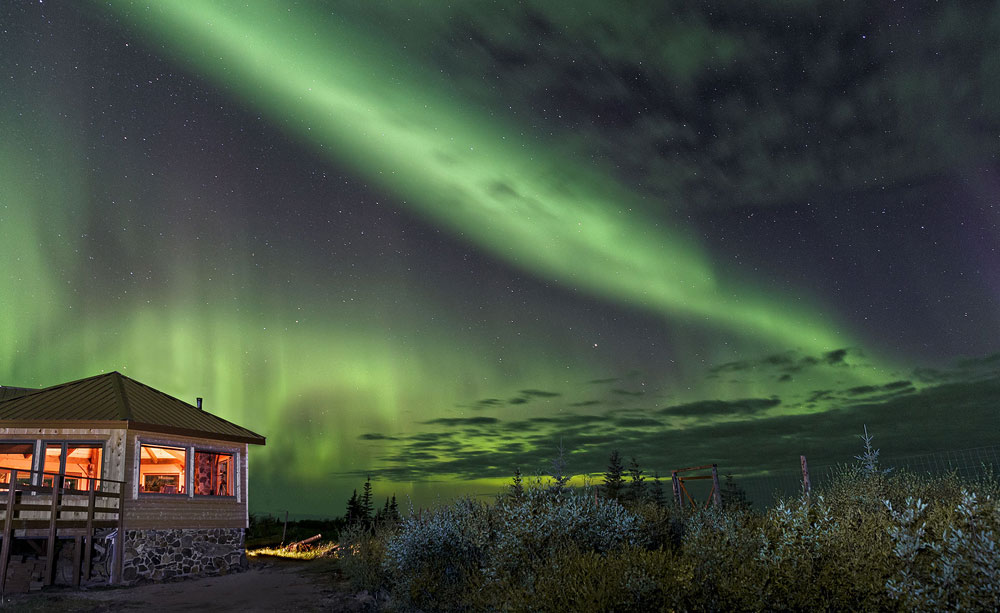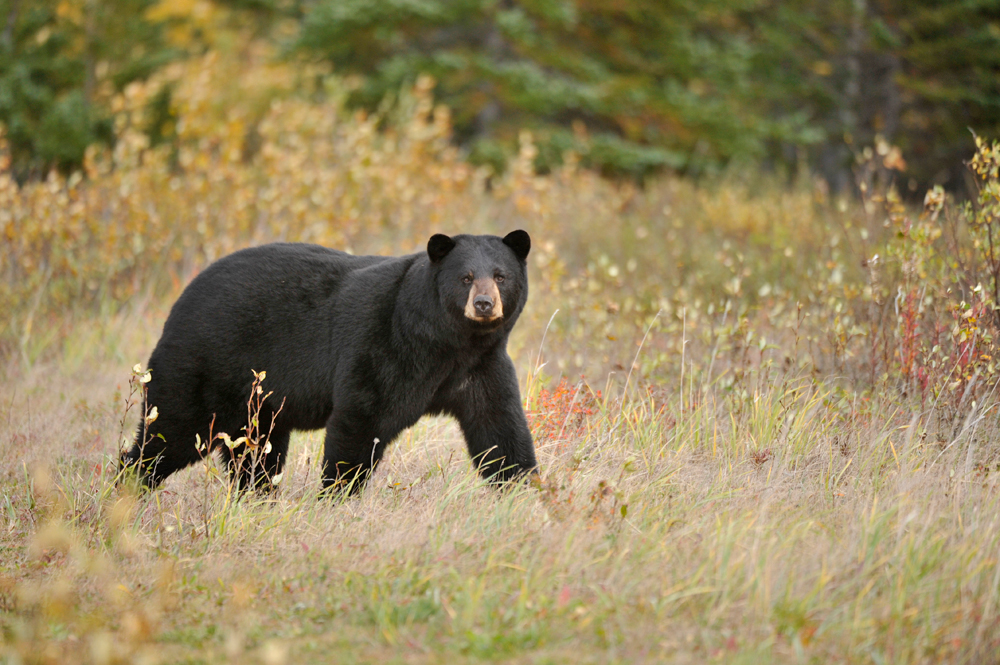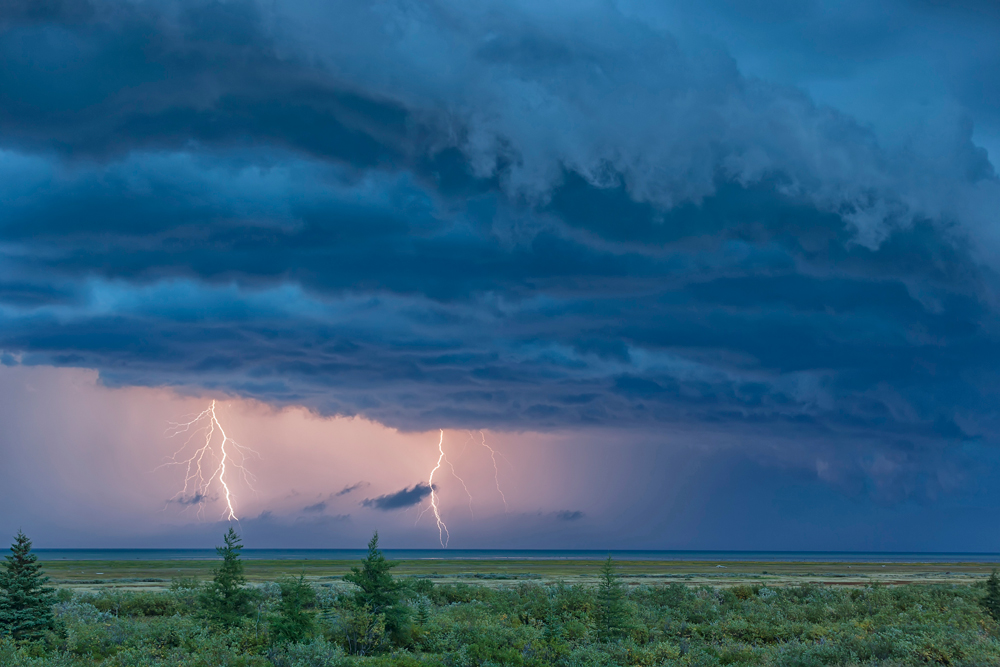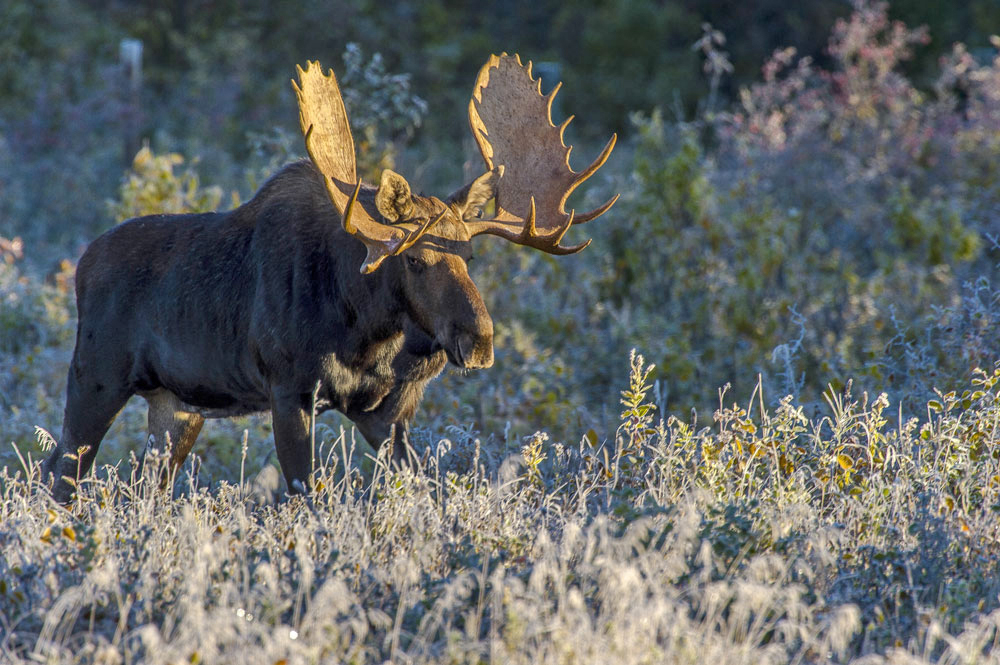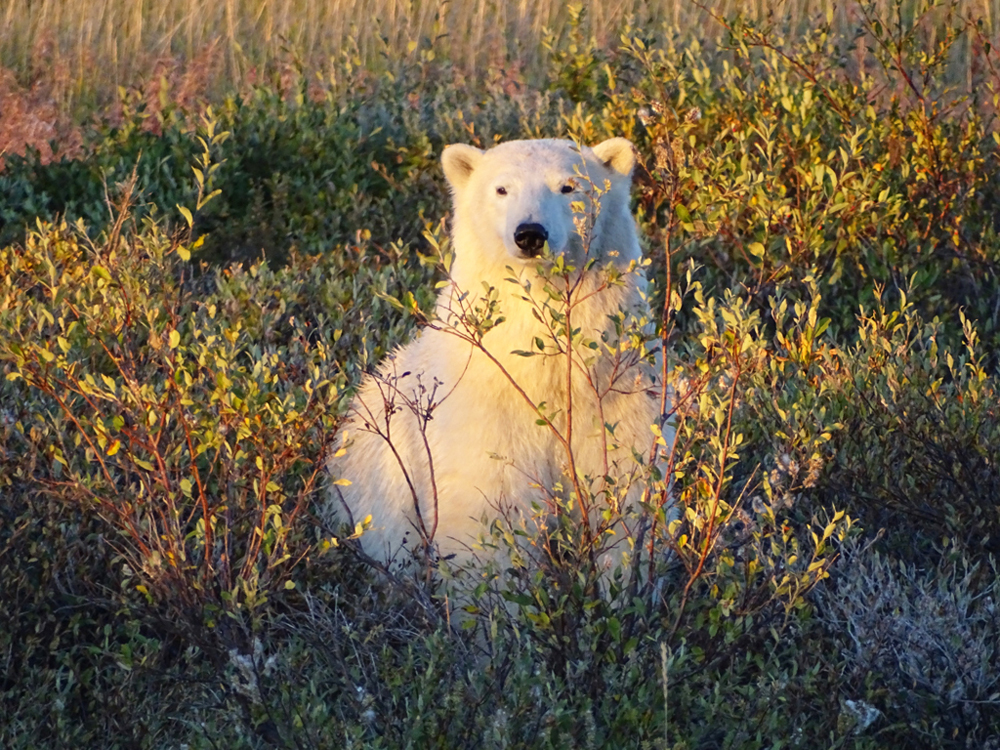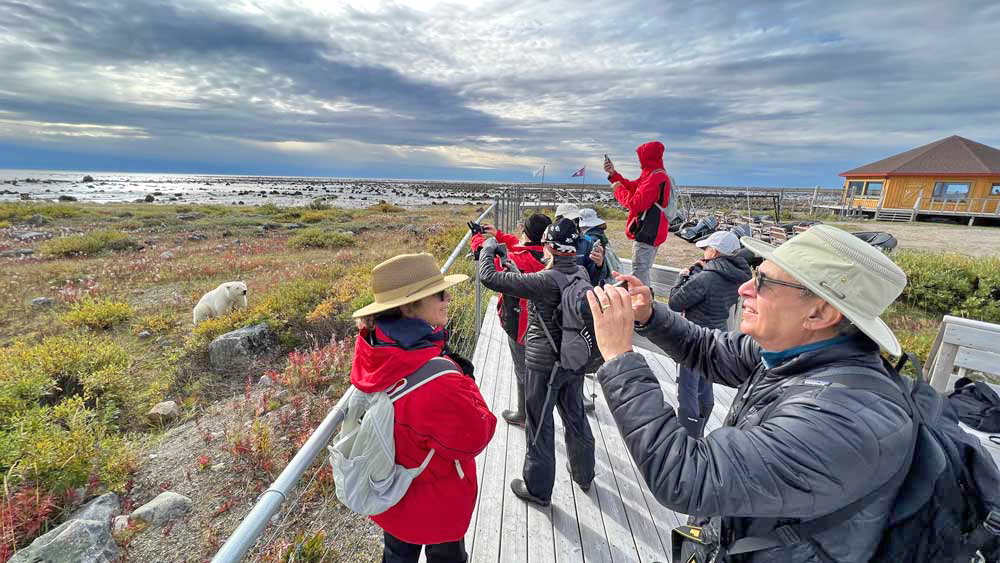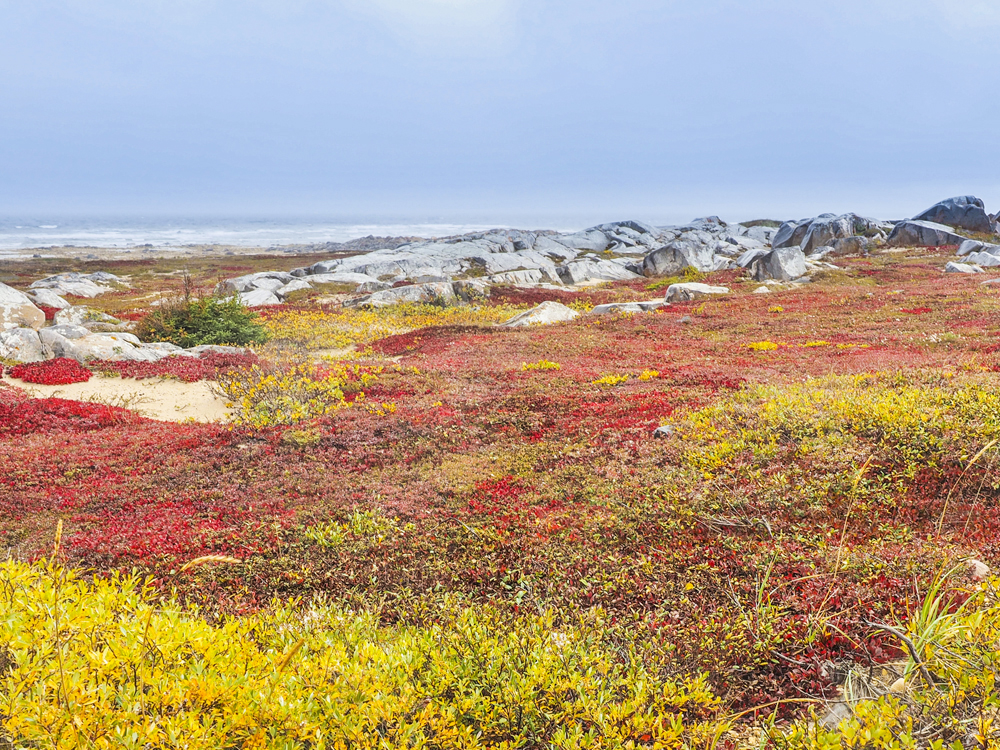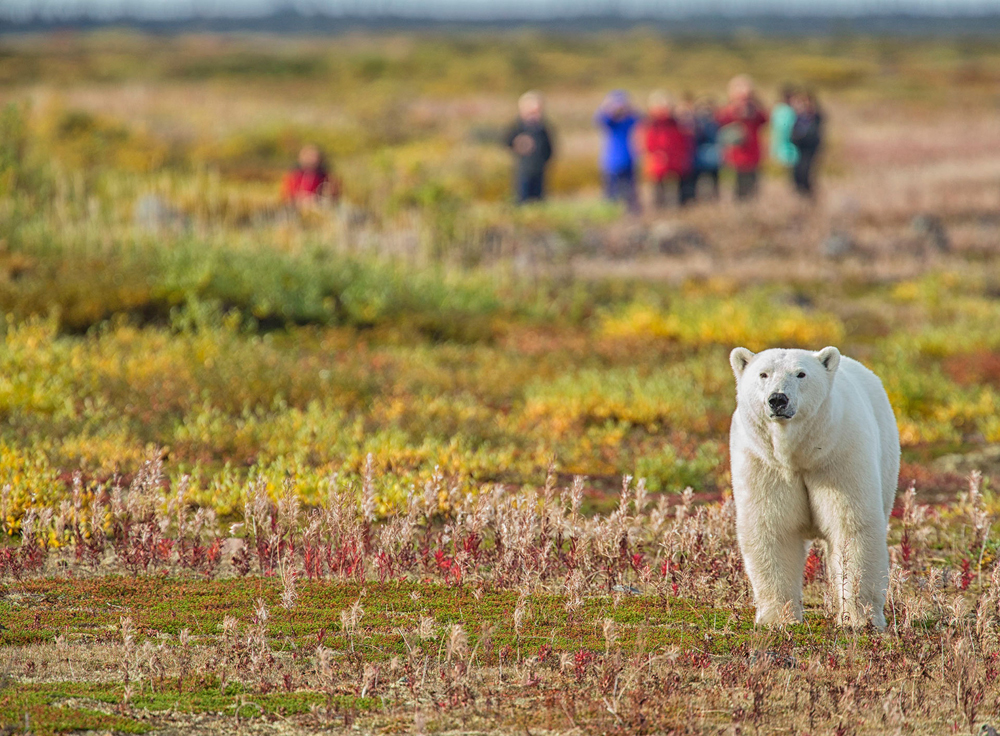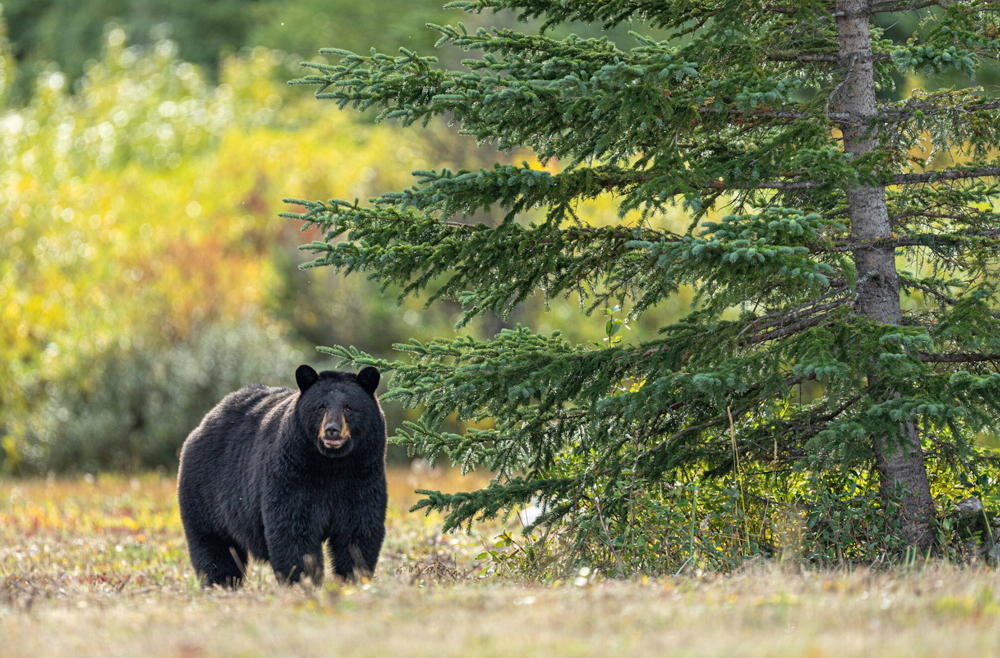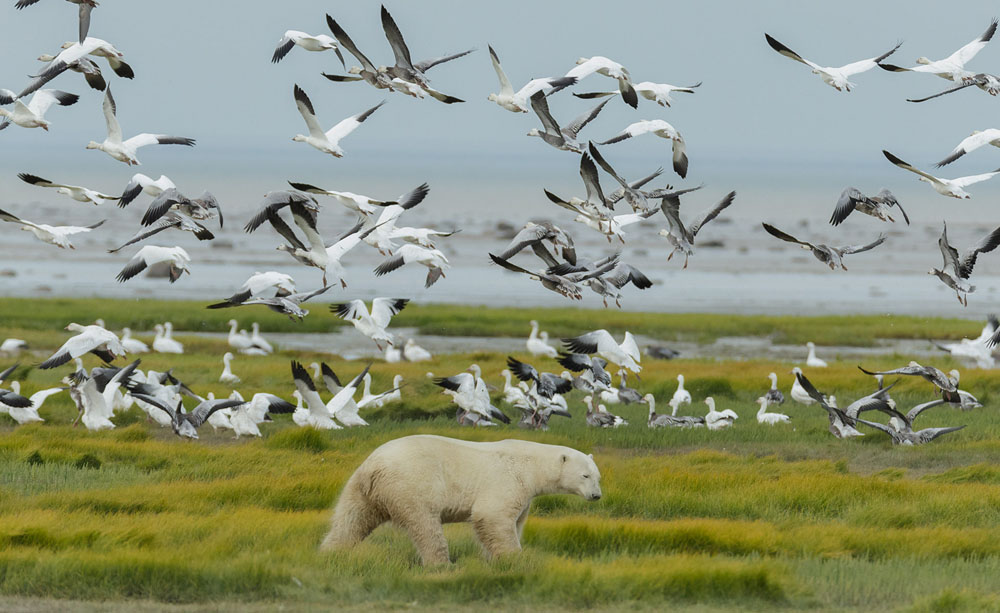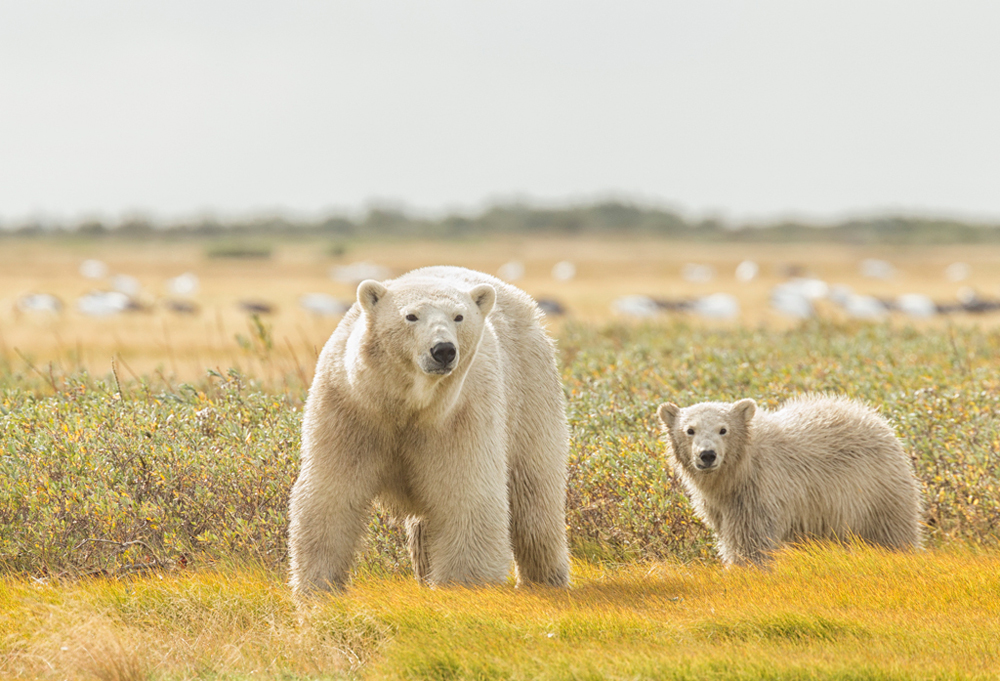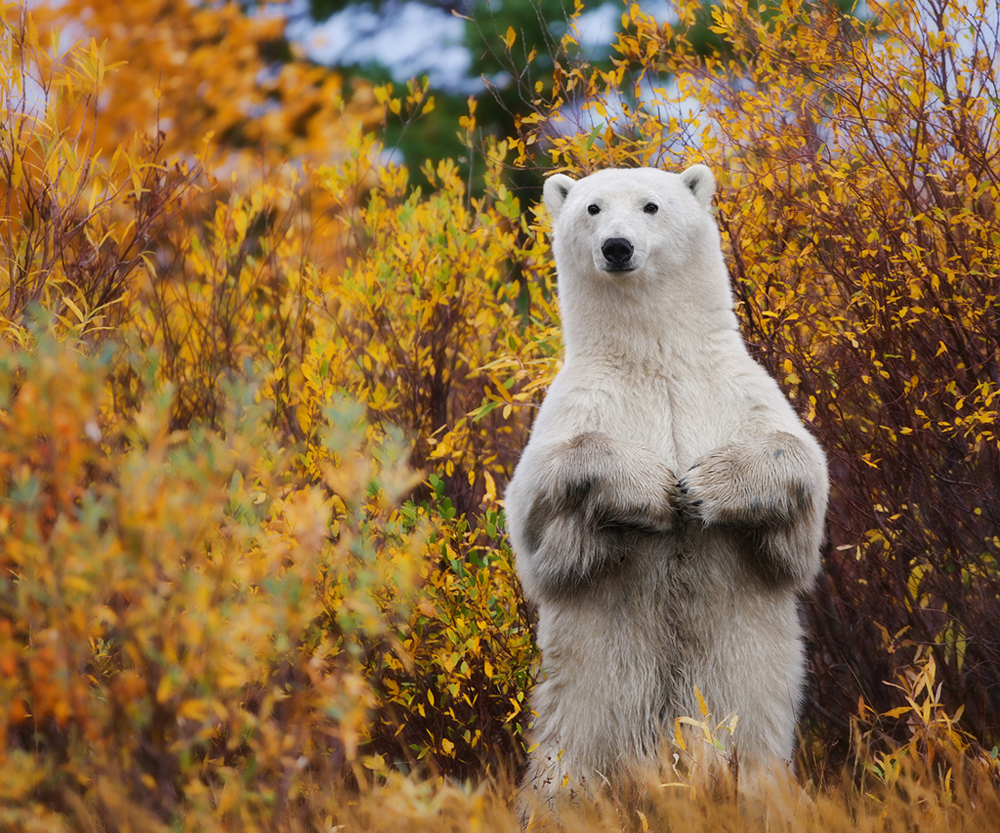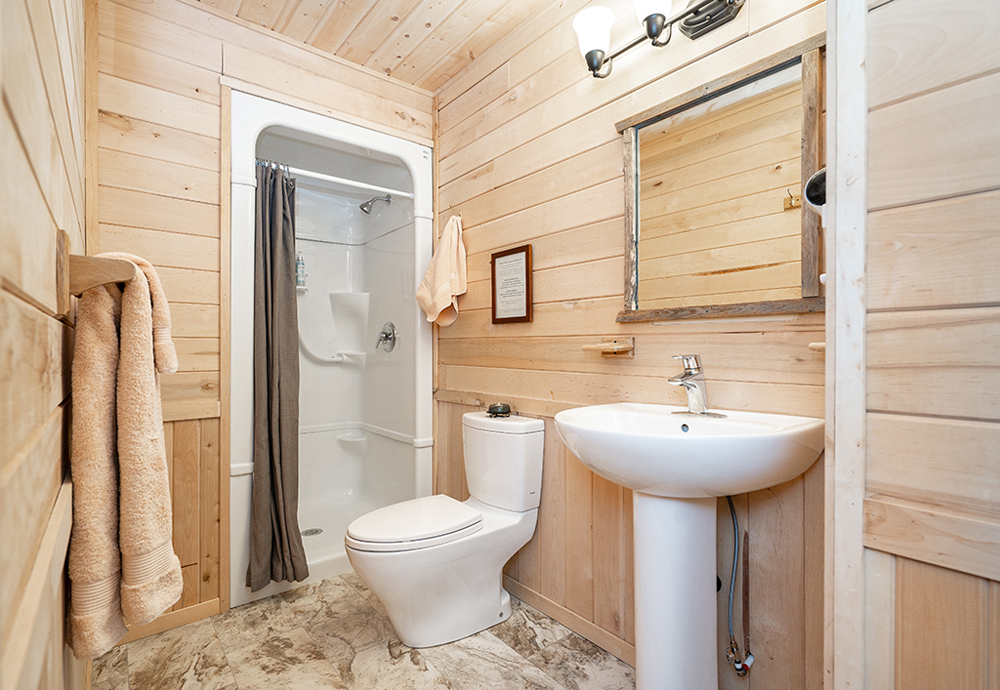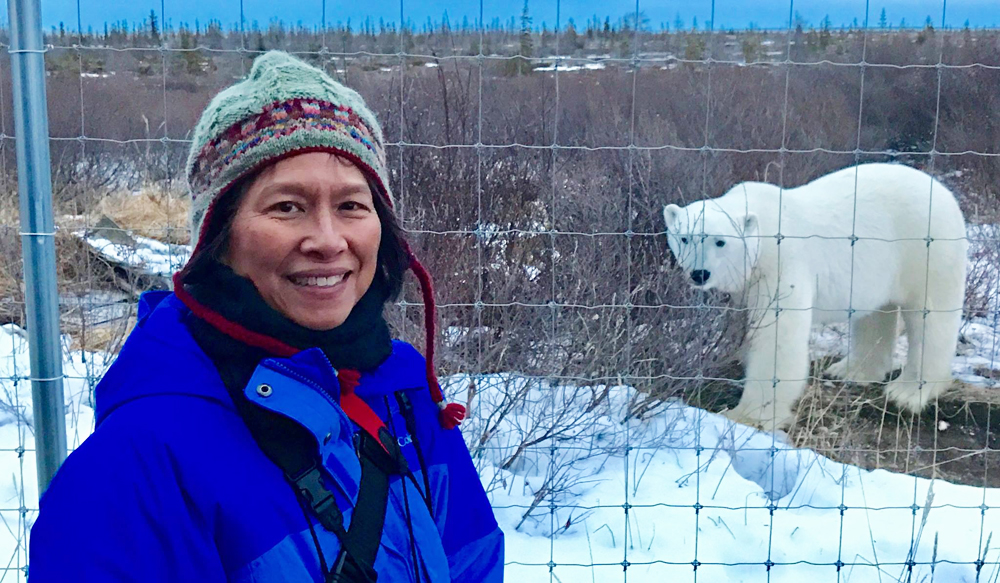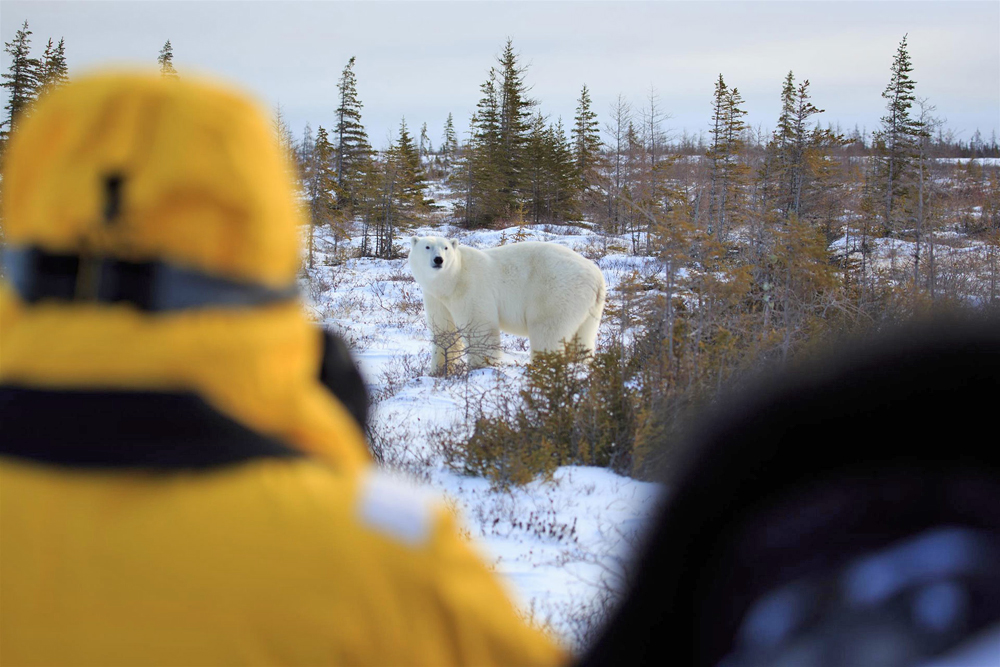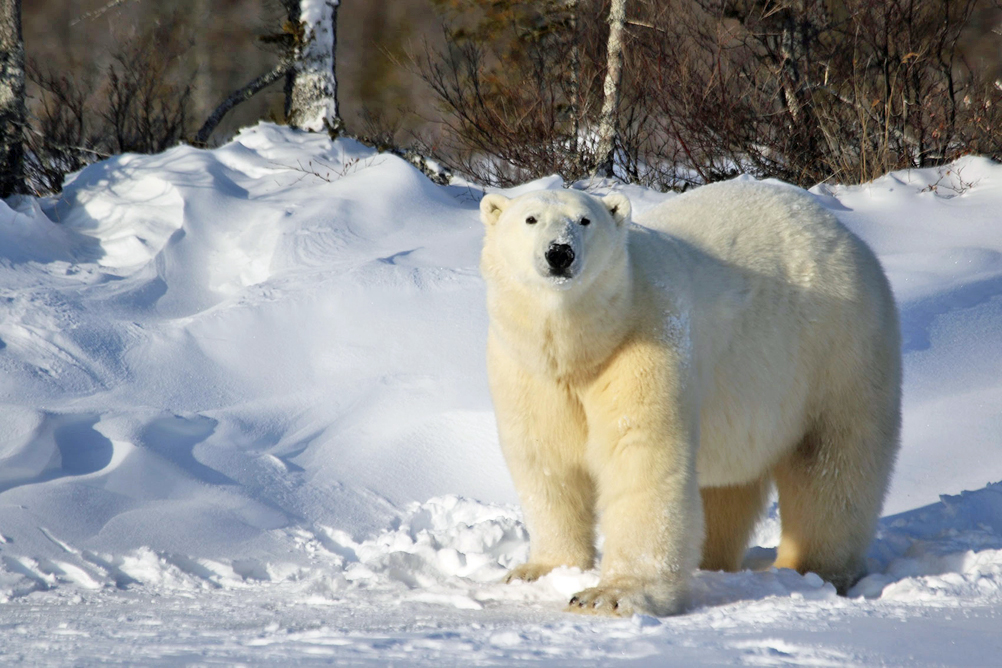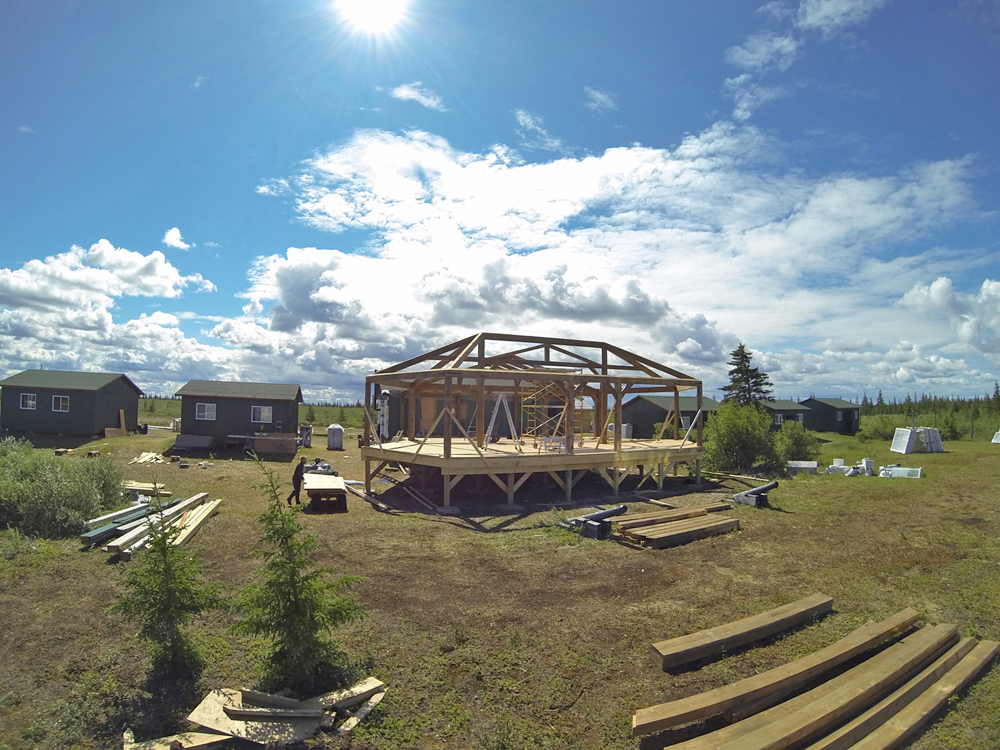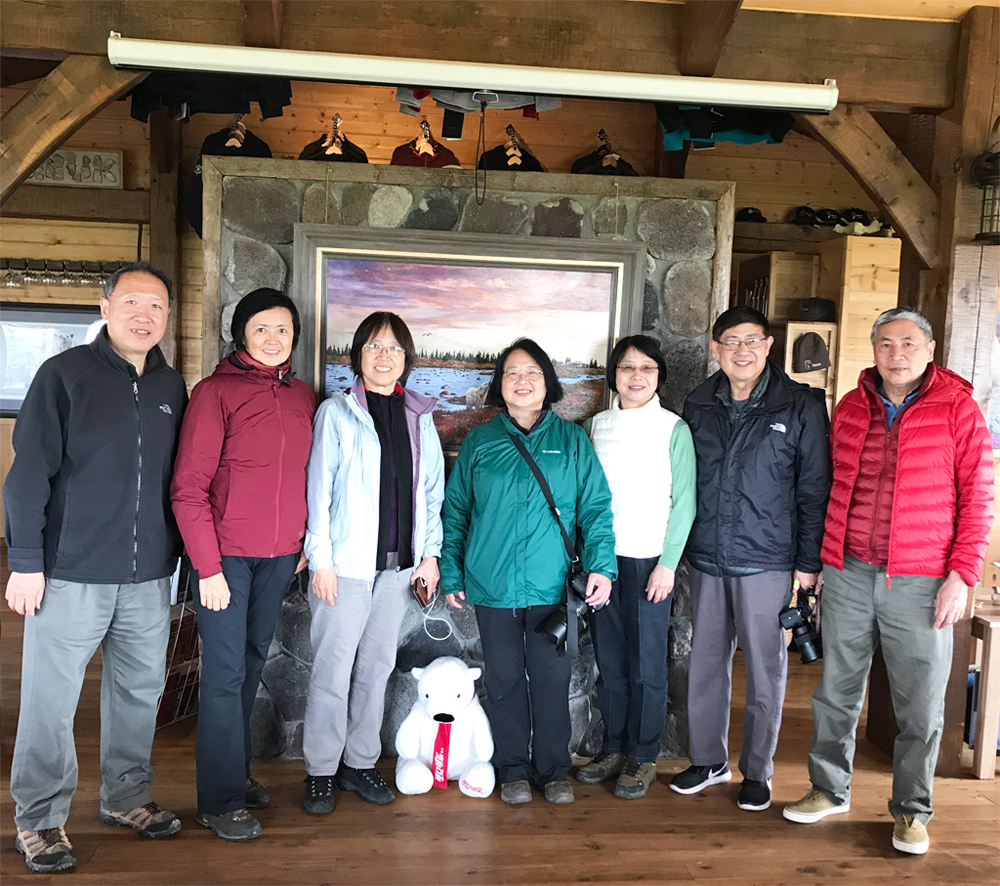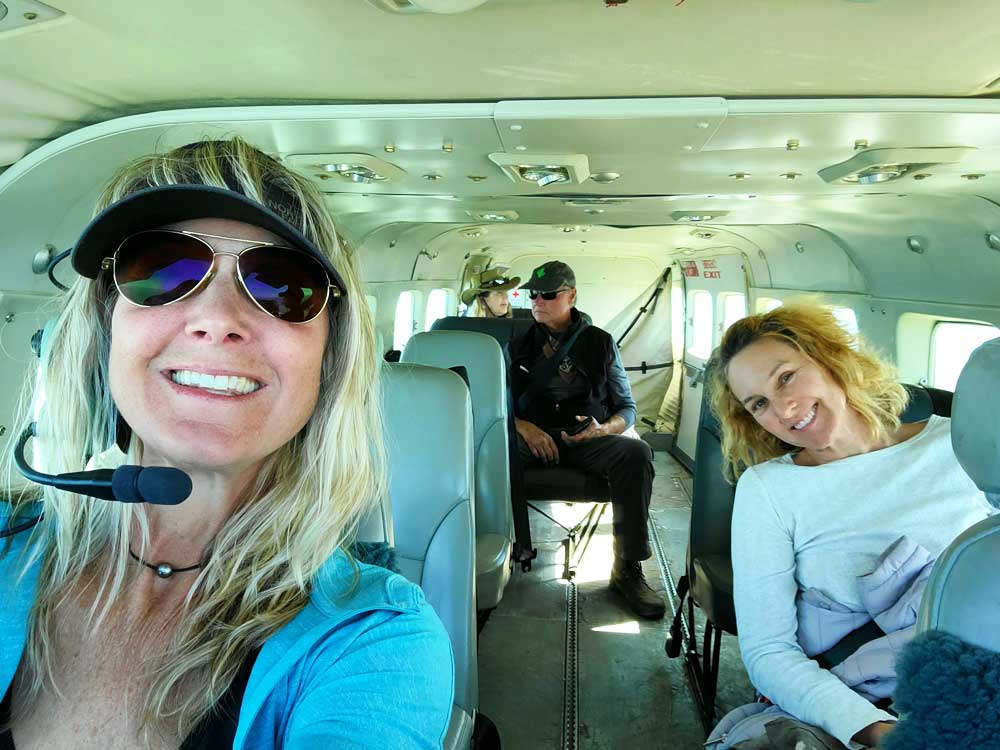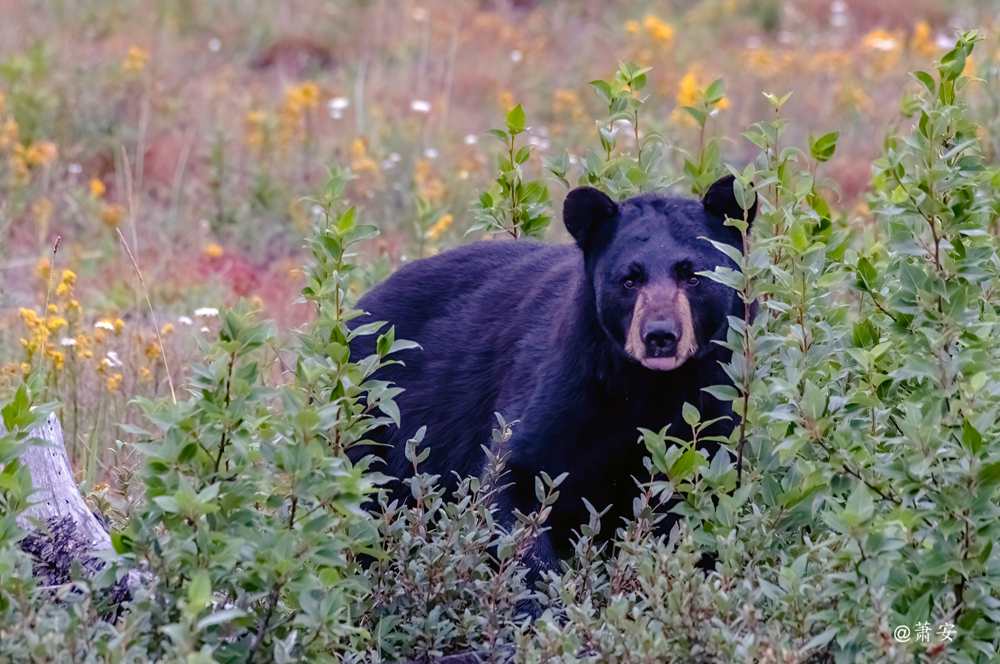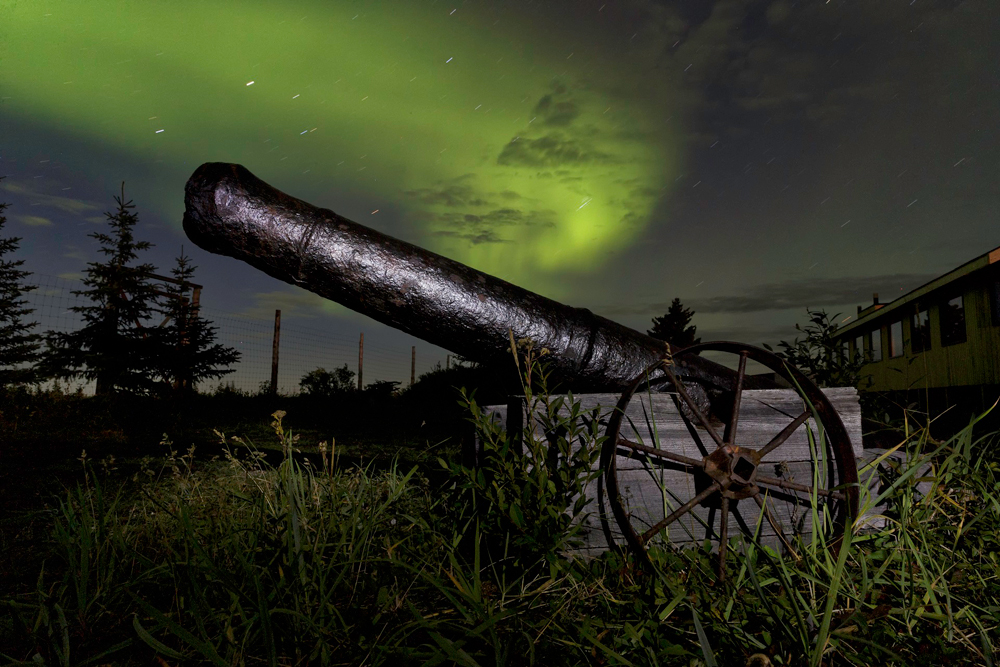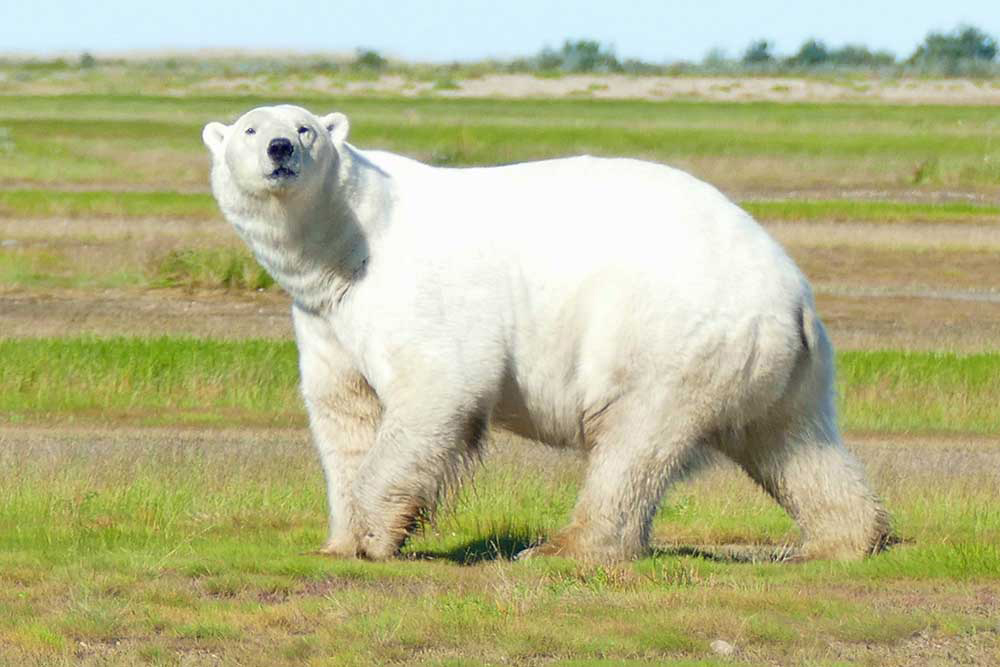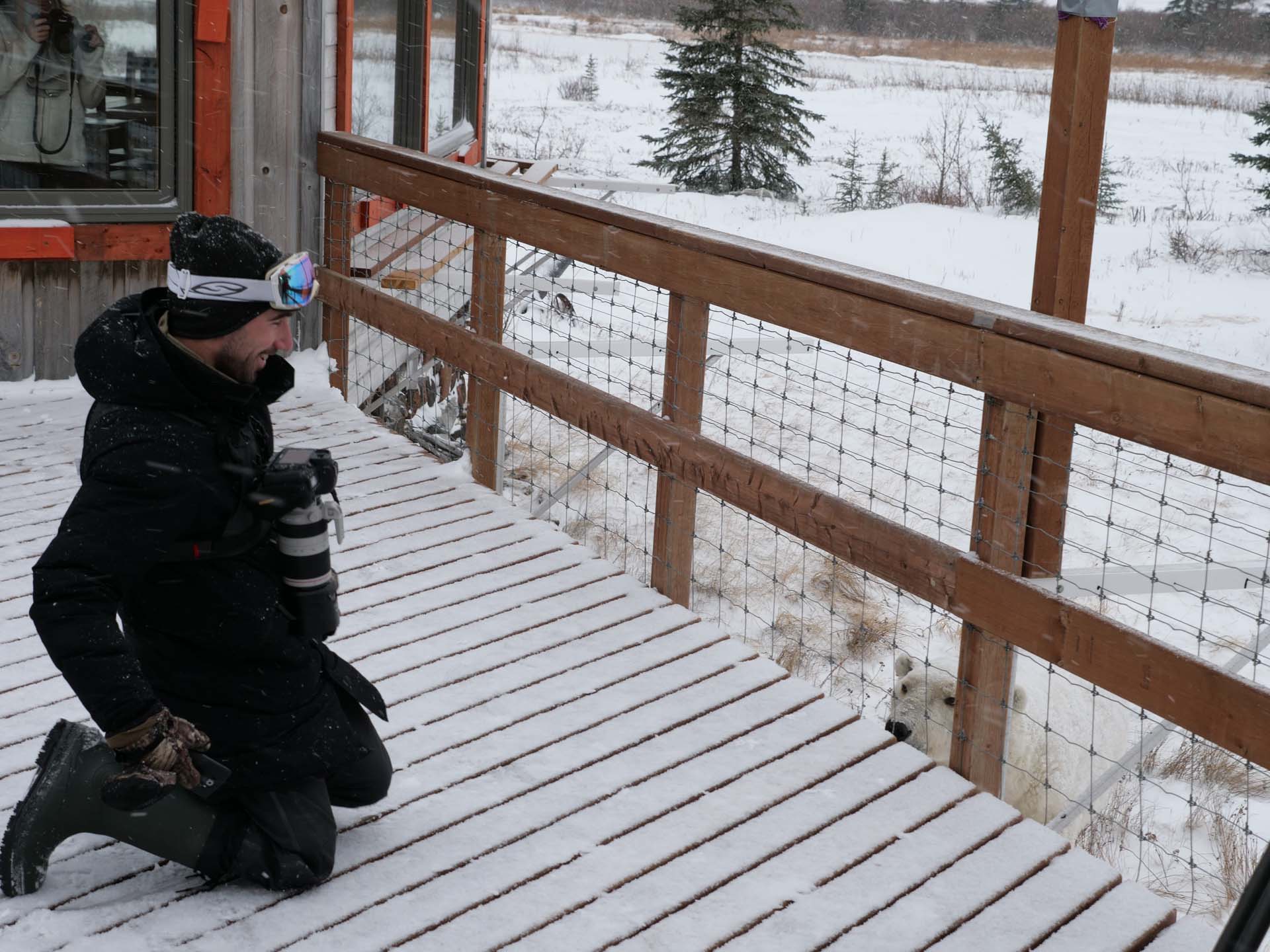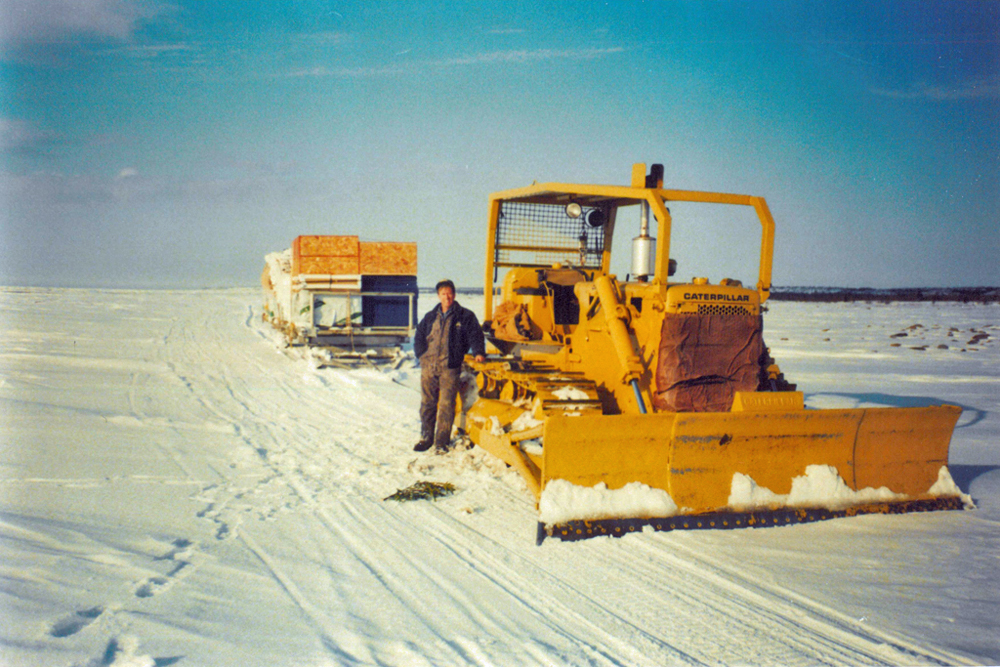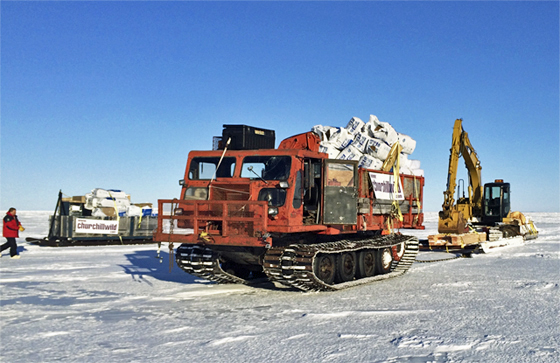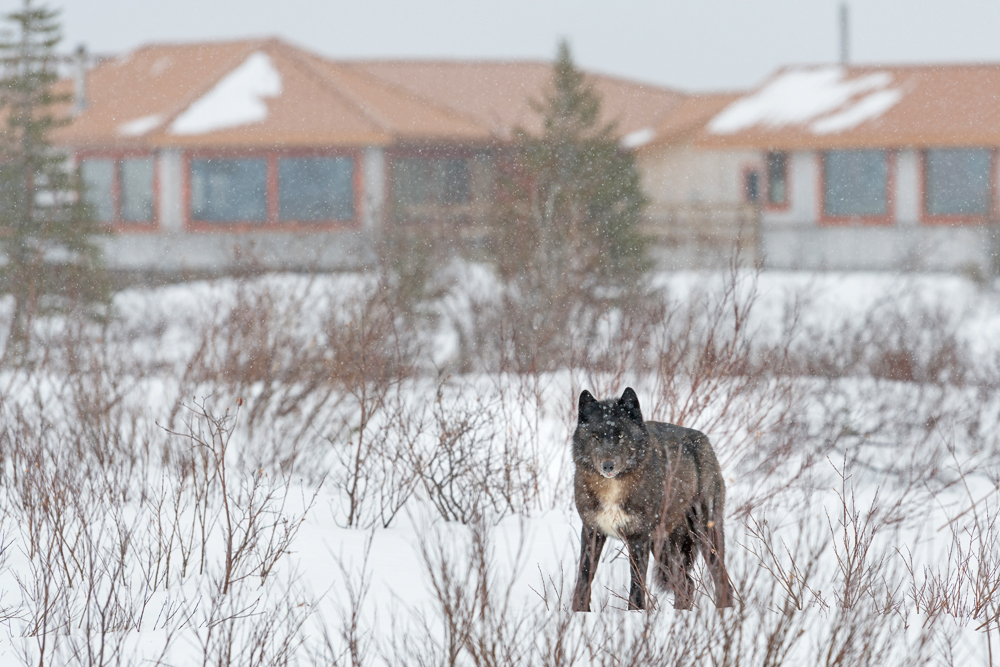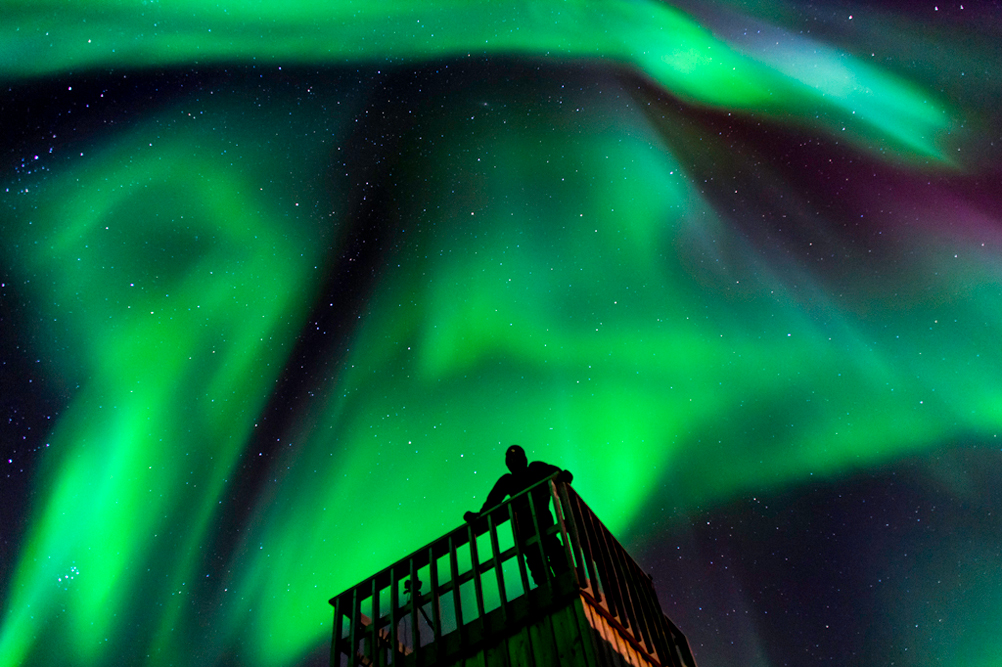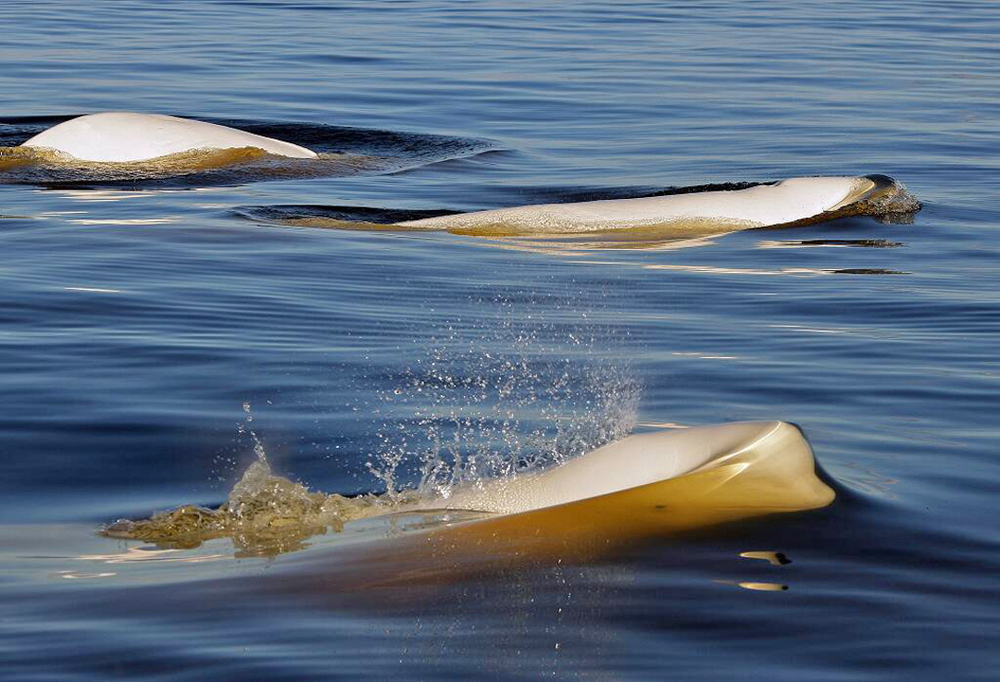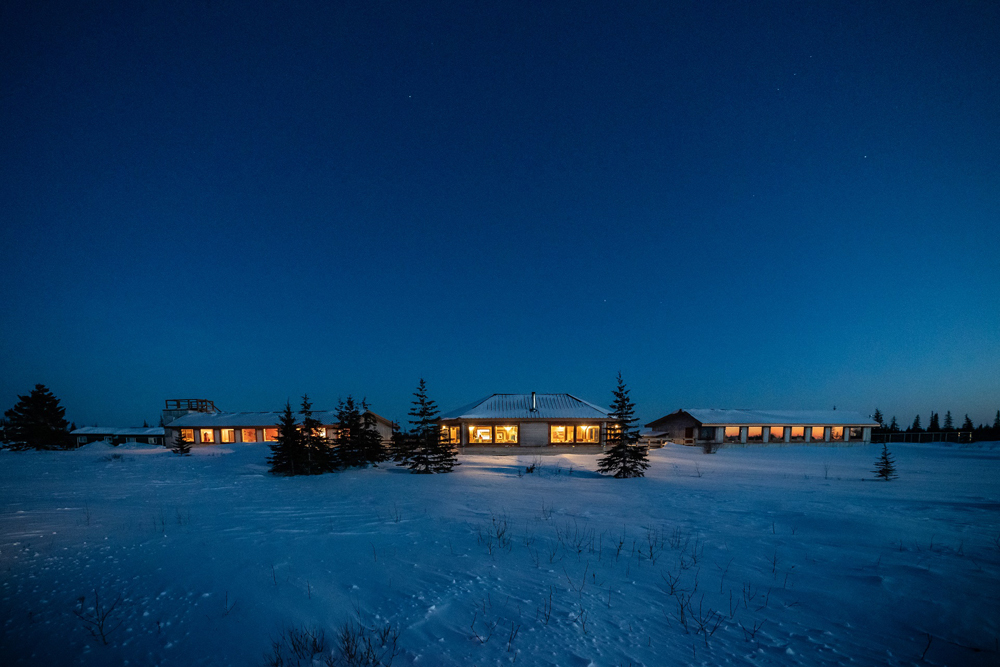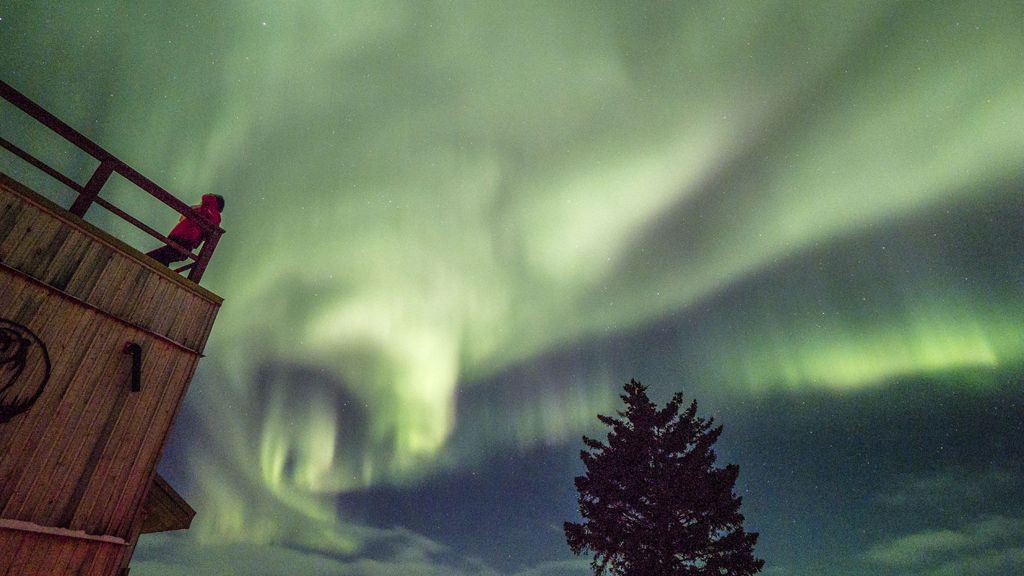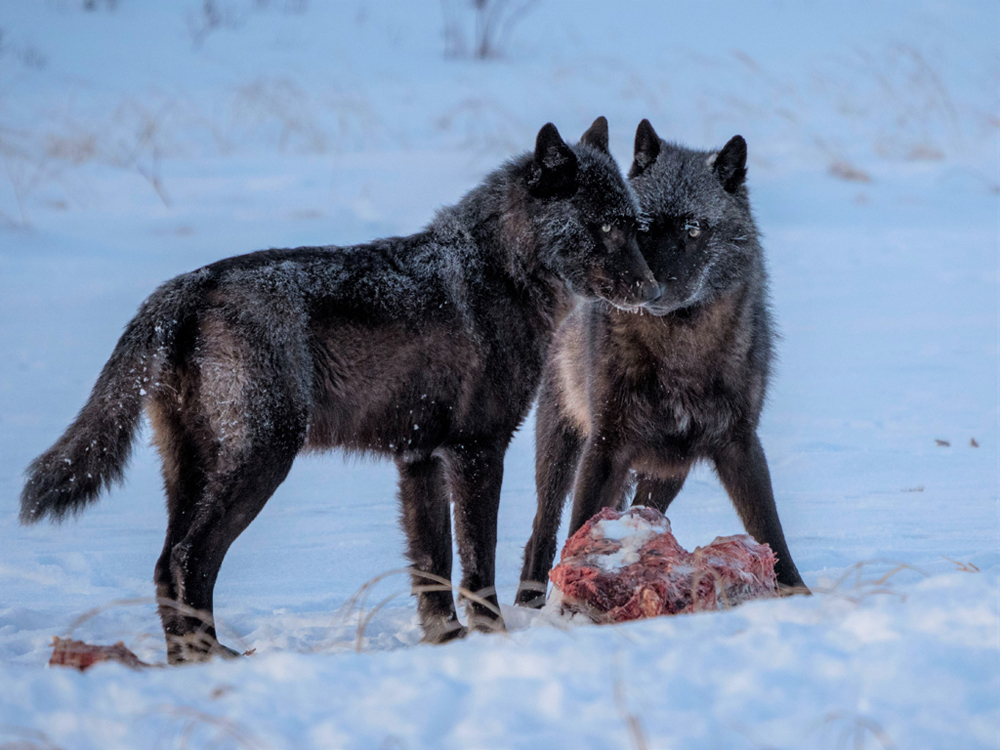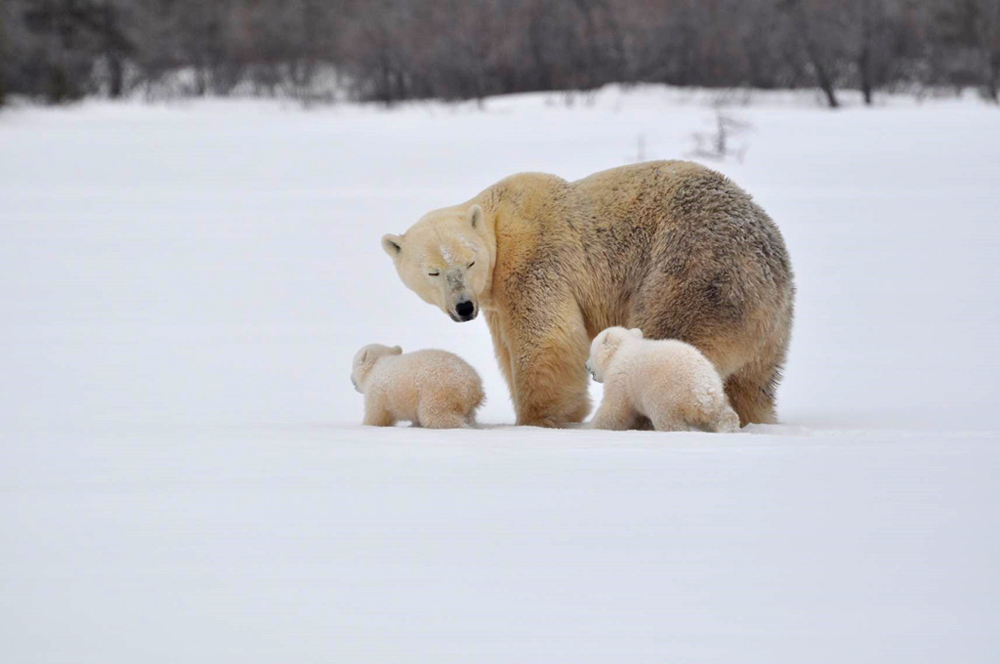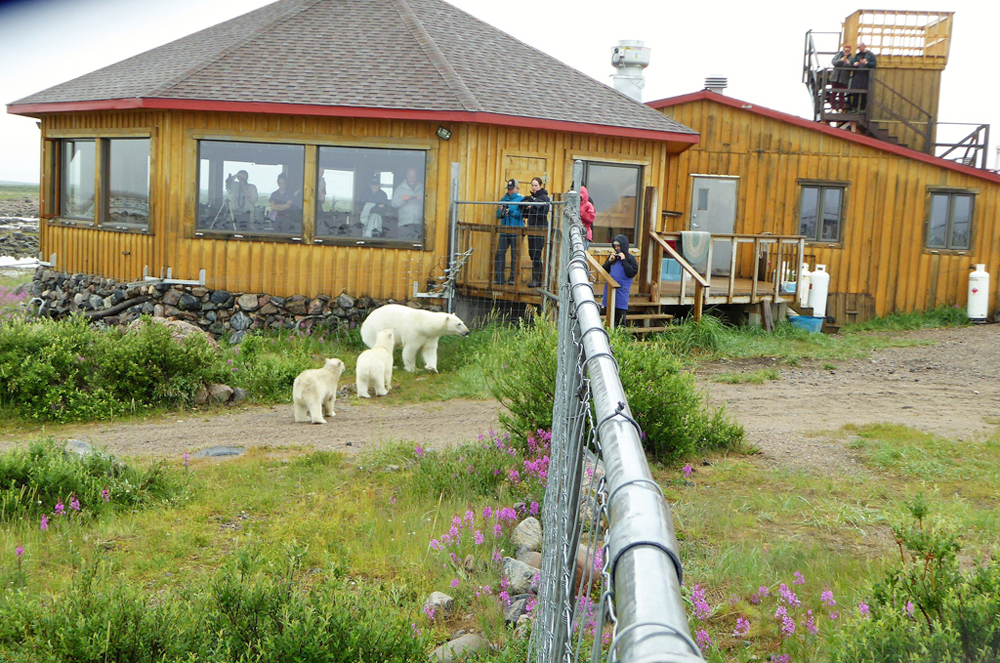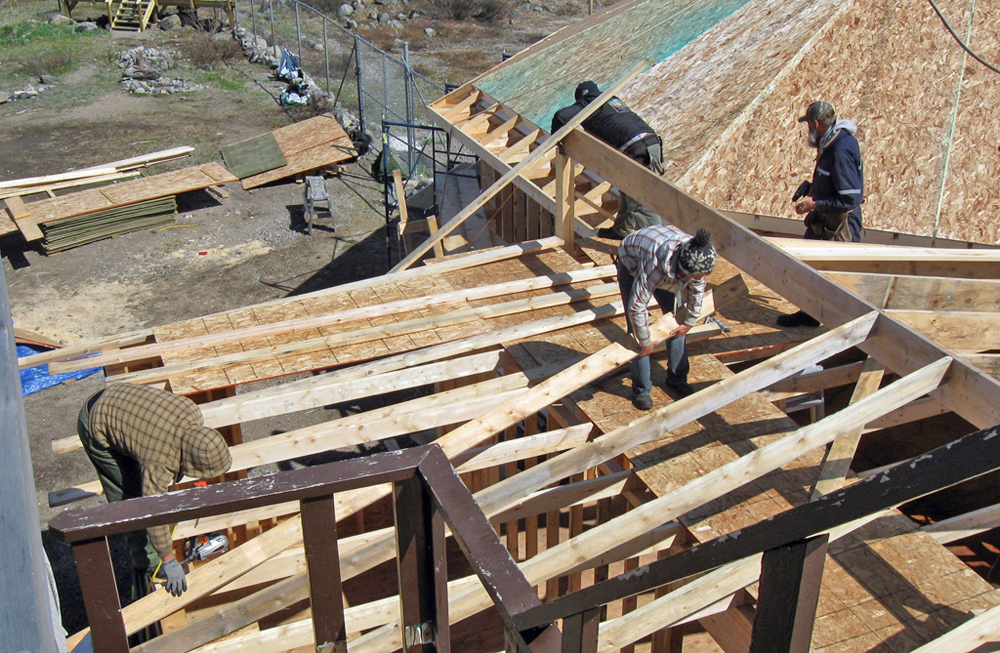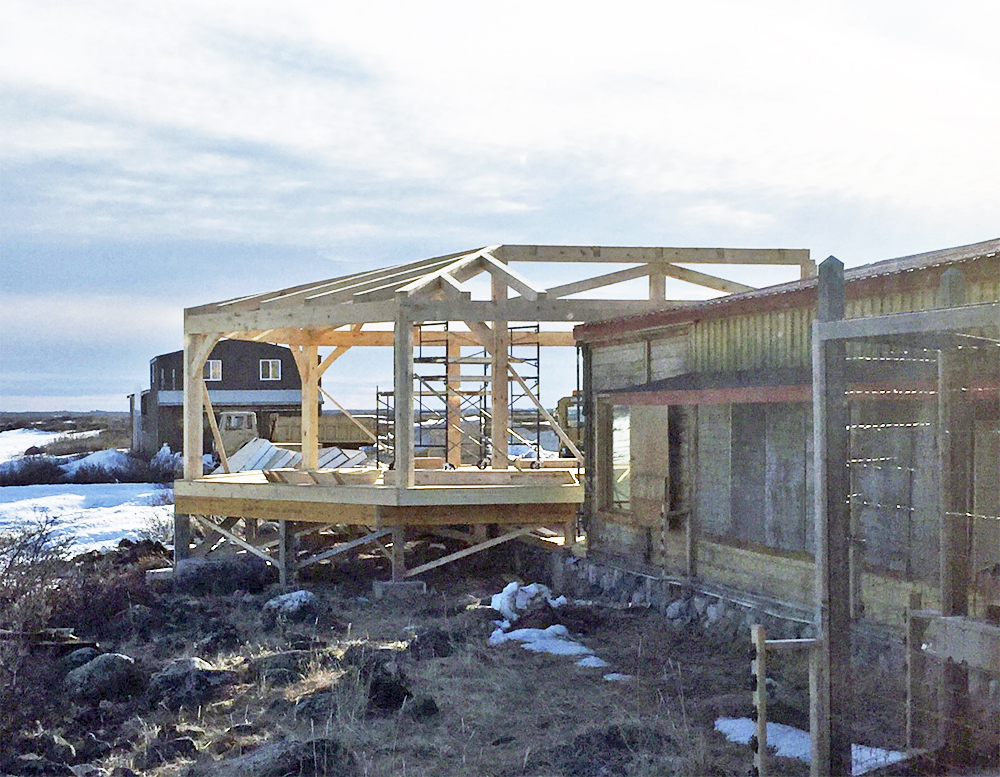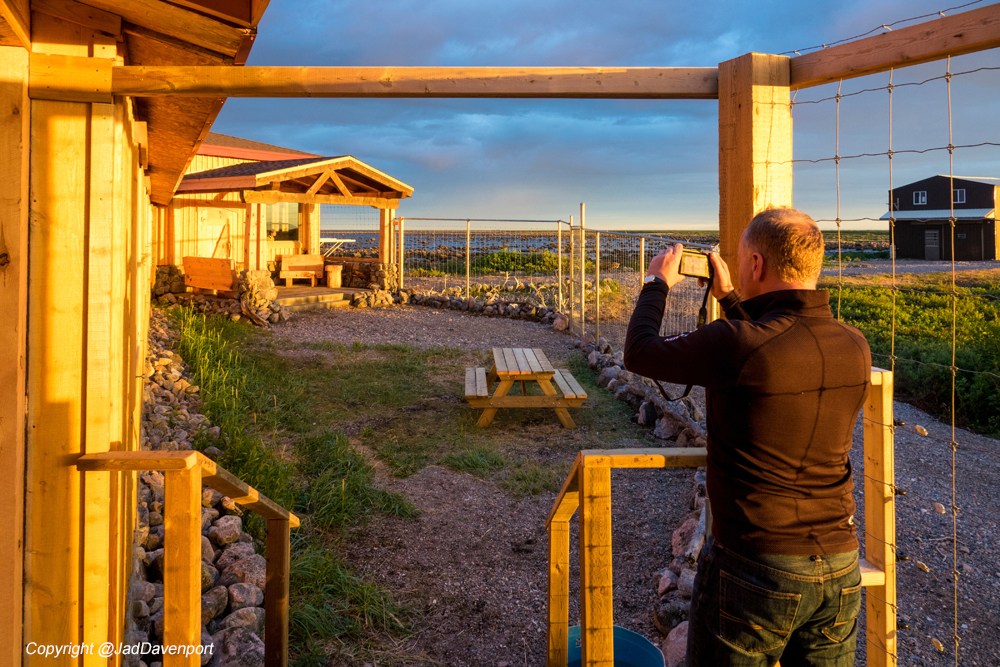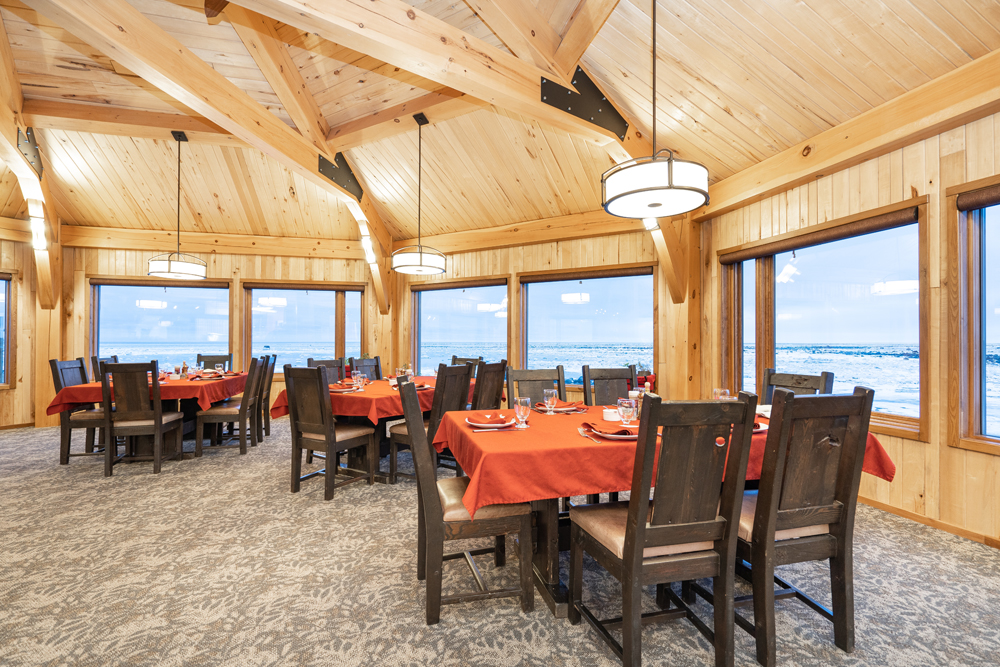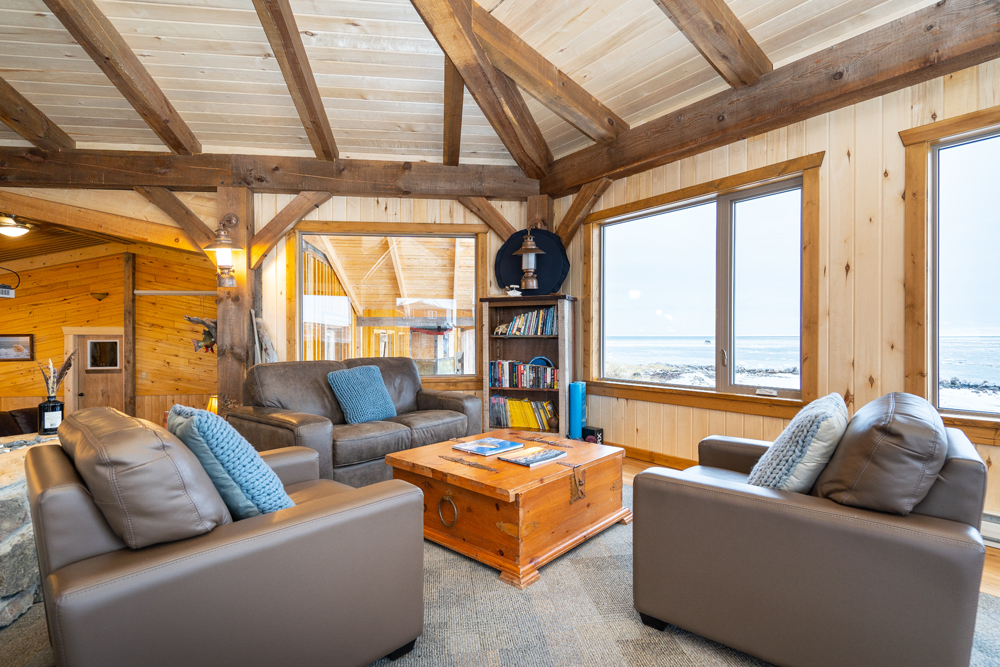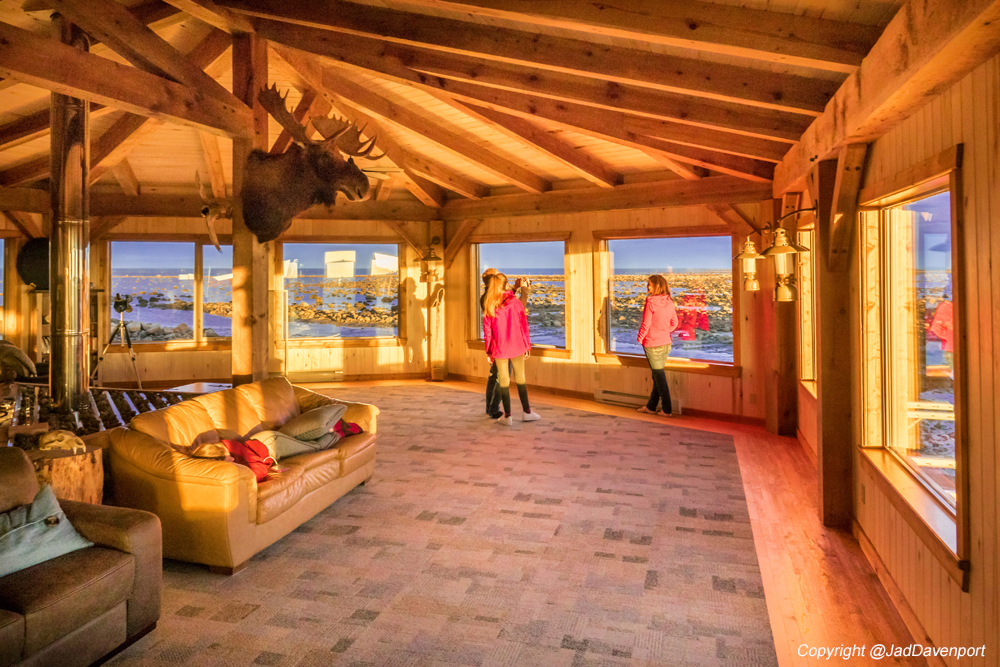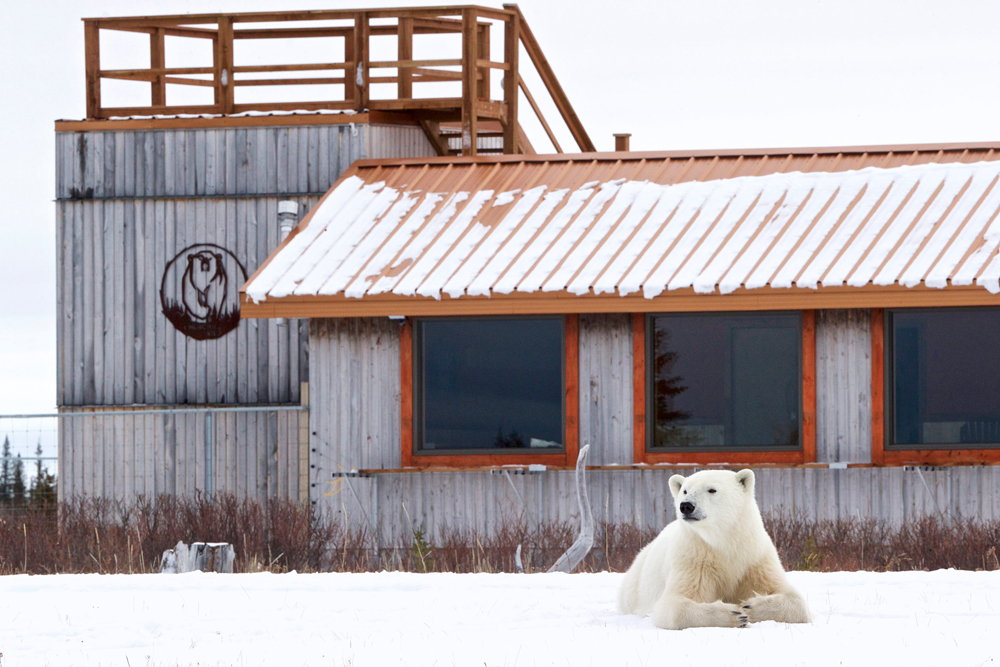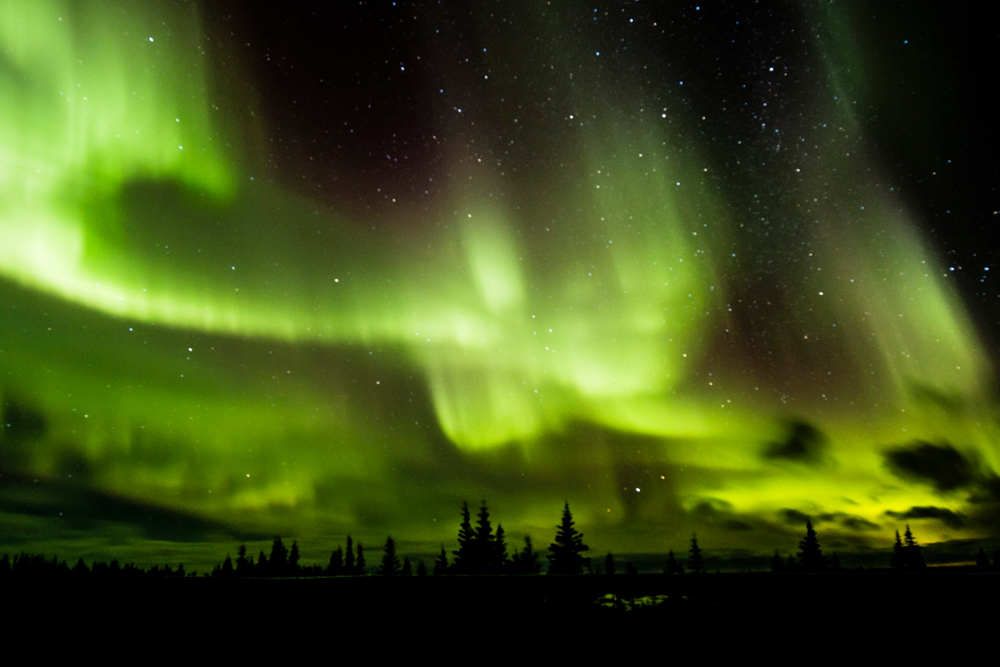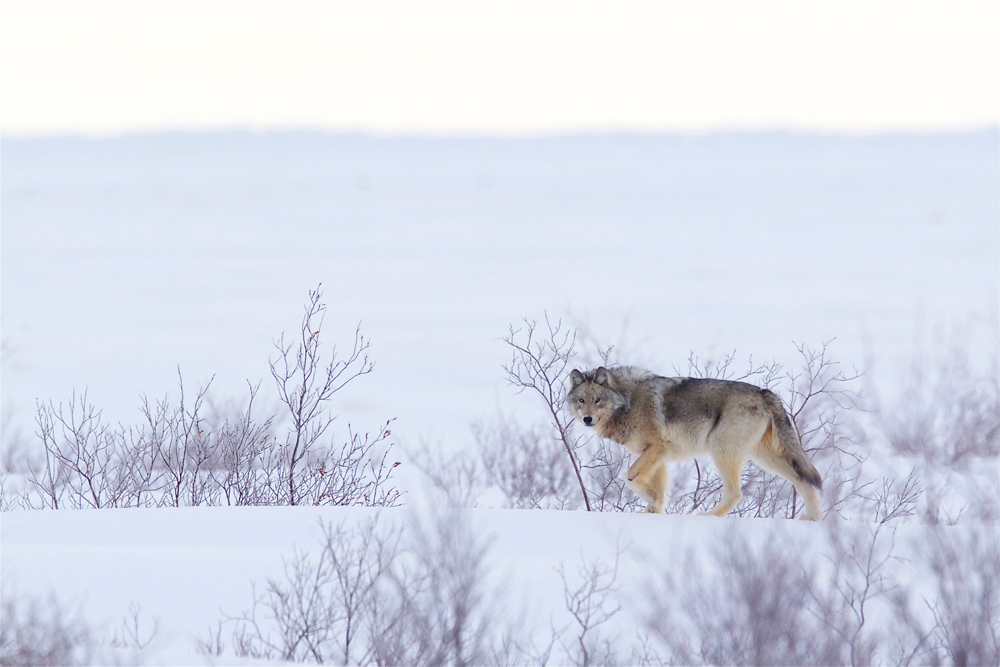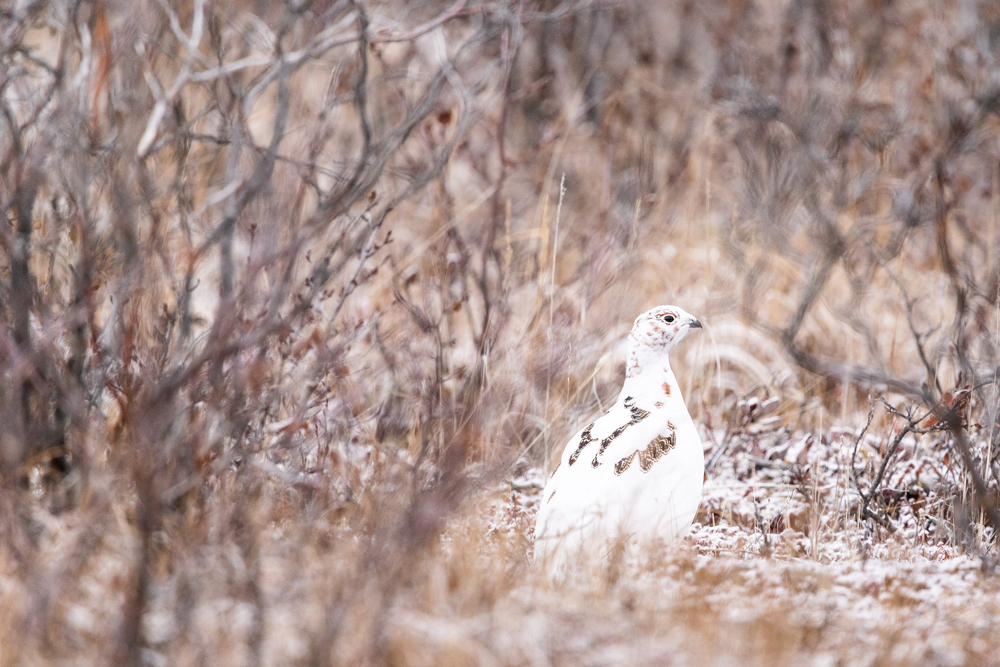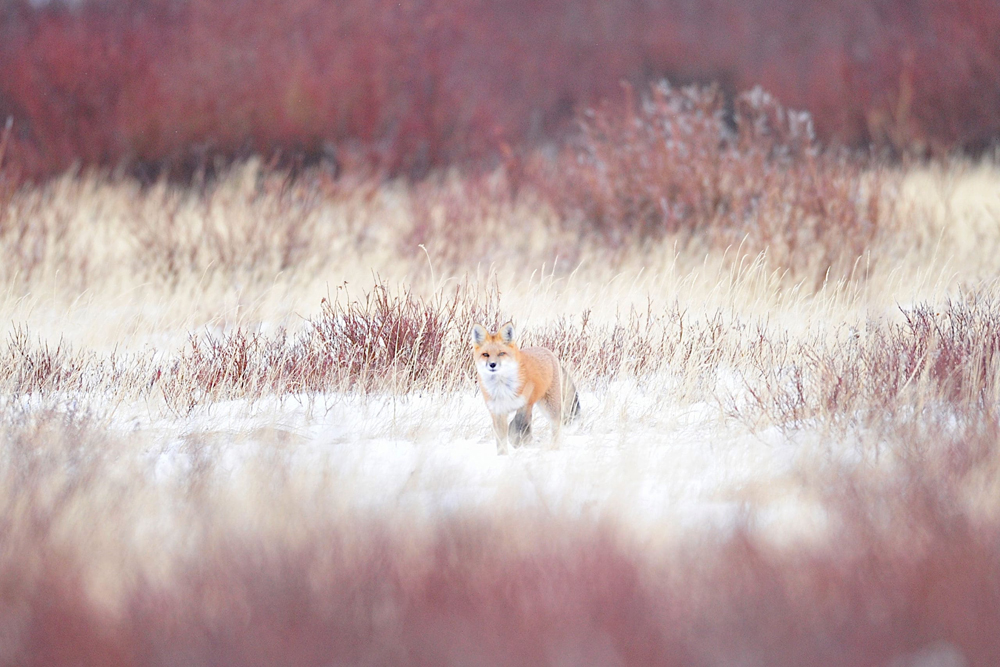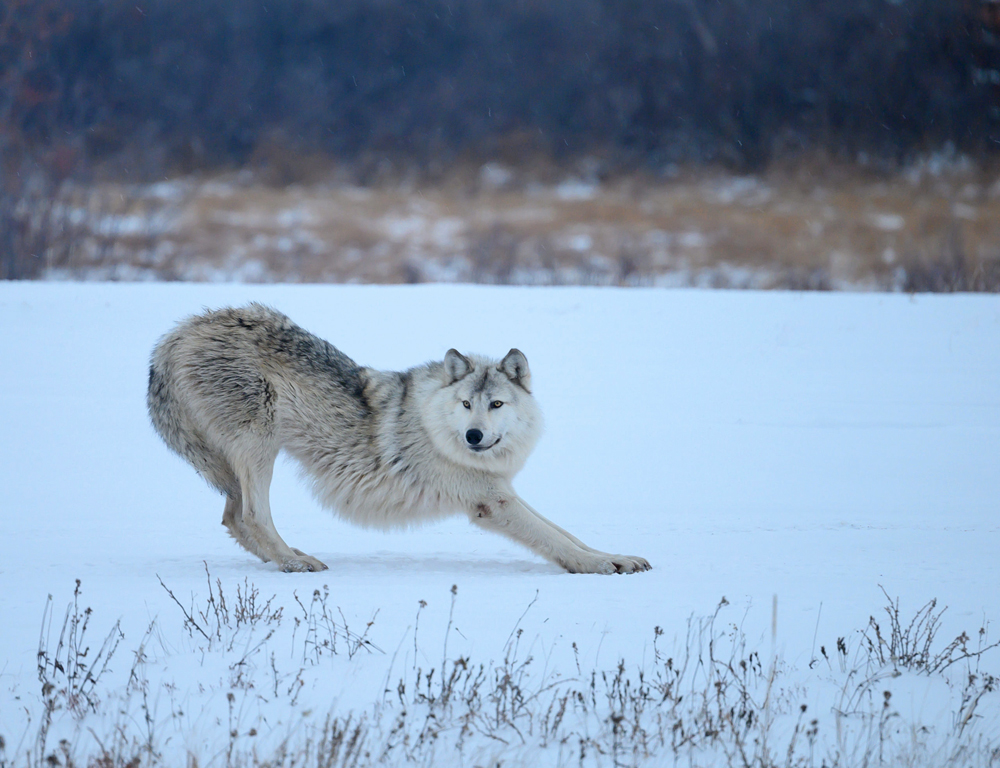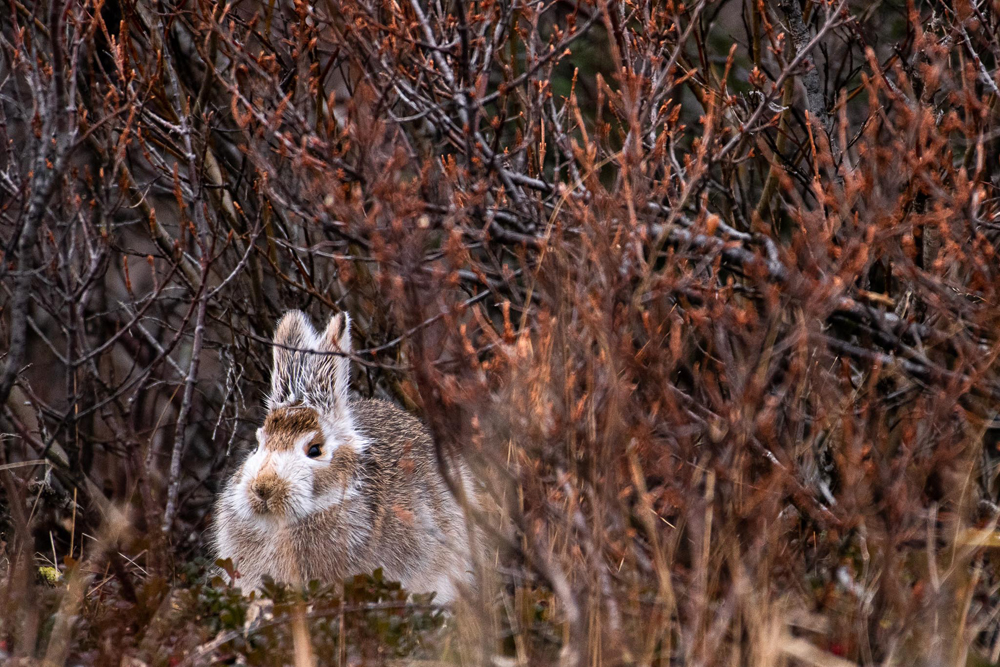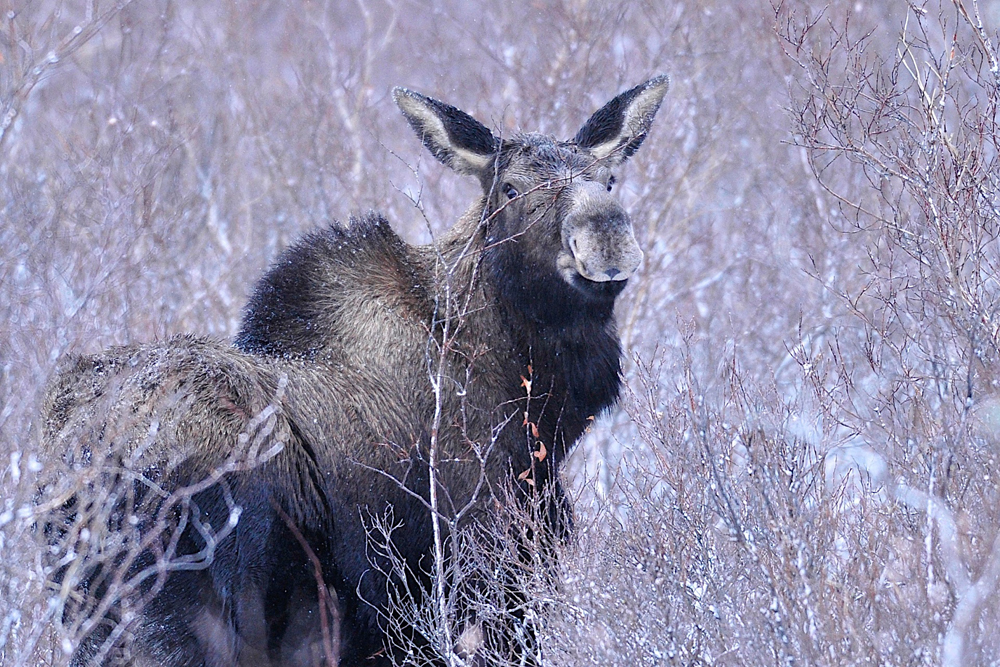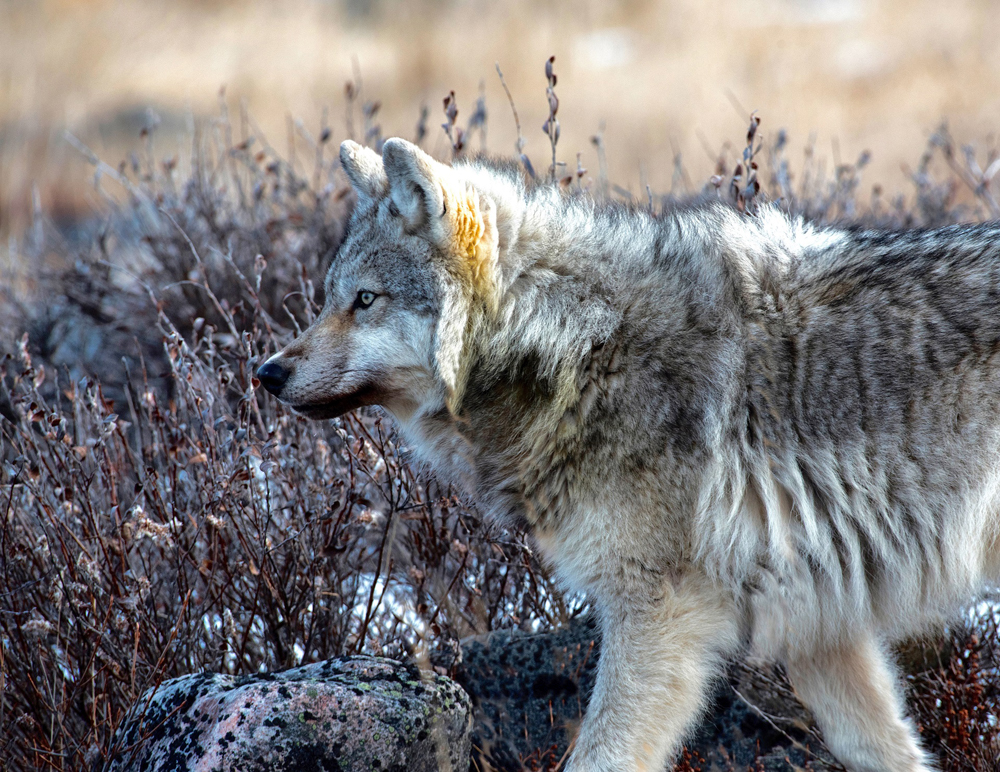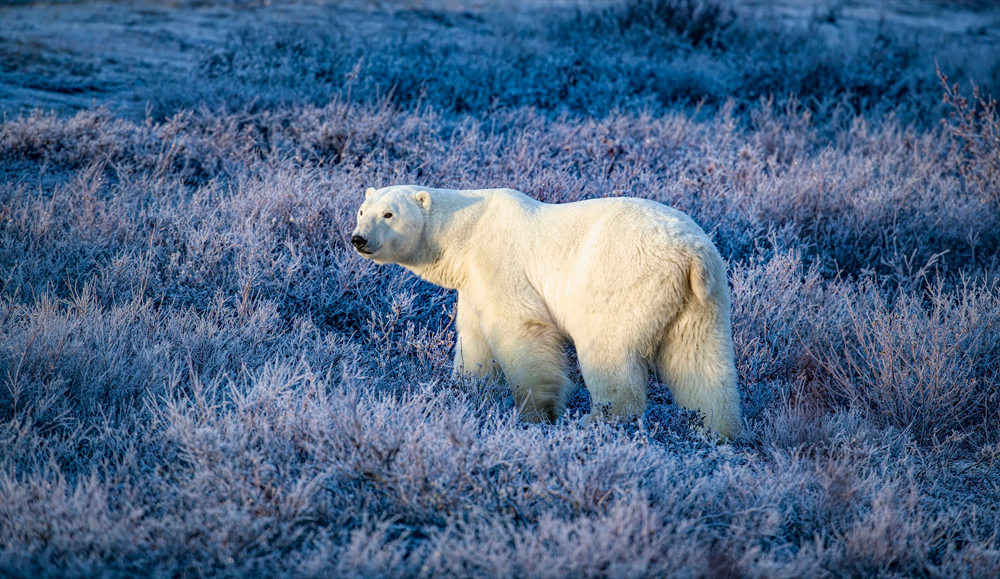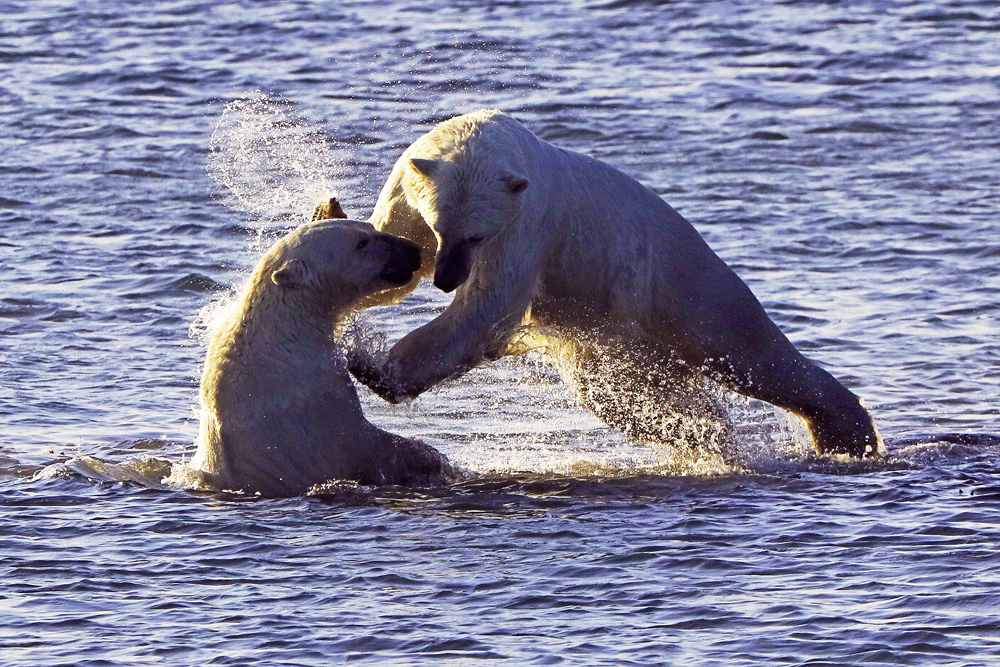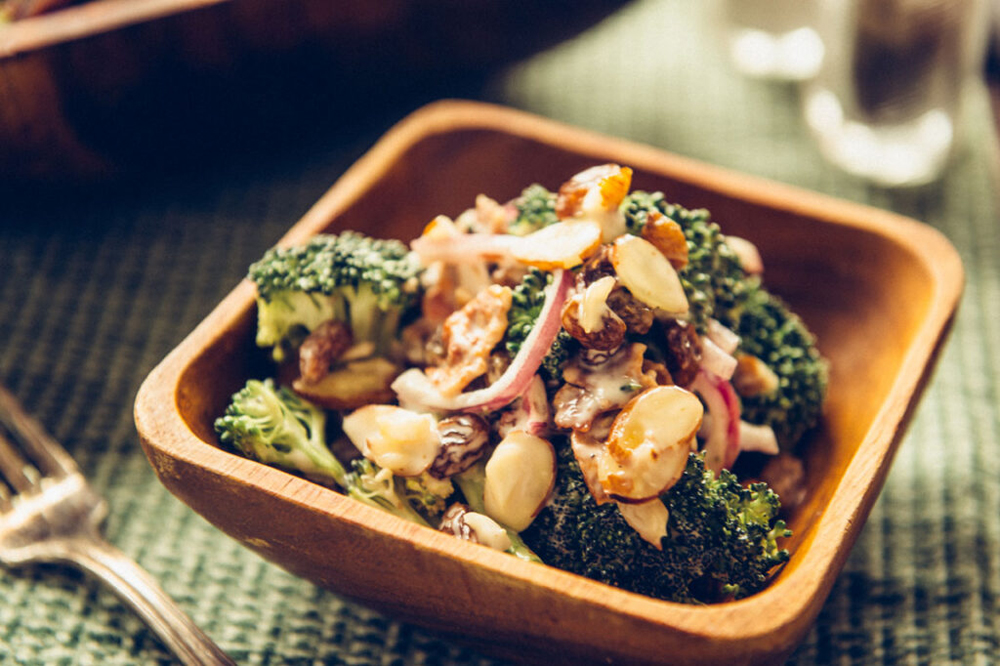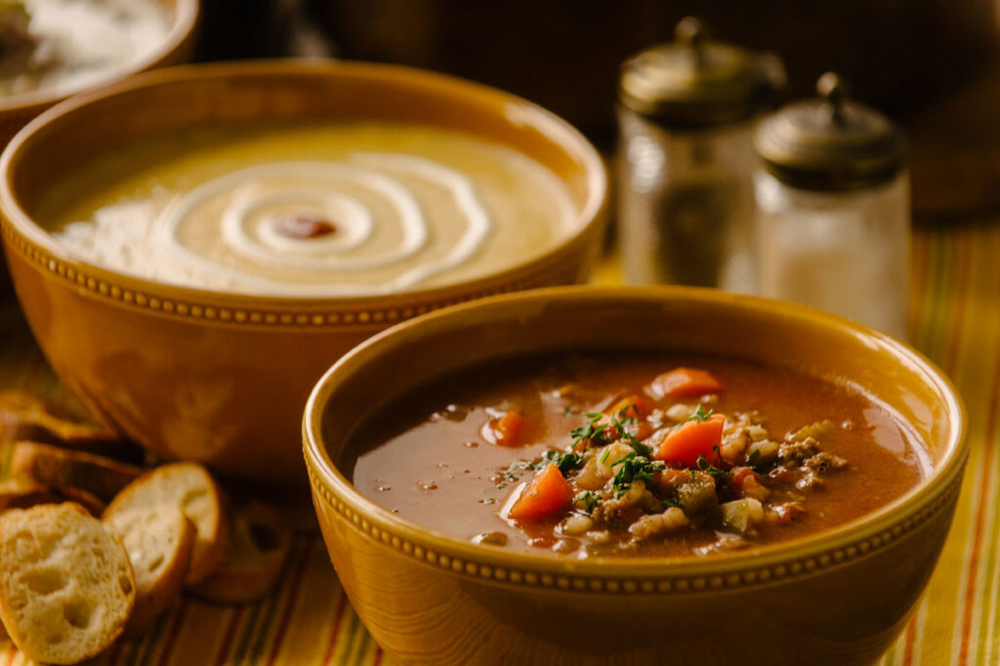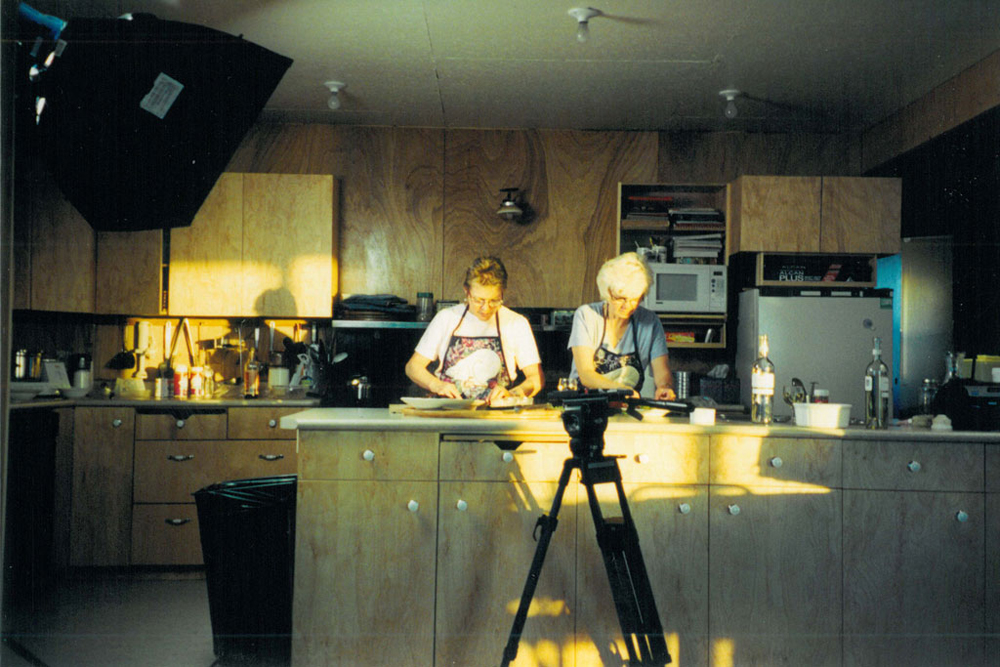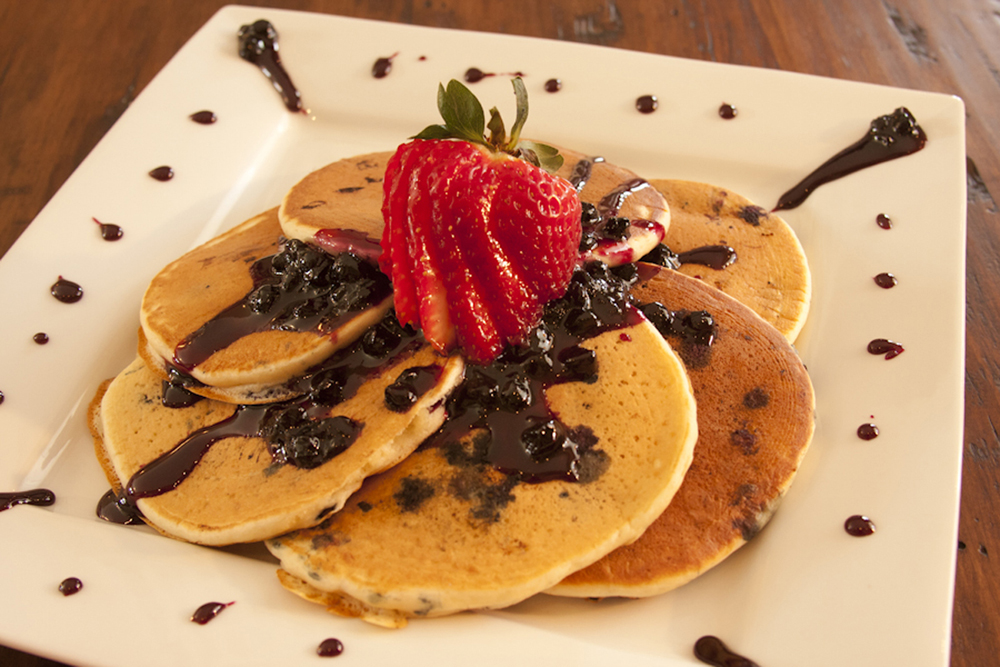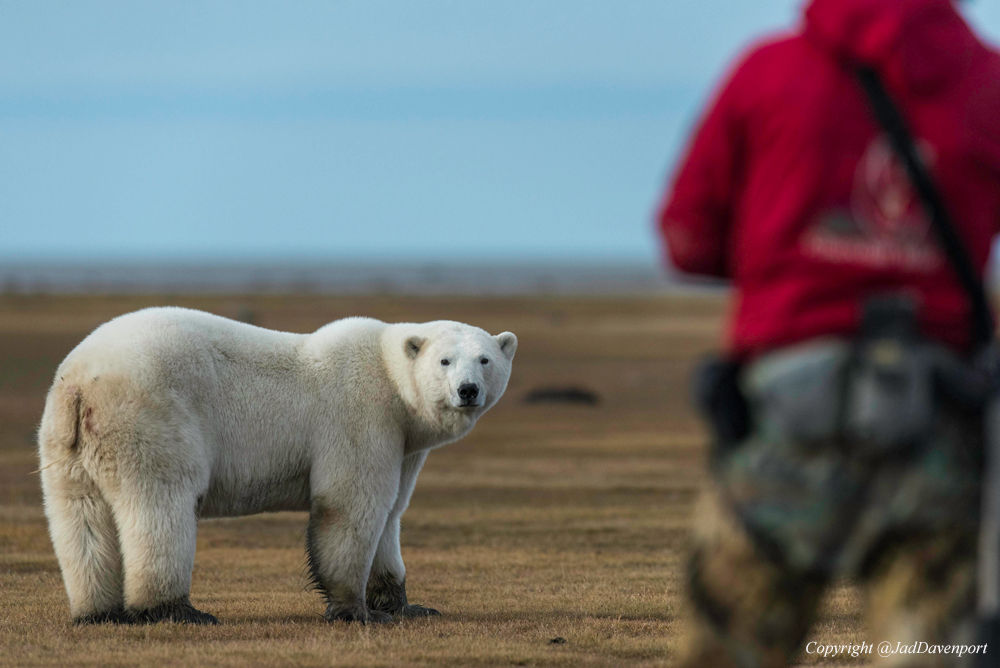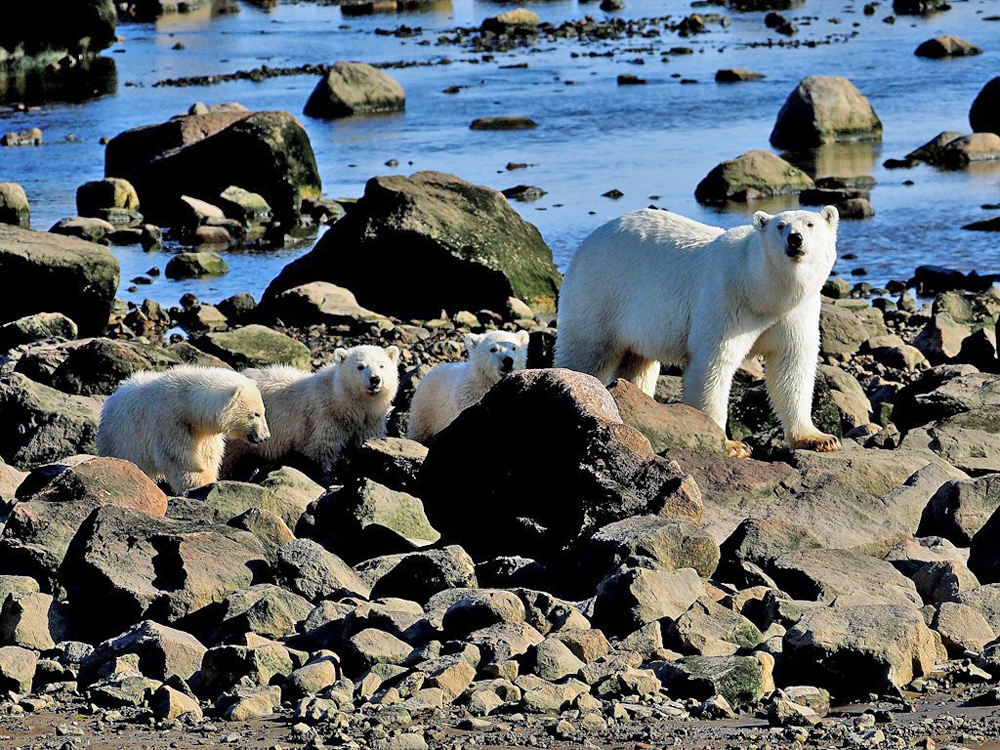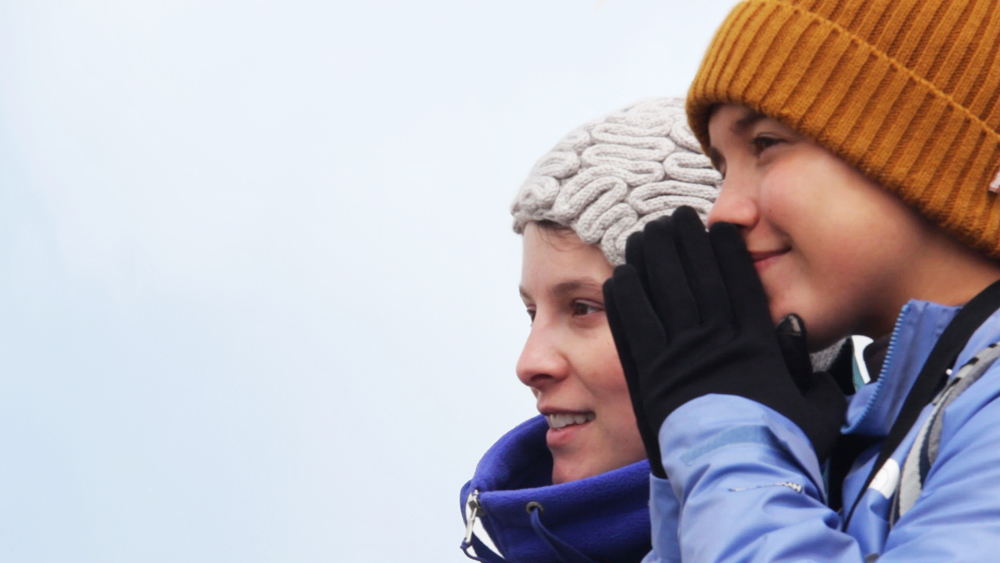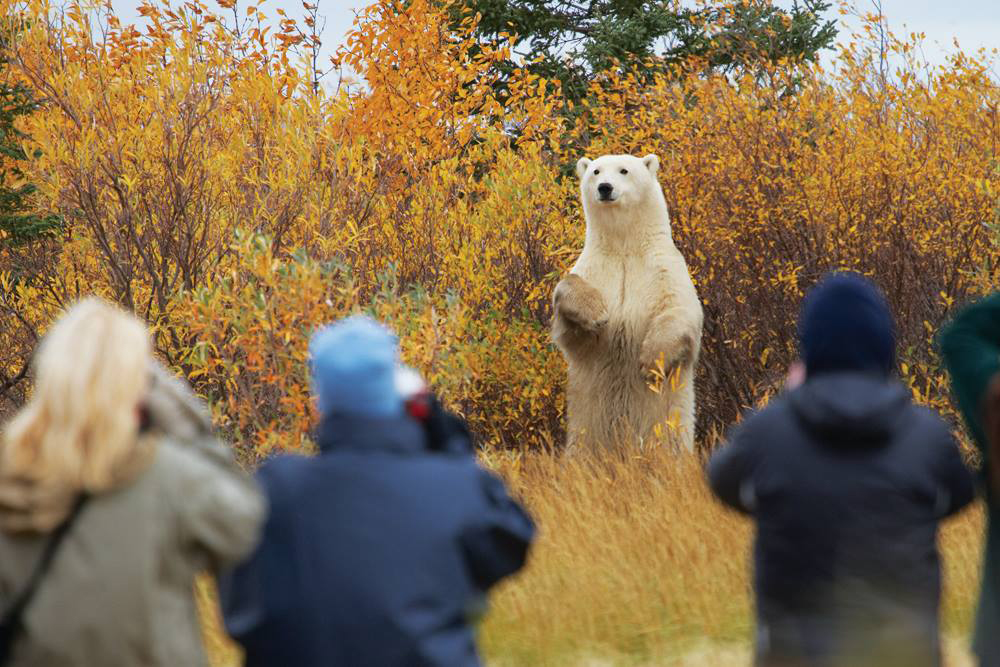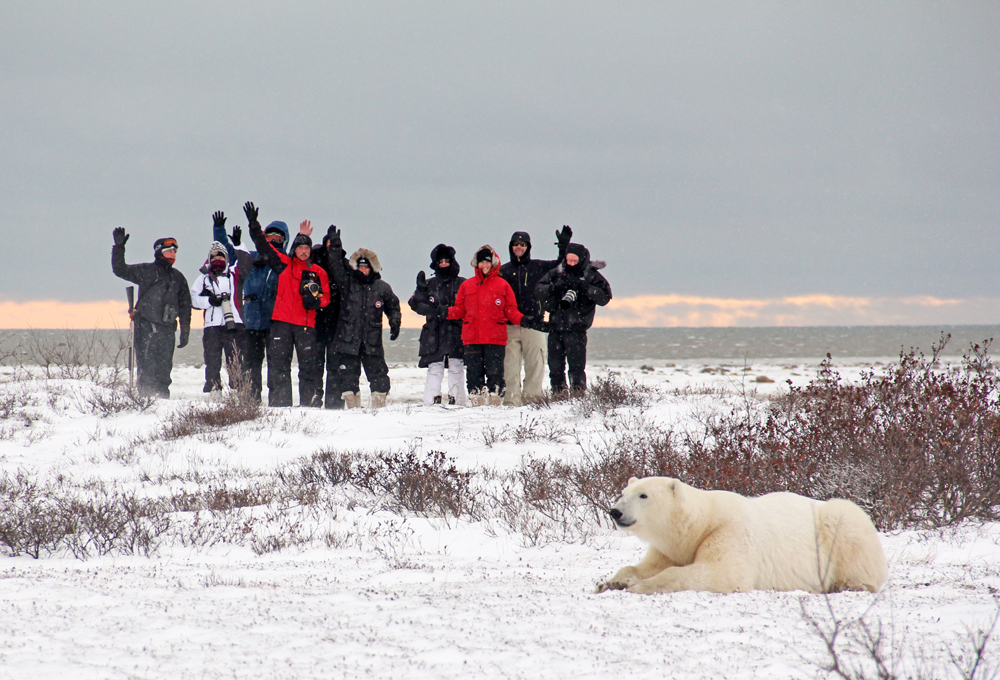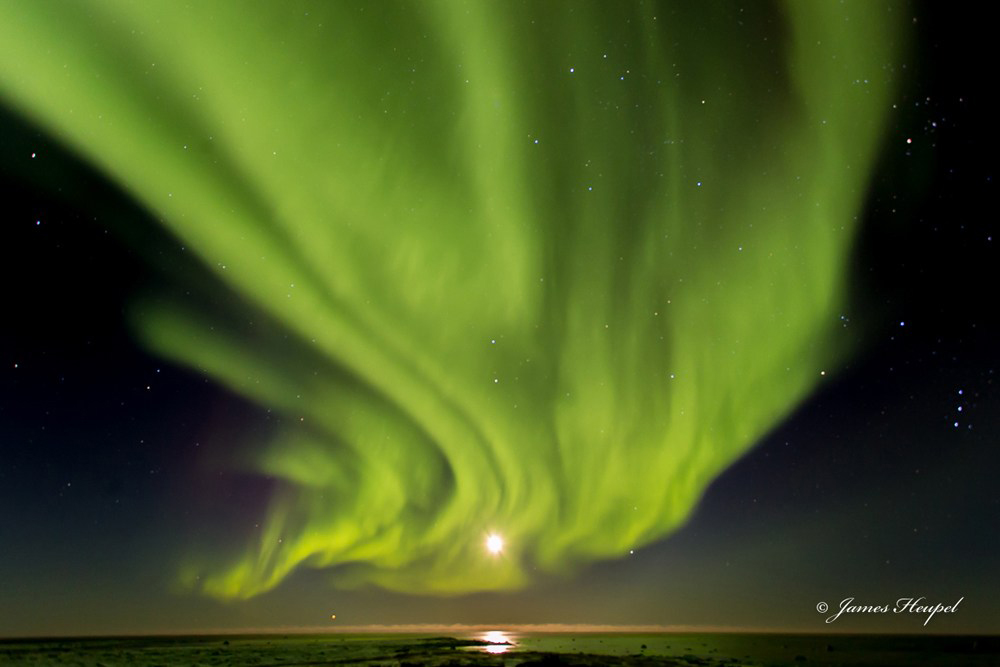In celebration of Churchill Wild’s 30th anniversary, for the next 30 days leading up to Christmas, we’ll take a look back at some of the milestones that have helped us become the world’s leading provider of luxury ground-level polar bear safaris and wildlife walking tours on Canada’s Hudson Bay Coast.
Thirty years ago, Mike and Jeanne Reimer bought an abandoned whale research station just north of the Seal River on Canada’s Hudson Bay coast. Backed by Jeanne’s parents, Doug and Helen Webber, their dream was to develop an ecotourism business starring polar bears and beluga whales, with a supporting cast of wolves, caribou, moose, wolverine, Arctic hare and fox, myriad birds and the beautiful flora of the subarctic. They welcomed one paying guest in 1994.
Today, Churchill Wild is recognized worldwide as the pioneer of the planet’s only true polar bear walking safaris. Over 6,000 guests have experienced the life-changing adventure of meeting a polar bear at ground level at one or more of our three luxury ecolodges on the Hudson Bay coast, two of which became members of the prestigious National Geographic Unique Lodges of the World collection when that program was in existence.
Churchill Wild has now won numerous national and international tourism awards for excellence, Mike and Jeanne have been elected to the Royal Canadian Geographical Society’s College of Fellows, and numerous elite professional photographers and filmmakers have travelled to the Churchill Wild ecolodges to capture rare photos and footage unavailable anywhere else in the world.
Many guests have become repeat visitors, creating hundreds of 5-Star Tripadvisor.com reviews for Seal River Heritage Lodge, Nanuk Polar Bear Lodge and Dymond Lake Ecolodge, and all have become loyal evangelists for Churchill Wild’s unique brand of ecotourism, for which we are eternally grateful.
Now let’s get started with Churchill Wild’s 30-for-30!
Churchill Wild’s 30 Days of Christmas
DAY 1 – On the first day of Christmas (1993) my true love gave to me: An abandoned whale research station
In 1993 Mike and Jeanne Reimer purchased an abandoned whale research station that would later become Seal River Heritage Lodge, with the goal of creating a tourist destination for polar bears, beluga whales and Arctic flora and fauna. The original structure had been dragged to the site from a military base in Churchill in the 1950s for use as a goose hunting camp and later as a whale research station. No one had used it in decades.
Mike admitted that at the time, the building was a “crooked, falling down, rotting-timbered mess. The windows and doors were all knocked out. There were bird nests in all the light fixtures and bear poop in the bedroom. It was basically a wide-open building shell.”
“The place itself looked like an old shack,” said Dennis Fast, who would go on to become Churchill Wild’s first official guide and photographer. “Dirt everywhere. Everything had been trashed by bears, wolves and foxes.”
“The building was blown over,” said Stewart Webber, who then worked for the family. “When you walked through the centre of the walls weren’t square. It was like being in in a Batman movie. It was in pretty tough shape.”
And the journey to 5-Stars began…
DAY 2 – On the second day of Christmas (1994) my true love gave to me: A new summer polar bear safari – Birds, Bears & Belugas – and our first paying guest!

Summer polar bear sitting pretty. Birds, Bears & Belugas. Seal River Heritage Lodge. Richard Voliva photo.
In 1994, a year after turning their abandoned whale research station into a livable structure, Mike and Jeanne welcomed their first paying guest at Seal River Heritage Lodge on their new Birds, Bears & Belugas summer polar bear safari.
“He was from Switzerland and his name was Gobi Oberhauzer,” said Mike Reimer. “I can’t remember if we saw a polar bear, but I think he had a fabulous experience. We spent a lot of time together hiking around and I had a little Honda 110 three-wheeler with a plastic trailer that Doug (Webber) had bought me. The trailer was just big enough to tie on a lawn chair for Gobi to sit in, and that’s how we went up and down the coast.”
Two journalists from Chicago, Hans Pfaff and Dolores Fredrickson, also made the journey to Seal River Heritage Lodge that summer, and more media arrived in the fall thanks to Travel Manitoba getting the word out about Manitoba’s newest ecotour.
Jeanne did everything inside and Mike did everything outside. They were intensely self-sufficient. They had no choice.
“You weren’t calling Roto-Rooter or Mr. Plumber or Joe Mechanic,” said Mike. “CAA doesn’t pull up and fix your boat and your quad. There’s no coast guard. You’re 100 percent completely self-reliant. You have to be. There’s nowhere to go. When something broke down you had to fix it yourself.”
And the journey to 5-Stars continued…
DAY 3 – On the third day of Christmas (1995) my true love gave to me: A new five-room bedroom wing at Seal River Heritage Lodge
Mike Reimer’s get-the-job-done attitude helped him expand Seal River Heritage Lodge during its second year of operation in 1994, using a combination of material hauled in by boat and snowmobile and some old prefab material found lying in the bush nearby.
“Herb Rempel, a construction contractor in Churchill, helped me cobble it together to create a separate bedroom wing,” said Mike. “The new wing had five bedrooms in it, so one of the bedrooms in the original building was turned into a staff bedroom.”
The lodge could now host 14 guests, but it was tiny. “We had to be very efficient in staying on top of the dishes,” said Mike.

Jeanne Reimer and daughters making cookies from the Blueberries & Polar Bears cookbooks during the early days at Seal River Heritage Lodge.
Jeanne Reimer recalls her family all bunking in one room. “Our room was basically a closet. It was just wide enough for a queen-size bed, and at the end of the room were bunk beds that were five feet long, perfect for the kids.”
The Reimers would raise four young children at Seal River Heritage Lodge, and it became a true family adventure in Canada’s subarctic on the Hudson Bay coast. “The kids would spend time in the kitchen helping me with cookies,” said Jeanne. “They did a lot of playing by themselves in the compound, too.”
Thanks to an existing fence built by the whale researchers, the kids could safely play in front of the lodge.
And the journey to 5-Stars continued…
DAY 4 – On the fourth day of Christmas (1996) my true love gave to me: The Great Ice Bear Adventure at Dymond Lake Ecolodge
In 1996, the Great Ice Bear Adventure was added to the Reimers’ fledgling fold of ecotours, but it would be based out of Jeanne’s parents Doug and Helen Webber’s Dymond Lake Lodge, which would later become Dymond Lake Ecolodge.
A 15-minute flight north of Churchill on Button Bay, Dymond Lake Ecolodge would later become a favourite destination for a polar bear named Scarbrow, who came by his name due to a scar over is eye earned in a fight with a wolverine. Scarbrow would visit Dymond Lake Ecolodge for 14 of the 15 years leading up to 2023.
The Great Ice Bear Adventure was significant in the development of Churchill Wild for two reasons. First, it offered an additional opportunity to see polar bears in the wild at ground level. Second, it took place at the lodge where the foundation for long-term success in the ecotourism business had been built years earlier.
Dymond Lake Ecolodge was already equipped to keep guests warm and cozy during the traditional polar bear viewing season of October and November, as it had been used as a goose hunting lodge for almost 30 years.
Dymond Lake would freeze over earlier than the main body of Hudson Bay, which made it an early-ice season attractant for polar bears. Additionally, when Dymond Lake was used for goose hunting, the goose carcasses would attract polar bears, which acted to teach guides about polar bear behaviour. The latter knowledge was passed down through the generations at Churchill Wild, and was significant in the development of safety procedures and protocols as Churchill Wild pioneered the world’s first polar bear walking safaris.
“New groups would come in via helicopter,” said guide and photographer Dennis Fast. “In the morning, 15 new guests would arrive and the first group would leave. We would go on hikes during the day and give talks in the early evening. We regularly adjusted our programs to make them better for guests.
“We’d get up every hour through the night to stoke the fire and watch for northern lights. And because there was no fence, two guides with flashlights would watch out for polar bears. Dymond Lake was starting to handle quite a few guests by that point.”
Guests also enjoyed a day on a Tundra Buggy® in Churchill at the end of each Great Ice Bear Adventure, as well as a memorable dinner at the Webbers’ home in Churchill. By 1994, Helen Webber and Marie Woolsey had already published the first book in their bestselling cookbook series Blueberries & Polar Bears, and guests at the dinner each received an autographed copy.
When the Great Ice Bear Adventure began, the accommodations at Dymond Lake were already on par with what ecotourists were expecting. The fact that there wasn’t a fence did not deter guests. The word was starting to get out about the rare opportunity to walk with polar bears in northern Manitoba and experiential travellers were starting to show up from around the world.
And the journey to 5-Stars continued…
DAY 5 – On the fifth day of Christmas (1998) my true love gave to me: A new breezeway, viewing tower and guest lounge at Seal River Heritage Lodge
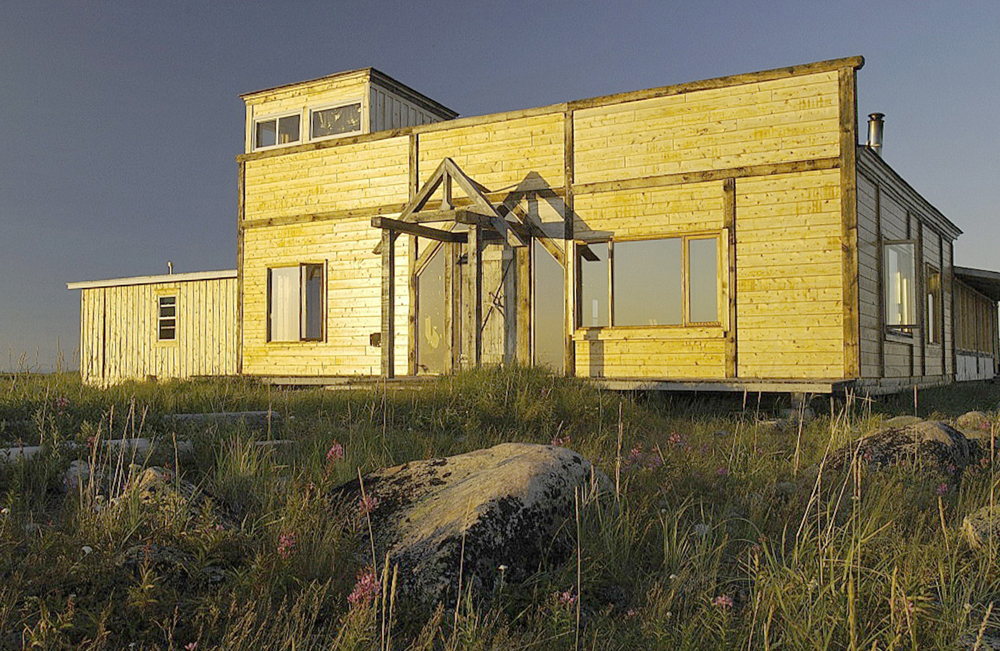
Seal River Heritage Lodge with new breezeway, viewing tower and guest lounge added in 1998. Elaine Friesen photo.
Although a new bedroom wing had been added at Seal River Heritage Lodge in 1995, guests had to walk outside, first looking left and right for polar bears, to get from the bedroom wing to the kitchen until 1998, when master craftsman Len Friesen arrived from Piney, Manitoba to build a structure that would connect the two buildings. An interior viewing tower was also added, which allowed staff and guests to spot polar bears approaching the lodge from a distance.
Len began working for the Webber family at North Knife Lake Lodge in 1986, and “he could build anything out of whatever you gave him to work with,” said Mike Reimer. What was supposed to be a simple connecting structure became an impressive covered walkway that also included a new guest lounge. Len was then involved in every major upgrade for Churchill Wild until 2016.
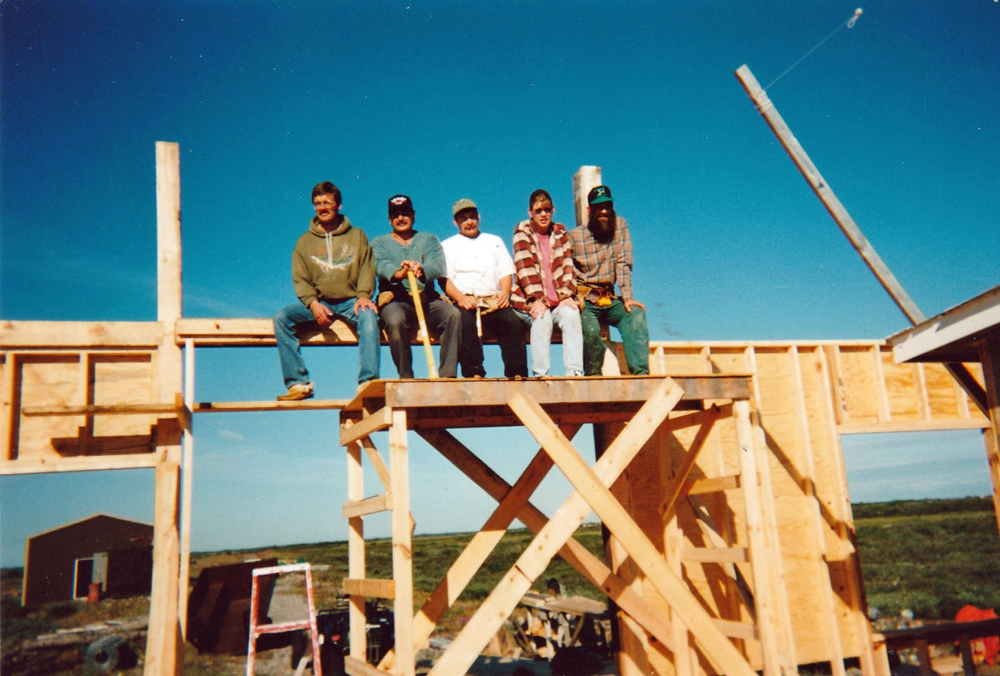
Construction crew at Seal River Heritage Lodge in 1998. Mike Reimer far left, Len Friesen far right. Elaine Friesen photo.
“At first glance, it appeared there was just enough material to build a breezeway with a mudroom at the entrance, and maybe a small reading lounge,” said Len, who was asked only to build a simple breezeway connecting the main building to the bedroom wing. “But there turned out to be enough material for quite a big building. Mike wanted it to look rustic, with a frontier-style entrance, like the false fronts they had on old western hotels, so we created a bit of a timber frame entrance.
“Jeanne didn’t know a thing about this. She was expecting to see a little breezeway connecting the two buildings. When she walked down the runway, I could see her eyes getting bigger and bigger and bigger as she realized what had happened. Her reaction was just priceless.”
And the journey to 5-Stars continued…
DAY 6 – On the sixth day of Christmas (1999) my true love gave to me: A winterized Seal River Heritage Lodge and a new fall Polar Bear Photo Safari
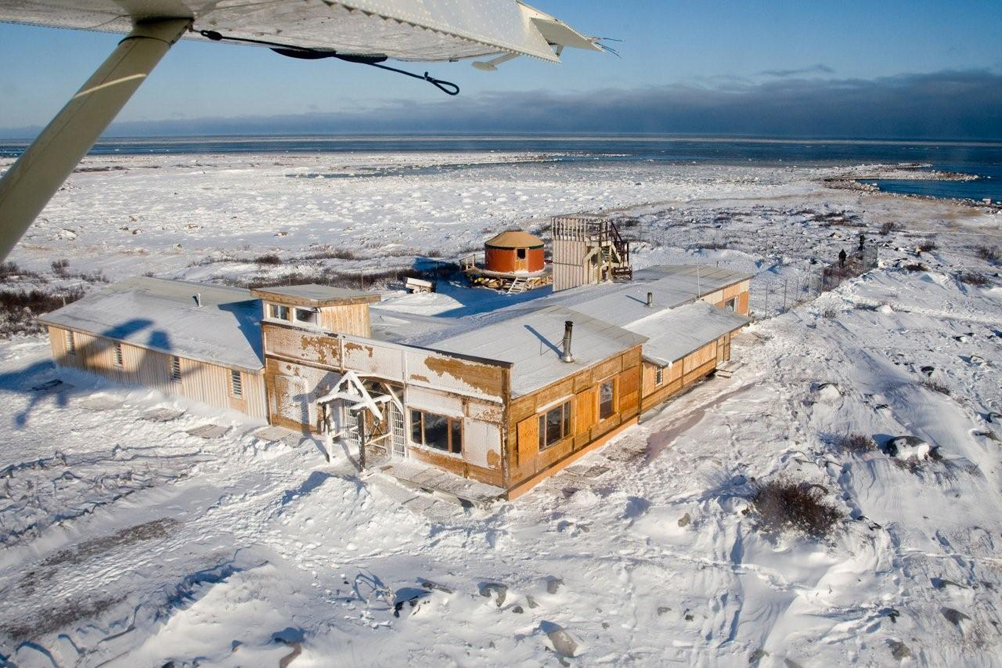
Seal River Heritage Lodge was winterized in 1999 and became the home of Churchill Wild’s newest fall Polar Bear Photo Safari. Wendy Kaveney photo.
In 1999 Seal River Heritage Lodge became fully winterized (which sounds much easier than it is on paper) and a new fall Polar Bear Photo Safari was offered.
Guests at Churchill Wild’s ecolodges enjoy “Arctic luxury” now, but it has taken decades of hauling hundreds of tons of material and equipment across the Hudson Bay sea ice to get to that point, sometimes through whiteout blizzards with temperatures as low as -50 degrees Celsius. Occasionally, a plane would bring in a load of materials and equipment, but that was not the norm with the polar bear lodges.
Normally, it was the D6 Cat and “Conan” the snow machine that were fired up to lead the annual spring Cat train across the ice on a trip so uniquely dangerous that it was once featured on the Ice Road Truckers television series. For many years, our creature-like Caterpillar tractors charged across the ice at “about two miles an hour downhill with a tailwind,” said Mike Reimer.
“We were up against jumbled pack ice, huge cracks, high-tide overflow, marauding polar bears, frozen limbs and broken equipment. And you’d better not forget anything. There’s no running out to the store to get a bolt or a beam in polar bear country.”
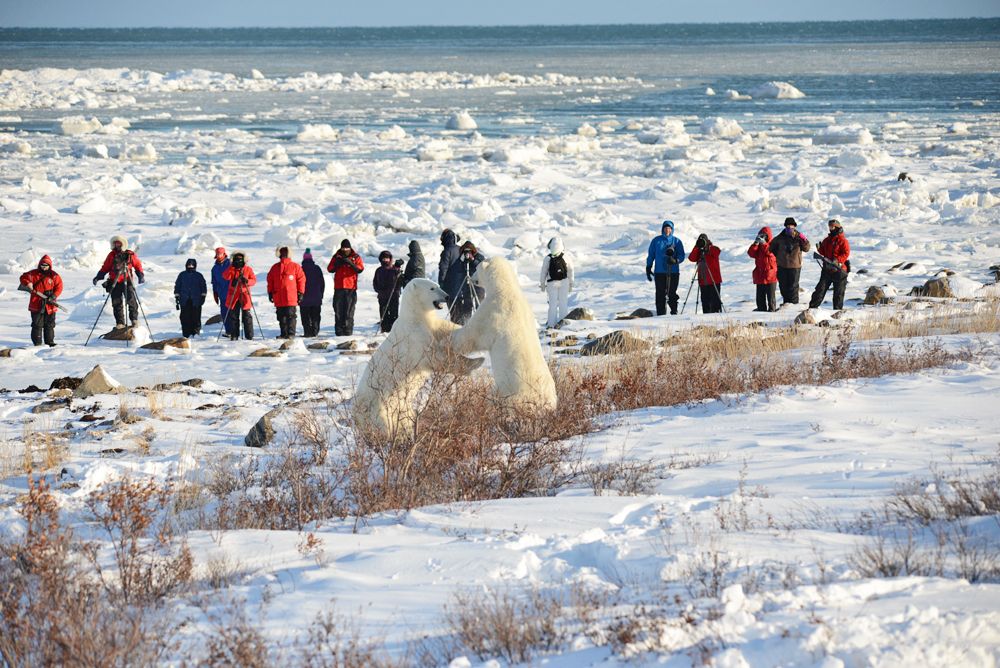
Front row seat to the fight on the Polar Bear Photo Safari Seal River Heritage Lodge. Bill Lyne photo.
With Seal River Heritage Lodge now winterized, and Churchill Wild able to offer a fall Polar Bear Photo Safari at Seal River, elite photographers from around the world quickly warmed to the chance to take ground-level photos of polar bears in the snow, with a backdrop of spectacular icy landscapes and seascapes.
And the journey to 5-Stars continued…
DAY 7 – On the seventh day of Christmas (2000) my true love gave to me: A new method for guests to swim with beluga whales at Seal River Heritage Lodge
Although new government regulations now prohibit swimming with beluga whales, in 1999 it was a different world. And thanks to the Reimer children, a change to the beluga whale viewing portion of the Birds, Bears & Belugas safari at Seal River Heritage Lodge gave guests the opportunity to swim — clad in dry suits — with these friendly “canaries of the sea.”
“The kids would swim on their stomachs while holding on to a rope attached to the boat and the belugas would follow them,” said Mike Reimer. “The problem was, the whales would be at their feet and they couldn’t see them, so we flipped things around and tied the rope to the kids’ feet.”
This way, the children were slowly towed behind the boat, face-to-face with the belugas. Mike also discovered how much belugas love music when he saw how they responded to the kids’ singing by swimming right up to them.
Mike had a 12-foot Zodiac with a 15-horsepower motor that he’d bought for fly-in fishing trips and it could take four people out on the bay to see the belugas. “I carried my little compass in my hand and when it got foggy, I’d steer by using the compass and timing myself with my wristwatch so I knew when to turn left so I could hit the lodge or at least hit shore,” said Mike. “I would literally set my compass, watch the clock and time myself. I knew about how long it would take to get to the lodge.”
The new adventure “worked like a charm,” said Dennis Fast. “One guest from Australia really loved the whales and he was thrilled when a beluga flipped over on its back and swam underneath him, giving him a belly rub. He got out of there looking like he’d just walked on water. Man, was he excited.”
The addition of swimming with beluga whales at Seal River Heritage Lodge led to more word-of-mouth bookings for Churchill Wild and guest numbers continued to increase.
And the journey to 5-Stars continued…
DAY 8 – On the eighth day of Christmas (2001) my true love gave to me: Churchill Wild’s 100th guest!
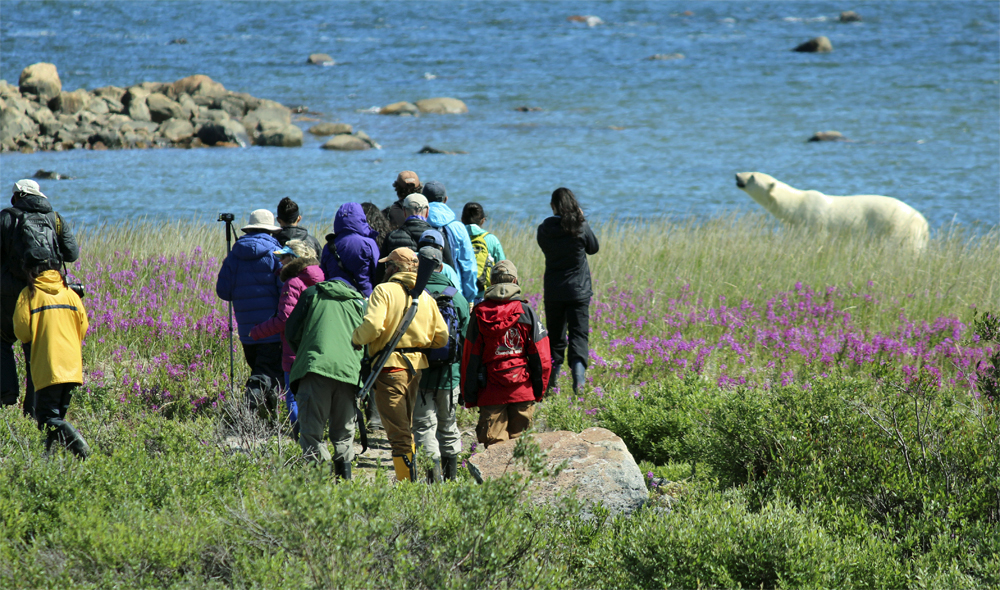
Ground-level polar bear photography during the summer on Birds, Bears & Belugas at Seal River Heritage Lodge.
The addition of beluga whale swims to the world’s first true polar bear walking safaris resulted in Churchill Wild passing the 100-guest mark in 2001.
“It seemed like it took forever to get to our 100th guest,” said Mike Reimer. “I remember it being a real struggle. Any money we made, we just poured back in to improve the lodges.”
The family pressed on, continuing to develop ideas that would enhance their ecotours. Guests were being flown from Dymond Lake to Seal River in the fall for a different kind of polar bear viewing experience farther north on the Hudson Bay coast. And swimming with beluga whales was already underway.
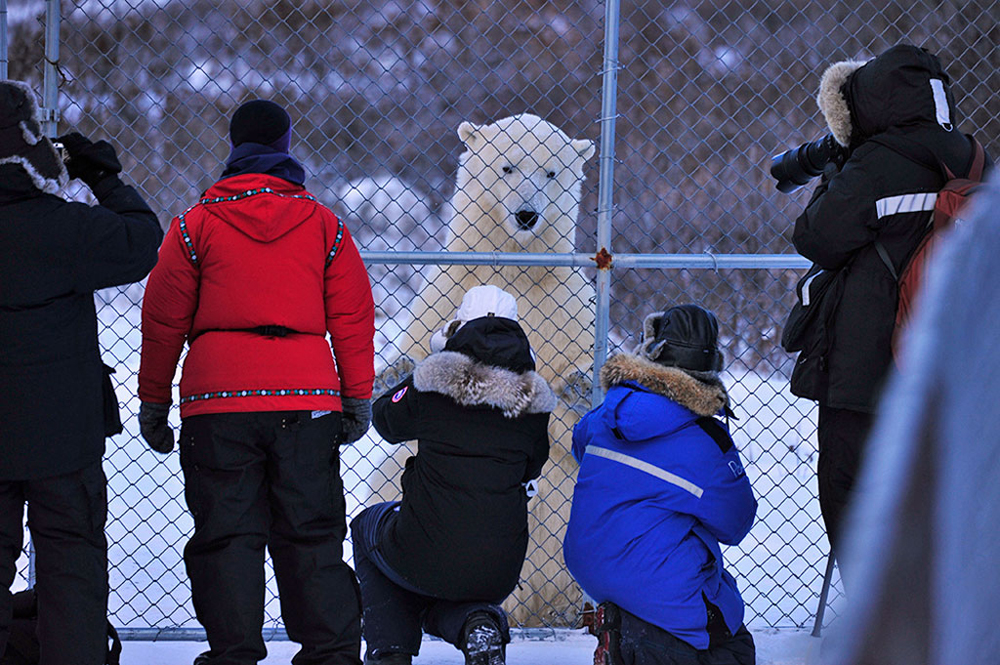
Morning meeting. Great Ice Bear Adventure. Dymond Lake Ecolodge. Guests on the inside. Polar bear on the outside. Ian Johnson photo.
As guest numbers continued to rise, additional staff were hired at the lodges. And while it may have seemed to take forever to get past the 100th visitor mark, the slow and steady growth was actually a blessing in disguise.
“It was key,” said Jeanne Reimer, looking back on the early years at Churchill Wild. “Having a great idea and starting a business doesn’t make you a people manager. There was a lot to learn along the way. There was some stress over the growth years, but we worked hard to find people who really wanted to be at the lodges, who would love the environment they’d be working in.”

Guests photographing a polar bear at ground level at Seal River Heritage Lodge on the Polar Bear Photo Safari. Ian Johnson photo.
Jeanne and her sister Shari did most of the hiring as Churchill Wild was growing, and the experience they’d gained while working in their parents’ lodges was invaluable.
Finding and selecting people who would blend seamlessly into Churchill Wild’s unique family-based culture of kindness and customer service wasn’t easy. Jeanne and Shari’s background provided a knowledgeable edge that would prove itself over time.
And the journey to 5-Stars continued…
DAY 9 – On the ninth day of Christmas (2004) my true love gave to me: The official Churchill Wild name and a polar bear-inspired logo to go with it!
By 2002, the town of Churchill was starting to become famous as a world-class destination for polar bear seekers, and people were automatically associating the word “Churchill” with polar bears.
Both Seal River Heritage Lodge and Dymond Lake Ecolodge were already attracting guests from all over the planet, and a surprisingly simple name change would help them gain much valued exposure. To capitalize on Churchill’s name recognition, the word “Wild” was added to “Churchill” to incorporate the remote aspect of the lodges, and the name “Churchill Wild” became official in 2004.
A young polar bear named Crease, whose photo was taken by Churchill Wild resident photographer and guide Dennis Fast, became the star of the new Churchill Wild logo, and the transition was complete.
“I was leading a group of guests from Dymond Lake Ecolodge towards Hudson Bay and we were walking right past a resident bear I called Crease,” said Dennis. “Crease was quite a large male who had spent three weeks lazing on the frozen lake in front of the lodge. As soon as we passed the shore of the lake, I saw him stand up and begin watching us.
“I didn’t quite trust Crease, so I told the group we would keep our distance rather than approaching to get photos of him. After a short discussion, we decided to alter our plans and head back to the lodge, knowing that Crease would likely follow, providing opportunities for photos through the windows.
“Within minutes, Crease began tracking us and made it to the spot we had recently vacated. When we arrived back at the lodge, the guests headed inside while Mike (Reimer) and I stayed outside so I could get just a few of my own photos. As I was clicking away, Crease lifted his head, looked me in the eye, and exploded into action.”
And the journey to 5-Stars continued…
DAY 10 – On the tenth day of Christmas (2006) my true love gave to me: Solar power and sustainability
While the concept of sustainable tourism has become more popular over the past decade, it has been a priority for Churchill Wild since 1993. Sustainability is a necessity of life in the north and Churchill Wild lives by the three R’s: reducing, reusing and recycling. These principles have guided the company from the very beginning and are the foundation of their modern sustainability practices.
Churchill Wild has been refurbishing buildings with recycled materials from Day One. They’ve also adopted the use of solar power at all their ecolodges, in an effort to save costs and reduce reliance on fossil fuels. Buildings are designed to take advantage of natural light, and systems are in place to reduce water consumption and compost food waste.
Churchill Wild strives to be a steward of the land and protect the natural environment by using specific trails for excursions and minimizing the use of motorized vehicles at the lodges. The preferred method of exploration is through interpretative walking tours that allow guests to connect deeply with the land, while considering their impact upon it. Evening presentations allow guides to further share the rich history of the Hudson Bay coast and its ecosystems.
In addition to solar power, which reduces diesel fuel consumption by up to 75 per cent at the lodges, sustainability practices include grey-water recycling systems, the use of local lumber and recycled materials in construction projects, strict recycling and composting policies, biodegradable cleaning products and in-room toiletries, energy-efficient appliances and lights, minimal use of motorized vehicles and a commitment to using locally foraged and harvested foods whenever possible.
Churchill Wild’s ultimate goal is to bring together wildlife and visitors in a way that inspires guests and promotes respect for the welfare of the land and the remarkable animals that live on it.
The journey to sustainability actually began at North Knife Lake Lodge, owned by Churchill Wild co-founder and owner Jeanne Reimer’s parents, Doug and Helen Webber. North Knife Lake Lodge became the first fly-in fishing lodge in Canada to install a solar power system in 1989.
The system paid for itself within three years, and set the standard for sustainability practices and operating efficiencies that still exists at the Churchill Wild lodges today. In 2006 it was moved to Dymond Lake Ecolodge.
And the journey to 5-Stars continued…
DAY 11 – On the eleventh day of Christmas (2009) my true love gave to me: Nanuk Polar Bear Lodge
In 2009, Churchill Wild purchased Nanuk Polar Bear Lodge from Stewart Webber, a family friend.
“I just knew it was going to be another exceptional ecotourism destination,” said Mike Reimer. “It had an incredible wildness about it that you couldn’t ignore.”
Located deep in the heart of polar bear country, 40 kilometres east of Canada’s historic York Factory on the southern Hudson Bay coast, Nanuk is home to polar bears, black bears, moose, wolves, caribou, Arctic fox, wolverine, myriad birds and other wildlife. Strictly ruled by nature — and haunted by the souls of Canada’s first inhabitants and the explorers that followed — Nanuk has a mystique about it that is difficult to put into words.
“There was nothing else like it out there, anywhere.” said Stewart. “It allowed us to be there. You had to roll with Mother Nature 100 percent of the time. Nanuk has a certain beauty and a feeling about it you can’t forget. It seeps into you. I know for a fact that Mike was smitten by that feeling when he was on the ground there for the first time. He felt it as soon as he arrived. I call it the ‘Nanuk Magic.’ There’s definitely a feeling there you won’t find anywhere else in the world.”
Originally purchased from John Hicks in 1997 as a goose hunting destination, it wasn’t long before Stewart figured out that polar bears were the kings at Nanuk. They were going to be either a problem or a godsend. He decided they would be the latter.
“We were lucky to have Albert ‘Butch’ Saunders there from Day One,” said Stewart. “He helped us establish the early protocols that are in place for the polar bears now. He had more experience than just about anyone out there for living and travelling and surviving on the coastline.”
Stewart had the experienced guides he needed, and saw the opportunity for additional polar bear tourism, but had difficulty getting the word out — until National Geographic photographers arrived and were able to take close-up photographs of polar bears at ground level.
“Once those photographs got out there on the internet, the program evolved fast,” said Stewart. “It was taking off quickly, but I didn’t have the infrastructure like Mike had in place at Churchill Wild. It started to get too big, too fast. I was already 12 years into a 10-year program and decided it was time to retire.”
Churchill Wild had already seen the value of sponsoring media groups and photographers at Dymond Lake and Seal River, but it also had a system in place to handle the resulting influx of additional guests. Adding Nanuk to the family of lodges would require some logistical changes and additional staff, but if the polar bears and wildlife cooperated, the new lodge would almost certainly be successful. The first guests arrived in 2010.
The polar bears and wildlife welcomed them from the start.
And the journey to 5-Stars continued….
DAY 12 – On the twelfth day of Christmas (2011) my true love gave to me: the new Arctic Safari
One of Churchill Wild’s most ambitious adventures, the Arctic Safari was introduced at Seal River Heritage Lodge in the fall of 2011, and provided guests with the unique opportunity to witness polar bears and other Arctic wildlife against a backdrop of stunning fall colors.
The Arctic Safari featured two nights of Arctic glamping at Schmok Lake, situated on the Barren Lands 230 km north of Churchill near the Nunavut border, and four nights in the Arctic luxury of Seal River Heritage Lodge, where guests could walk alongside polar bears and observe other fascinating creatures like Arctic hare and Arctic fox.
The Barren Lands are home to a remarkable variety of wildlife that has adapted to survive in this unforgiving environment. The migratory Qamanirjuaq caribou herd, lemmings, snowy owls, gyrfalcons, and occasionally grizzly bears, wolves, or wolverines can be found in this desolate but beautiful expanse.
These ancient lands possess an air of mystery, with ancient rock formations that seem to hold forgotten tales. With a rich cultural history spanning thousands of years, the Barren Lands have been inhabited by Indigenous peoples who safeguard the secrets of ancient hunting grounds, sacred sites, and archaeological remnants, enticing adventurers to explore, discover, and unravel hidden secrets.
Tundra Camp offered guests the opportunity to participate in activities such as blueberry picking, jam making, fishing, invigorating hikes along the eskers, and for the adventurous, even a polar plunge. In the evening guests could cozy up by the fire or in their Arctic Oven tents while stargazing and enjoying the mesmerizing Northern Lights.
On leaving Tundra Camp, a guest from Australia commented:
“I just never understood how big the Barren Lands were. You go to the Serengeti and you’re never far from a fence or a road. But up at Tundra Camp you’re in the middle of nowhere, it’s true wilderness. When you turn off your lantern at night, you feel this awesome, deep silence. It’s just you and the stars and the Northern Lights. It’s pure magic.”
An extra layer of excitement was added to the Arctic Safari when award-winning National Geographic photojournalist Jad Davenport came aboard to lead the trip. Jad provided guests with valuable insights on photography and storytelling.
And the journey to 5- Stars continued…
DAY 14 – On the fourteenth day of Christmas (2011) my true love gave to me: A new Mothers and Cubs safari at Nanuk Polar Bear Lodge
While upgrades and improvements continued at all three Churchill Wild ecolodges from 2010 to 2017, media coverage and guest numbers also increased, which led to the creation of new polar bear safaris including the Mothers and Cubs safari at Nanuk Polar Bear Lodge in 2011.
Moms and cubs had been spotted at Nanuk for decades, and the name for the new safari was a natural fit, although it would later be changed to Hudson Bay Odyssey to reflect the unique blend of wildlife, historical mystique, and soulful magic that is experienced by visitors to this area of the Hudson Bay coast.
Nowhere else in the world can you see polar bears, black bears, wolves and moose in close proximity in the same wilderness. Rare photos of a polar bear and black bear together have been captured multiple times over the years, as have shots of polar bears and wolves, black bears and wolves, and wolves and moose. Will someone ever get all four in the same frame? And let’s not forget the other wildlife at Nanuk, which includes Arctic hare, Arctic fox, wolverines and much more.
Freshwater rivers that cut across the landscape and flow towards the bay provide habitat for otters, sea run brook trout and a rich array of birdlife. Myriad winter and shore birds make their home at Nanuk, which is located on the Mississippi Flyway, and the spring and fall migrations of hundreds of thousands of birds are something very special to watch.
Each morning after a hot breakfast, guides outline a plan for the day’s excursions. If there are bears near the Lodge, morning tours might be delayed so that guests can take advantage of photo and observation opportunities. Daily outings may include coastal exploration of the tidal flats and Hudson Bay shoreline, or the vast beach ridges and surrounding river deltas.
The sweeping landscapes and seascapes surrounding Nanuk are steeped in history. The 300-year-old cannons that guard the picture windows at the Lodge are possible remnants of the 1697 Battle of Hudson Bay, which took place in the waters near York Factory, a key trading post established by the Hudson Bay Company, just 40 km from Nanuk.
The cannons at Nanuk were discovered buried near the lodge but have never been identified. Could they have been part of the Battle of Hudson Bay? And what became of the souls that manned the ships. Only the wilderness knows, but from Day 1, the Nanuk “magic” was strong.
And the journey to 5-Stars continued…
DAY 15 – On the fifteenth day of Christmas (2012) my true love gave to me: New bedrooms with ensuite washrooms in the Lakeshore guest cabin at Dymond Lake, a new fenced in compound, and a new name!
Dymond Lake Lodge consisted of only a canvas-covered Quonset hut when originally purchased by Churchill Wild co-founder and owner Jeanne Reimer’s parents Doug and Helen Webber in 1967. But, by the time the Great Ice Bear Adventure began in 1996, there were three permanent structures in place for guests.
Unbeknown to most, Dymond Lake Lodge was very important in the development of Churchill Wild. Along with Doug and Helen’s North Knife Lake Lodge, it was the place where Jeanne, her sisters Shari and Toni (who still work for Churchill Wild today), and Churchill Wild co-owner and founder Mike Reimer first learned the art of customer service, which also included exceptional food.
Many of the recipes for the bestselling Blueberries & Polar Bears cookbooks were first prepared by Helen at Dymond Lake Lodge. All the recipes were guest tested, and only the very best made it into the cookbook series written by Helen and her friend Marie Woolsey. A testament to their quality is the fact that they have now sold over 100,000 copies, and they form the base that Churchill Wild’s culinary experience was built upon.
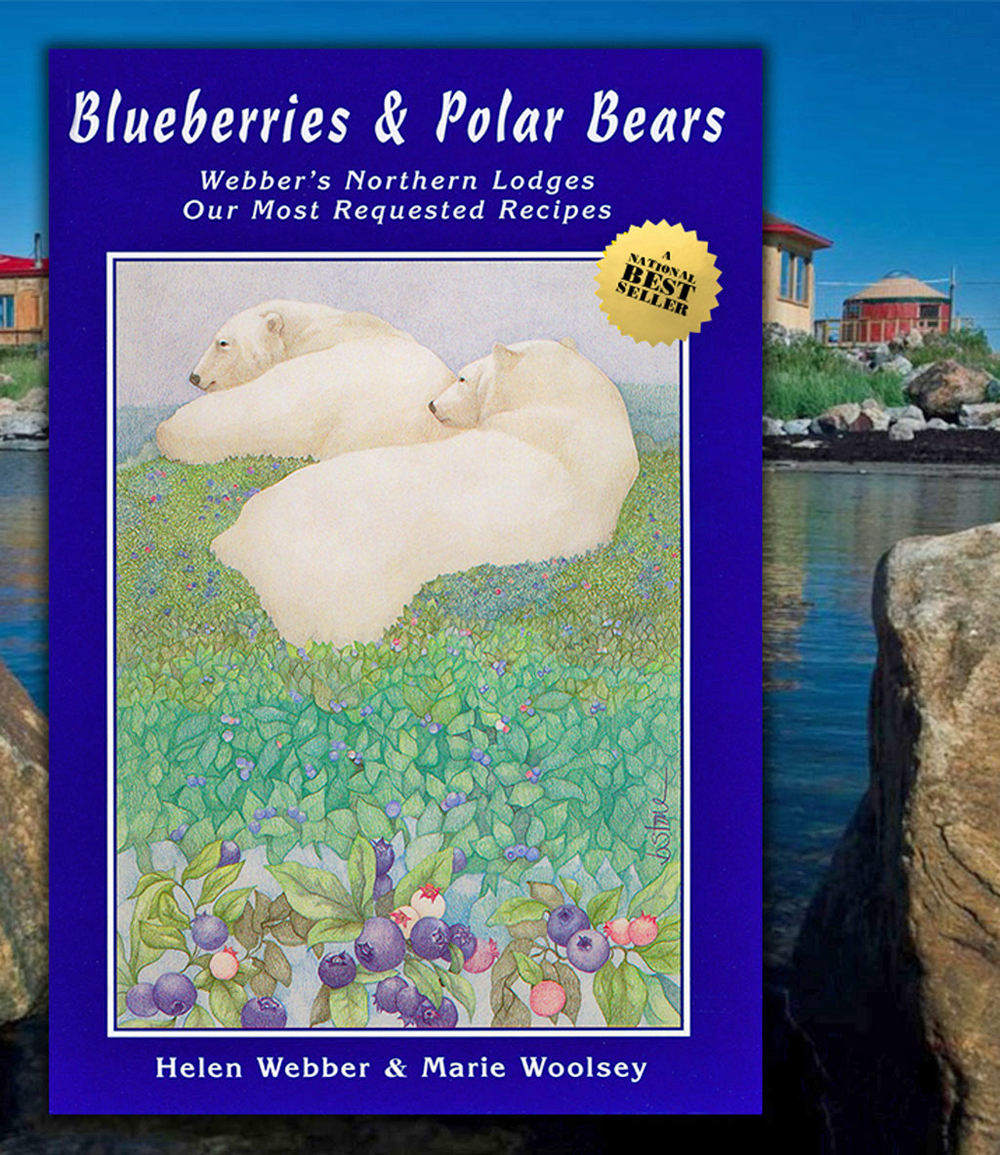
Born at Dymond Lake Ecolodge and first published in 1994, the bestselling Blueberries & Polar Bears cookbook series written by Helen Webber and Marie Woolsey has now sold over 100,000 copies.
The exceptional customer service and culinary experience now in place at Churchill Wild extends back almost 100 years in northern Canada on Jeanne’s side of the family. Jeanne’s parents, Doug and Helen, met, married, and raised their children in Churchill, and have now worked in the northern tourism business for over 50 years. Helen’s father Fred Martin, and his brother-in-law Oscar Sigurdson, first established a trading post on the Maguse River in the Northwest Territories during the 1930s.
Four decades later, in 1972, the cabin now known as the Lakeshore was built at Dymond Lake. A separate new kitchen was built in 1981, and a dining room addition followed in 1989. The Wilson cabin, which features large picture windows, was added in 1991, but there was no fenced-in compound when the Great Ice Bear Adventure began.
“I liked the fact that Dymond had no fence,” said Doug. “But it later became obvious that we needed one for the ecotours. We had to have a guide in the Wilson just to escort everybody from one building to another for meals. Guests couldn’t even go outside to smell the flowers without having a guide with them.”
Not only did Dymond Lake Lodge get a new fenced in compound in 2012, the Lakeshore cabin also received an extensive upgrade in the form of new bedrooms with ensuite washrooms, and Dymond Lake Lodge was renamed Dymond Lake Ecolodge, which reflected the sustainability practices in place at all three Churchill Wild lodges, including solar power.
The fenced-in compound kept guests safe and allowed them to get within mere feet of the wildlife that stopped by to check things out during the Great Ice Bear Adventure. It was also a great place to lay down on the tundra and watch the northern lights dance across the sky.
And the journey to 5-Stars continued…
DAY 16 – On the sixteenth day of Christmas (2013) my true love gave to me: A new timber frame lounge and dining room at Nanuk Polar Bear Lodge, and the lodge’s first solar power system.
In the summer of 2013 Nanuk Polar Bear Lodge received an extensive upgrade in the form of a new timber frame lounge, a new kitchen and the first ever solar power system at the lodge.
Construction started in June, but before that the building materials had to be organized. This meant lumber, timber frame, plumbing, electrical supplies, solar panels, inverters, a 45 kW generator and more. Then it had to be hauled 110 nautical miles from Gillam to Nanuk Polar Bear Lodge, along with two construction crews and even more helpers.
The material was flown in on a bright yellow Bassler BT67, a modified DC3 that had been stretched approximately 10 feet and had its power converted from an old radial engine to new turbine engines that could haul over 10,000 pounds. Everything from stacks of lumber to the new Tundra Rhino had to fit on this plane.
The Tundra Rhino was custom built by Stewart Reimer to travel the coastline and move up to eight guests at a time. It was an 8-wheeler when loading started, and a 2-wheeler by the time it got on the plane, but it fit! There was less than an inch of space left when the generator was loaded.
It took five 14-hour days to get everything hauled in a set up. The only downside to having a plane as large as a modified DC3 do the hauling was the fact that the runway was only 3,000 feet long and 120 feet wide, which left nowhere for the plane to turn around, but that problem was solved with a little towing ingenuity (see video above).
When the shop was finished it included 16 235 W solar panels that delivered 4000 W of charging power to the 48-volt battery bank. There was also an eco-friendly 45 kW diesel generator as backup, but the generator was rarely needed due to the ample solar power. The floor of the new dining room was then built and the erection of the timber frame began.
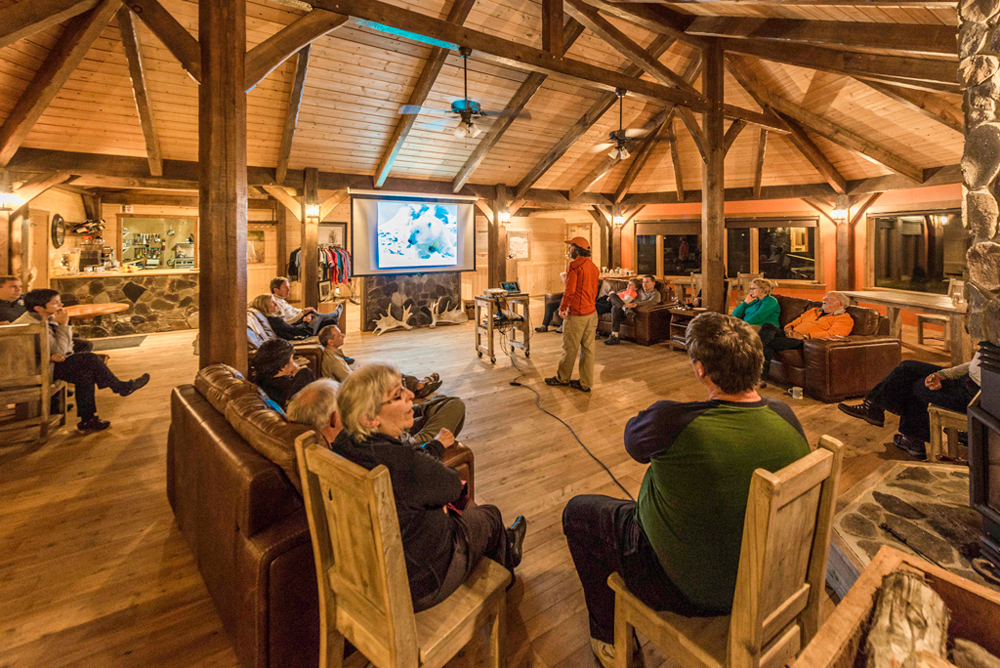
Guests enjoying new lounge at Nanuk Polar Bear Lodge.
There were four-legged visitors almost every day. It seemed all the animals along the coast and in the forest wanted to know what was going on. There were two polar bears in camp posing for pictures, and at least six more within 10 km of the lodge. There were also multiple black bears on site, along with a pair of yearling moose and a young black wolf that came right up to the fence.
The new timber frame structure was completed just in time for the first guests to arrive at Nanuk on August 29, and they thoroughly enjoyed dining, relaxing and viewing picture-window wildlife from the new lounge.
The first group of guests were led by professional photographer Robert Postma, who got along famously with everyone and went out of his way to be helpful. Guests were treated to daily visits from black bears just outside the lounge and were able to get up close and personal with polar bears every day out on the Hudson Bay flats.
The second group of guests, all from Australia, had both polar bears and wolves at the compound fence, which were easily viewable from the new lounge windows. They also had northern lights.
And the journey to 5-Stars continued…
DAY 17 – On the seventeenth day of Christmas (2014) my true love gave to me: The new Arctic Discovery safari at Nanuk Polar Bear Lodge.
The second polar bear safari to be offered at Nanuk Polar Bear Lodge, the Arctic Discovery takes place from late July to mid August and precedes the Hudson Bay Odyssey.
It didn’t take long for this new safari to become a favourite among guests wanting to learn more about the history of Churchill and the Hudson Bay coast, while also offering a chance to get up close and personal with beluga whales, polar bears and other Hudson Bay wildlife in their summer habitat.
Guests begin their trip in Winnipeg with a private tour of the Arctic Gallery at the Manitoba Museum, where they are introduced to the wildlife and history of the Arctic region. They then fly to Churchill for two days of exploring the historic port town and marine excursions that include a combination of kayaking with beluga whales in the Churchill River and a tour of the Prince of Wales Fort while beluga watching from the boat.
“Kayaking with the belugas was phenomenal,” said Mary Nicolini, who was on the Arctic Discovery in 2022. “They’re so friendly and curious. They were all around us. We were able to see the belugas three times. On a boat ride to visit the Prince of Wales Fort, in the kayaks, and in a Zodiac with just the Churchill Wild group members.”
After two days in Churchill, guests fly to Nanuk Polar Bear Lodge for four days of guided hikes to view polar bears, black bears and other wildlife, which can include moose, wolves and more.
“I’m glad I chose Nanuk,” said Mary. “I loved the Boreal forest, the ponds, the green grass, and the wildflowers. It was really beautiful, and it was so special the wolves chose to spend so much time with us. It was very spiritual for me, to be accepted by them in their world, even if it was only for a brief moment in time. The trip far exceeded my expectations. It was a trip of a lifetime and the time went by too quickly.”
Exploration of the tidal flats, river deltas and vast beach ridges along the Hudson Bay coast at Nanuk Polar Bear Lodge use a combination of people power (walking!) and specially outfitted all-terrain vehicles, depending on where the wildlife may be.
Some guests are still surprised by the fact that you can see polar bears without snow, and others, like An Xiao, create beautiful online photo albums. The almost-retired analyst from the Washington D. C. area was at Nanuk Polar Bear Lodge with six of her friends in 2019 for the Arctic Discovery, and she beautifully captured the wild essence of Nanuk and its polar bears in her Churchill Wild Photo Album on Flickr.
“One time the guides saw a mom and cubs far from the lodge and they knew just where to go,” said An. “We took the ATVs out, then we hiked quietly in a line to a spot to wait, and the polar bears walked towards us and they got to really close. And there was another polar bear in the background. My friends really wanted to see that photo. That was the best experience we had. It was wonderful.”
After a delicious tundra-inspired evening meal complemented by Canadian signature wines, guests on the Arctic Discovery are treated to educational presentations about the Arctic ecosystems, landscapes, and lifestyles, and there is also a low to moderate chance of seeing the northern lights.
“We had always wanted to see them,” said An. “We were so lucky. They were amazing.
“Nanuk is a very special place.”
And the journey to 5-Stars continued…
DAY 18 – On the eighteenth day of Christmas (2014/2015) my true love gave to me: New guest bedroom wings at Nanuk Polar Bear Lodge and guest room updates at Seal River Heritage Lodge.
Early in 2014, construction began on two new bedroom wings at Nanuk Polar Bear Lodge. Each of the new wings featured picture window views of Hudson Bay and were joined to the main lounge and kitchen by decked walkways.
In the early days at Nanuk, the guest cabins were separate from the main lounge, and you had to walk outside to get to the main lounge and dining area. The new setup made it much more convenient for guests to travel back and forth from the common areas at the lodge. The fenced-in compound at Nanuk was also reworked to accommodate the new bedroom wings.
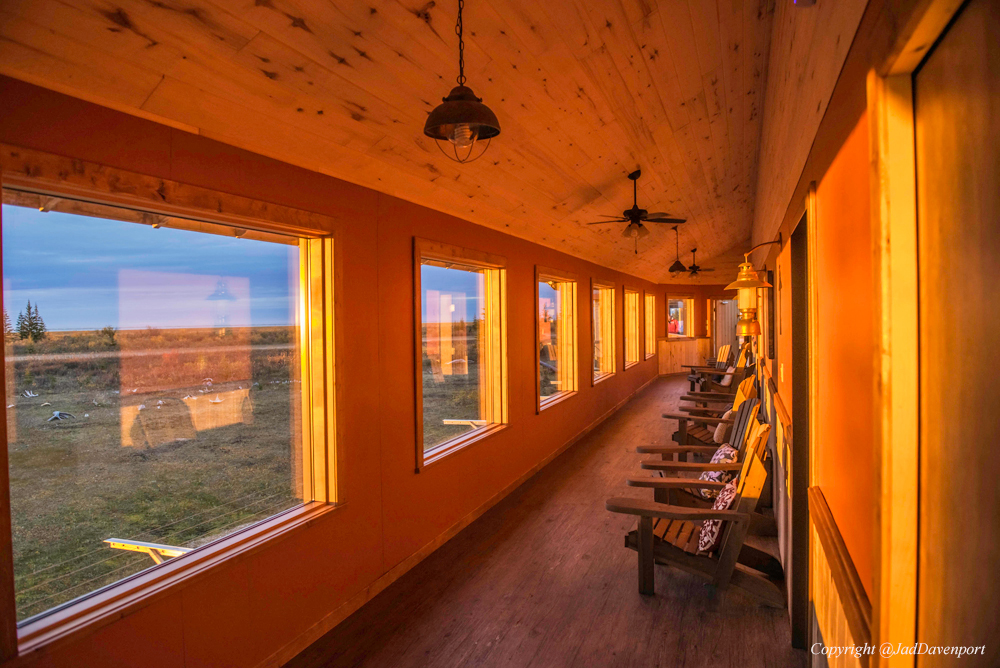
New guest bedroom wing with picture window views of Hudson Bay at Nanuk Polar Bear Lodge. Jad Davenport photo.
In 2015, new guest rooms were added at Seal River Heritage Lodge, the original rooms received a significant upgrade, and a breezeway was built to connect the older guest rooms to the new.
Eighteen loads and 175,000 pounds of building materials were flown from Gillam to Nanuk aboard Cargo North’s Bassler BT67 for the Nanuk upgrades in 2014, and tens of thousands of pounds of materials were hauled across the Hudson Bay sea ice the following spring via Cat Train for the Seal River upgrades. Hauling materials and supplies across the ice is much more economical than flying them in, but it takes more time.
The Cat Train to Seal River took a total of 10 days, and weather conditions varied from crisp, clear and sunny, to blowing snow and complete whiteouts with zero visibility and temperatures fluctuating from -37 to -15 degrees Celsius. The nights were filled with bright stars and reflections of aurora borealis on the ice, with temperatures ranging from -47 to -30 degrees Celsius depending on the wind.
The Cat Train is always an adventure, a challenging man-versus-the-elements experience, and it usually features something new and different. The 2015 trip also included work with a film crew and a dip into a little Reality TV on Ice Road Truckers.
Special equipment was used for this Cat Train, a few things broke, many muscles were strained and there were some sleepless nights, but the job got done and guest comfort levels were taken up yet another notch at both Nanuk Polar Bear Lodge and Seal River Heritage Lodge — to a level not offered anywhere else in the north.
True “Arctic Luxury” had arrived at Churchill Wild.
And the journey to 5-Stars continued…
DAY 19 – On the nineteenth day of Christmas (2015) my true love gave to me: A Seal River Heritage Lodge membership in the prestigious National Geographic Unique Lodges of the World collection.
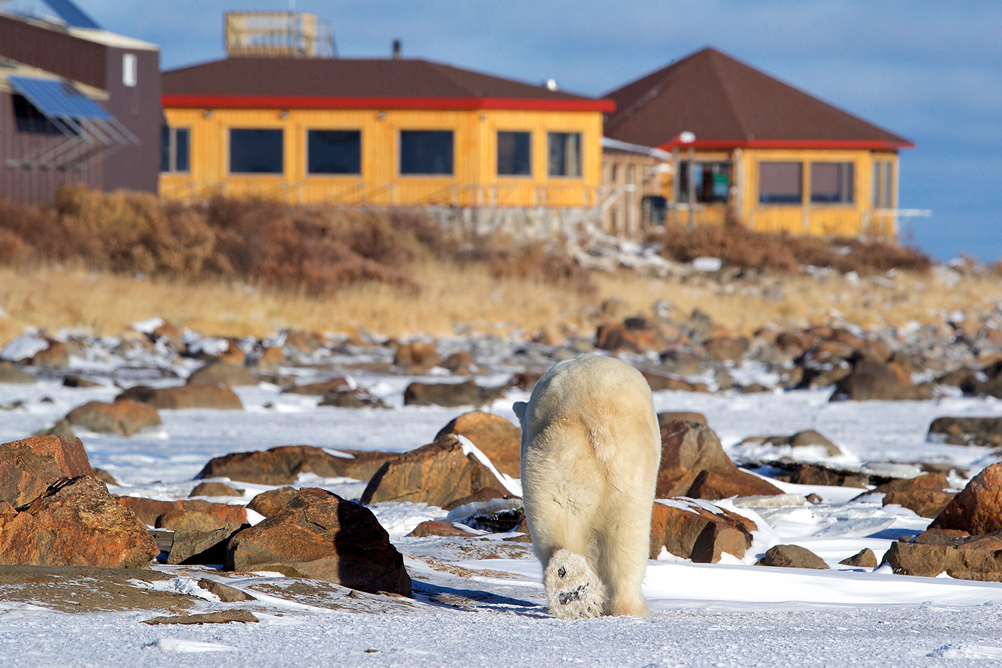
Polar bear approaches Seal River Heritage Lodge on the Polar Bear Photo Safari. Andy Skillen photo.
In December 2015 Seal River Heritage Lodge became a proud member of the prestigious National Geographic Unique Lodges of the World collection, a network of world-class accommodations where sustainability was the touchstone and guest experiences were exceptionally rich and meaningful.
While the program would eventually end in 2020 during the pandemic, the collection of lodges still exists today as rare retreats in spectacular places around the world. Lodges in the National Geographic collection were concepts of dreamers that came to fruition: unique properties that defied the imagination in design and detail, founded on a deep desire to protect the cultures and precious ecosystems that surround them.
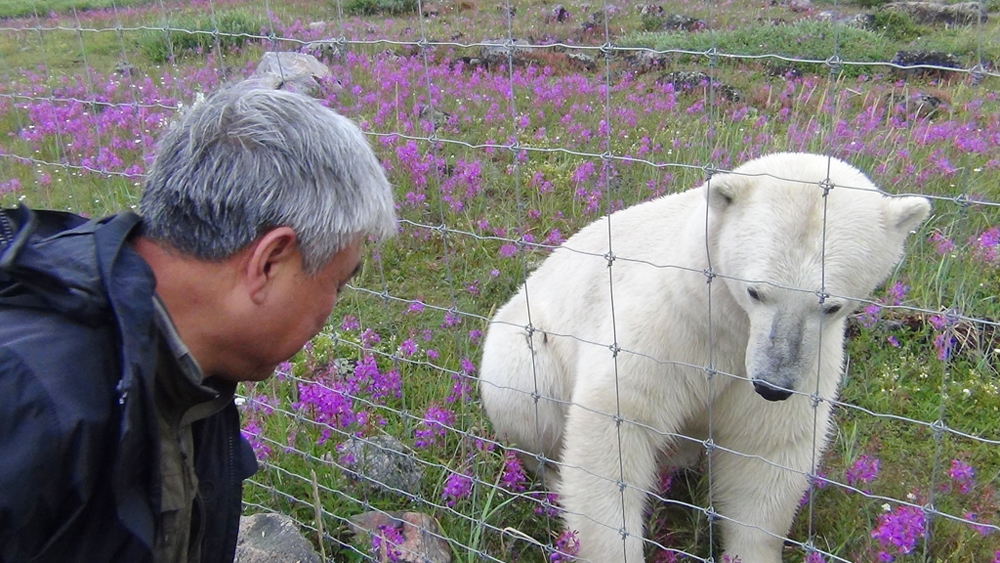
Guest conversing with polar bear at Seal River Heritage Lodge.
The selective collection of boutique hotels, resorts and lodges around the world met National Geographic’s criteria for showing exemplary environmental stewardship, cultural sensitivity and commitment to authentic travel experiences. Properties had to demonstrate leadership in sustainability practices like energy efficiency, waste management, water conservation and community engagement. Cultural attributes like preserving local heritage and customs were also considered.
National Geographic evaluated properties through site visits and vetting applications against their criteria. Being selected for the collection provided prestigious recognition and marketing exposure for the lodges. The program helped raise awareness of sustainable tourism issues through features in National Geographic publications, maps and brochures promoting the unique lodges.
“We were thrilled to have Seal River Heritage Lodge included in National Geographic Unique Lodges of the World,” said Churchill Wild co-founder and owner Mike Reimer.
“We’ve always tried to provide a world-class Arctic wilderness experience for our guests and it was especially pleasing to see our years of hard work validated. It was a total team effort, not just from family members and staff, but also from our guests, who provided us with invaluable feedback and countless cherished friendships over the years. We have many people to thank for this.”

Polar bear and guests observing each other at Seal River Heritage Lodge on the Birds, Bears & Belugas safari.
Seal River Heritage Lodge was the dream that came true for Mike and Jeanne Reimer, who pioneered the world’s first polar bear walking safaris in 1993. Their comfortable and cozy custom-built ecolodge offers Arctic luxury deep in the heart of polar bear country, 60 km north of Churchill, Manitoba on Canada’s rugged Hudson Bay coast.
Located directly in the path of the polar bears as they wander the wild Hudson Bay coastline during the summer and fall, Seal River Heritage Lodge is also only 10 km south of the Seal River estuary, where thousands of beluga whales congregate every summer.
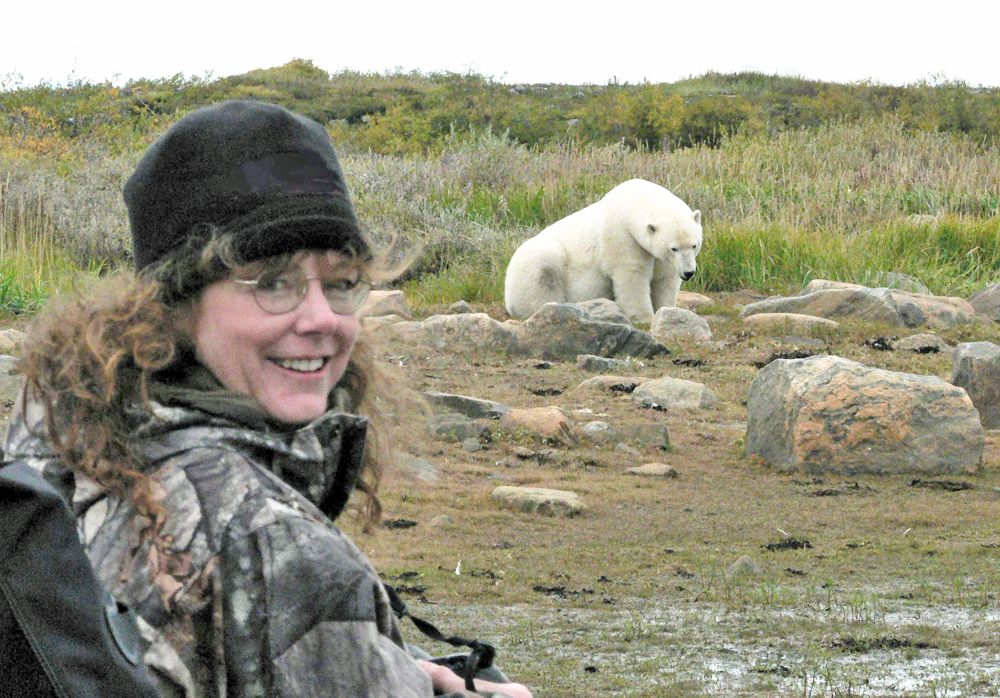
Wildlife artist Linda Bessie with a polar bear at Seal River Heritage Lodge.
“Churchill Wild is one of the only adventure companies in the world that prefers to approach the Arctic tundra and polar bears on foot,” said the National Geographic description. “The experience is intimate and thrilling, and it inspires a deep appreciation for the complexity and the richness of the northern wilderness.”
And the journey to 5-Stars continued…
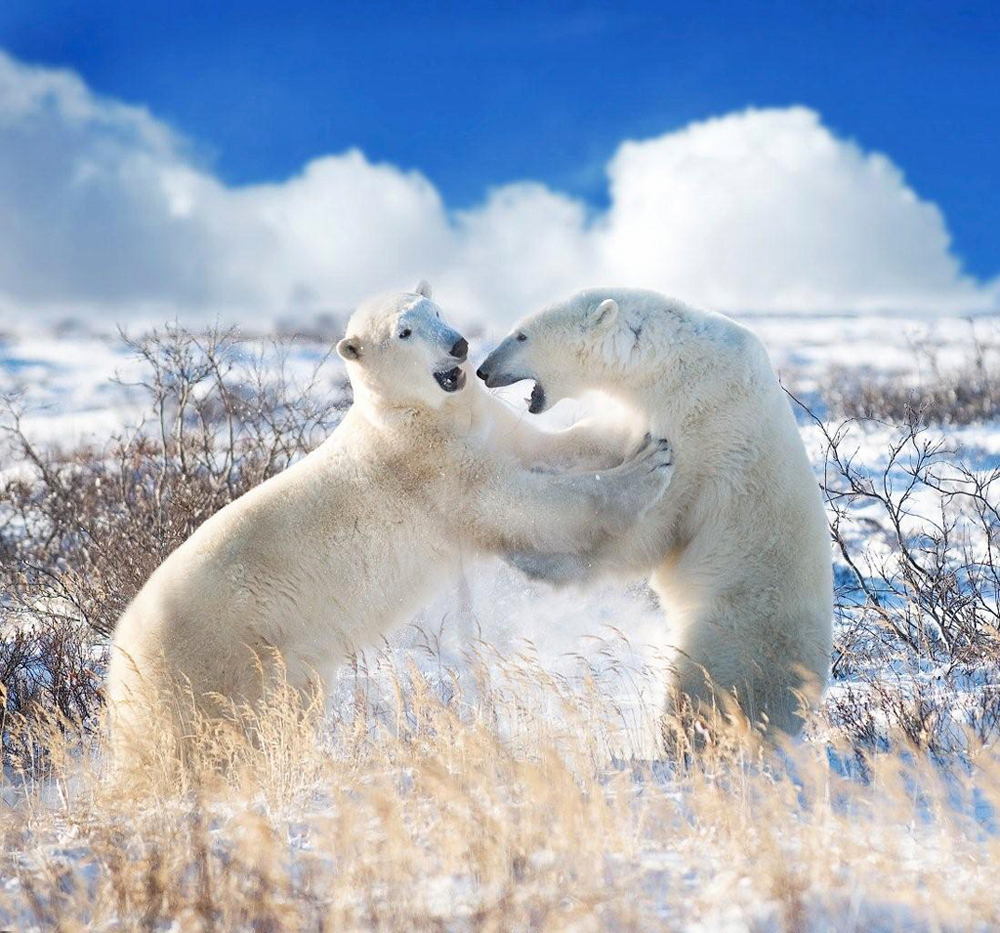
Polar bears sparring at Seal River Heritage Lodge. G. Potts photo.
DAY 20 – On the twentieth day of Christmas (2015) my true love gave to me: The Den Emergence Quest at Nanuk Polar Bear Lodge.
The Den Emergence Quest became Churchill Wild’s seventh and most challenging polar bear safari in 2015, but also offered the opportunity for the most rewarding payoff.
Later renamed the Nanuk Emergence Quest, the goal of this expedition is to find and photograph female polar bears and their newborn cubs in the Kaskatamgan Wildlife Management Area on Manitoba’s Hudson Bay coast.
The Nanuk Emergence Quest takes place in February and March and includes 11 nights at Nanuk Polar Bear Lodge, for the best chances of witnessing moms and cubs as they travel from their den and head out onto the sea ice.
The Nanuk Emergence Quest is for serious adventurers, and includes daily excursions in search of polar bear moms and cubs, wolves, moose and other boreal wildlife. There is also a very good chance of seeing the northern lights on this safari.
Daily treks are followed by delicious tundra-inspired cuisine complemented by select Canadian wines, and educational presentations in the evening. Other activities may include igloo building, wolf howls, soapstone carving and snowshoeing expeditions.
Despite being hundreds of kilometers from civilization under sometimes very harsh conditions, guests enjoy “Arctic luxury” at Nanuk Polar Bear Lodge, which includes a warm fireplace and hot showers.
Guides and/or scouts patrol the area daily to seek out bears traversing the coastline with their newborn cubs, and they are always in radio contact to coordinate viewing /photography opportunities of bear families as they make their way to the coast and onto the sea ice. A nearly 1:1 staff-to-guest ratio ensures an ultra-personalized experience.
While wildlife sightings were never guaranteed, guests experienced some spectacular results.
And the journey to 5-Stars continued…
DAY 21 – On the twenty-first day of Christmas (2016) my true love gave to me: A new multi-level timber frame lounge and dining room at Seal River Heritage Lodge.
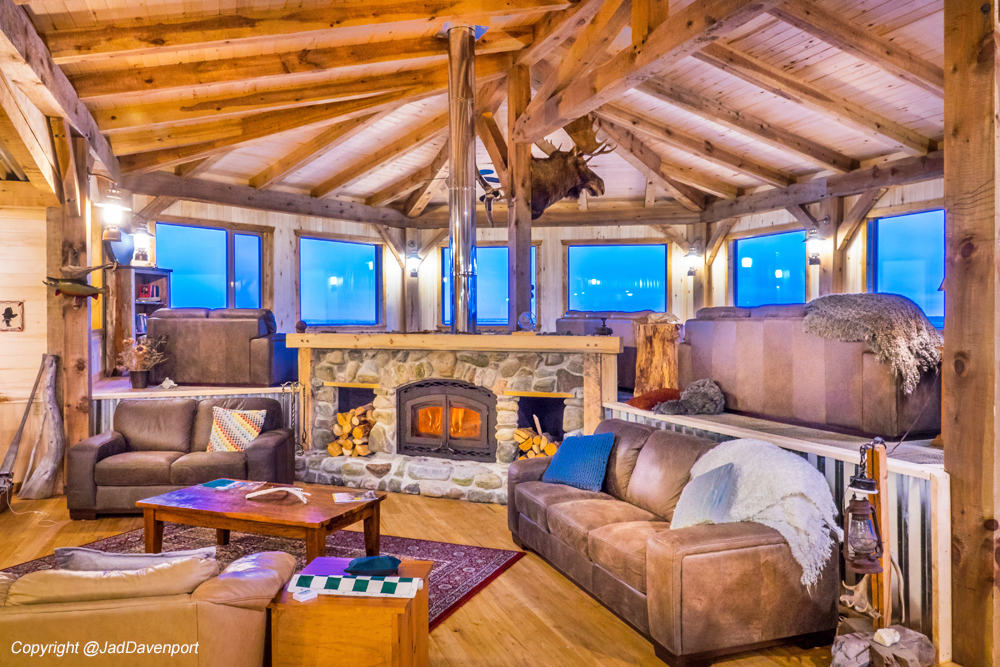
Beautiful new stone fireplace in the timber frame lounge at Seal River Heritage Lodge. Jad Davenport photo.
The gorgeous new lounge and dining room at Seal River Heritage Lodge was paneled in tongue and groove aspen and complemented by a huge expanse of picture windows looking out over the coastline. The new fireplace in the lounge was a work of art and quickly became a gathering point while radiating much welcome warmth and ambiance.
Seal River Heritage Lodge, Nanuk Polar Bear Lodge and Dymond Lake Ecolodge have all undergone extensive upgrades, but the building and development process actually began in the 1980s at Doug and Helen Webber’s (Jeanne Reimer’s parents) North Knife Lake Lodge with master craftsman Len Friesen.
The 67-year-old from Piney, Manitoba learned his carpentry and finishing skills while apprenticing for his father, Martin, and inherited his first northern building job at North Knife Lake Lodge in 1986, when the head carpenter had to return home.
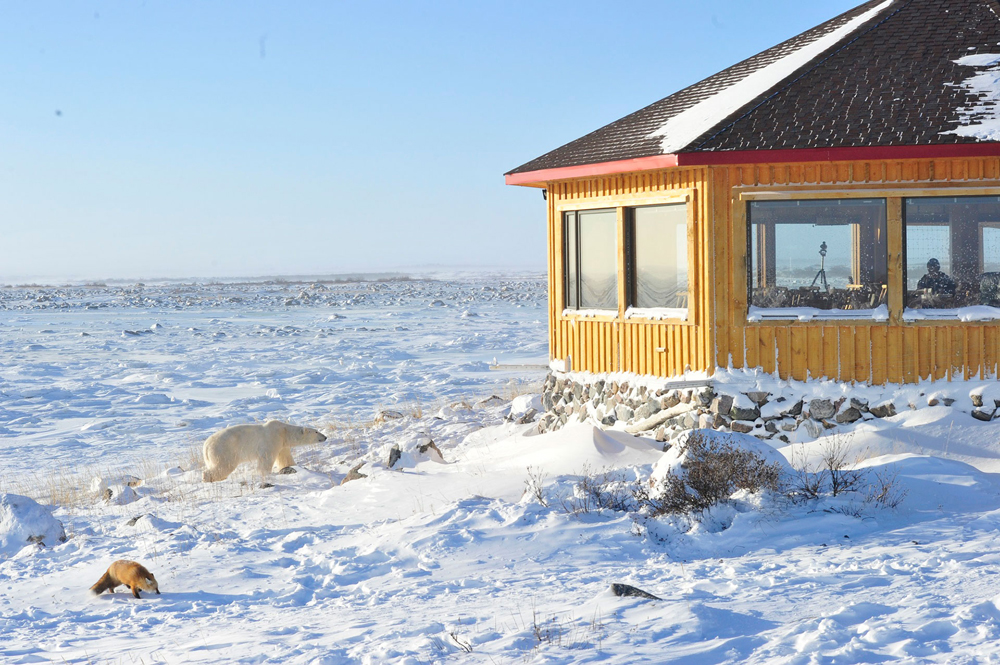
Polar bear and red fox exploring outside of the new timber frame lounge at Seal River Heritage Lodge. Ian Johnson photo.
Friesen went on to work on every major upgrade at the Churchill Wild ecolodges until 2016, and pulled many an Arctic hare out of his magical building cap during his 30 years of working on the lodges. He discovered early in the process of building in the north that a healthy imagination is crucial to success, and Churchill Wild was lucky to have him.
The goal was always the same: to achieve a level of comfort for guests that was unmatched in the Arctic. The beautiful finishing touches you see at Seal River Heritage Lodge, Dymond Lake Ecolodge and Nanuk Polar Bear Lodge are all courtesy of Friesen, who takes immense pride in his craftsmanship.
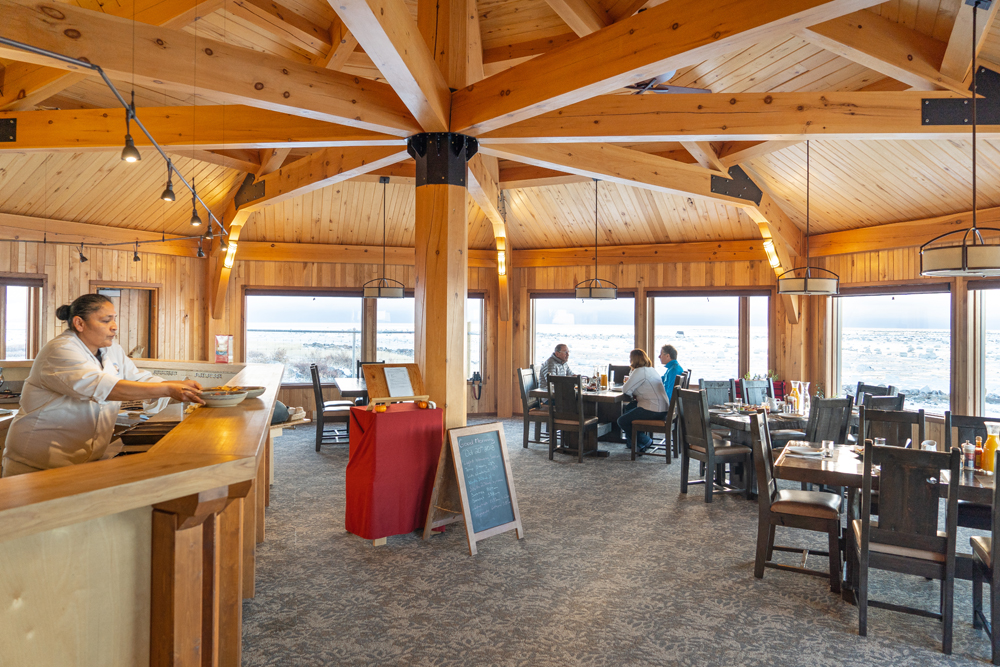
New timber frame dining room at Seal River Heritage Lodge. Scott Zielke photo.
“It’s just a matter of personality,” he said. “Some people just like to see something go up really quickly, and then go onto the next thing. I like to spend lots of time on detailed work, especially if I find someone who appreciates it. Doug was on a budget on that first job, but he really liked nice stuff, so I got to spend a lot of time doing detailed work at North Knife Lake. He just smiled and tried hard not to count the pennies.”
The guests loved it.
And the journey to 5-Stars continued…
DAY 22 – On the twenty-second day of Christmas (2016) my true love gave to me: A Nanuk Polar Bear Lodge membership in the prestigious National Geographic Unique Lodges of the World collection and a new Polar Bear Photo Safari at Nanuk.
Nanuk Polar Bear Lodge became the second Churchill Wild ecolodge to become a member of National Geographic Unique Lodges of the World, following Seal River Heritage Lodge into the prestigious collection. At the same time, a new Polar Bear Photo Safari was added at Nanuk due to guest demand.
“It’s a tremendous honour to have a second lodge included in National Geographic Unique Lodges of the World,” said Churchill Wild co-owner Mike Reimer in the announcement about the new inclusion. “National Geographic has been a wonderful partner for us and we look forward to working with them on new opportunities and guest experiences at Nanuk.
“We started developing Nanuk Polar Bear Lodge in 2010 with the goal of offering a world-class Arctic wilderness experience similar to that of Seal River Heritage Lodge and we’re very grateful to everyone who helped us make it a success. Our team here has worked very hard and our guests have provided us with invaluable feedback that has allowed us to build Nanuk Polar Bear Lodge into a world-class wilderness property.”
Located near polar bear denning areas on the coast of Hudson Bay, 250 km southeast of Churchill, Manitoba, Nanuk Polar Bear Lodge is also only 40 km from Canada’s historic York Factory, where the early explorers first came to Canada in the 1600s. Similar to Seal River Heritage Lodge, Nanuk Polar Bear Lodge offers Churchill Wild’s signature polar bear walking safaris on Canada’s Hudson Bay coast, but in an entirely different mix of ecosystems.
“The convergence of three different ecosystems, the sweeping coastal flats, the grasslands, and numerous rivers that wind their way back into the Boreal forest, make Nanuk one of the most unique places on earth,” said Mike. “It’s one of the wildest places on the planet. We see polar bears at both lodges, but the population of polar bears at Nanuk is different from that of Seal River, and the landscape and wildlife at Nanuk is very different. We are particularly proud of this lodge due to the phenomenal wildlife access it provides.”
Nanuk Polar Bear Lodge offers guests the opportunity to view and photograph polar bears, black bears, wolves, moose and a myriad of other Arctic wildlife and bird species at ground level, on seven different polar bear safaris including: the Arctic Discovery, Hudson Bay Odyssey, Nanuk Emergence Quest, Polar Bear Photo Safari, Cloud Wolves of the Kaska Coast, the Summer Dual Lodge Safari and the Fall Dual Lodge Safari.
An 80-minute flight from Churchill, Nanuk Polar Bear Lodge has all the comforts of home despite its remote location in the Canadian wilderness, and guests enjoy cozy accommodations in the luxury eco-lodge while being treated to delicious cuisine based on Churchill Wild’s award-winning Blueberries & Polar Bears cookbook series.
Guest numbers at Nanuk Polar Bear Lodge had already increased before the National Geographic inclusion.
And the journey to 5-Stars continued…
DAY 23 – On the twenty-third day of Christmas (2017) my true love gave to me: The prestigious PURE Award for Experiential Travel and two new Dual Lodge Safaris.
Churchill Wild co-founder Mike Reimer received the prestigious PURE Life Experiences Award for Contribution to Experiential Travel in 2017.
The award for Contribution to Experiential Travel recognizes an individual whose efforts have directly influenced the development of the experiential travel movement – a true maverick whose commitment, curiosity and daring sets new standards for the industry at large. Churchill Wild was also shortlisted for the 2017 PURE Life Experiences Award for Transformational Travel.
“We’re very proud to receive the 2017 PURE Award for Contribution to Experiential Travel,” said Mike upon receiving the award. “And we’re thankful to PURE Life Experiences. We would also like to congratulate our fellow nominees, Mei Zhang and Charles McDiarmid.
“We’ve worked incredibly hard for this and it truly has been a team effort. All I seem to do these days is get out of the way and watch the team at work. It’s the contributions from everyone that have the world calling at our door these days. Of course, behind every man with a harebrained scheme stands a stronger woman (Jeanne) holding it all together. And let’s not forget Jeanne’s parents, Doug and Helen Webber. They were tireless supporters when the ship was first setting sail. We have a lot of people to thank for this, especially our guests.”
Exceptional bear guiding and outdoorsmanship skills gained from 50 years of practical experience, combined with excellent customer service and culinary delights courtesy of Jeanne’s family — who have almost 100 years of award-winning experience in the northern Manitoba tourism industry — resulted in a delicious recipe for success in one of the most remote and pristine environments on the planet.
Churchill Wild also received awards and honours both before and after the PURE Life Experiences Award.
In 2010 Churchill Wild’s Birds, Bears and Belugas safari at Seal River Heritage Lodge became a member of Destination Canada’s Signature Experiences, a collection featuring once-in-a-lifetime travel experiences found only in Canada.
In 2015 Churchill Wild co-founders and owners Mike and Jeanne Reimer were elected to the prestigious Royal Canadian Geographical Society’s (RCGS) College of Fellows, and Churchill Wild received the Sustainable Tourism Award from Travel Manitoba.
The following year in 2016, Churchill Wild received the Winnipeg Airports Authority Award of Distinction at the 18th Annual Travel Manitoba Tourism Awards. The Award of Distinction recognizes a business or organization that reflects exceptional leadership in Manitoba’s tourism industry and helps Manitoba realize distinction as a high-quality tourism destination.
Also in 2016, Churchill Wild received the Adventure/Outdoors Award from the Tourism Industry Association of Canada (TIAC), and in 2017 Churchill Wild was presented with the Transat Sustainable Tourism Award, also from TIAC.
Dymond Lake Ecolodge and Seal River Heritage Lodge received the Traveller’s Choice Award (Certificate of Excellence) from TripAdvisor in 2017. Seal River Heritage Lodge also garnered Traveller’s Choice Awards in 2018, 2019 and 2020. Nanuk Polar Bear Lodge followed suit, receiving the Traveller’s Choice Award for three years in a row from 2018 to 2020.
Two new safaris, the Summer Dual Lodge Safari and the Fall Dual Lodge Safari were added to the growing list of adventures at Churchill Wild, offering guests a chance to experience the best of both Seal River Heritage Lodge and Nanuk Polar Bear Lodge in two vastly different ecosystems.
And the journey to 5-Stars continued…
DAY 24 – On the twenty-fourth day of Christmas (2018) my true love gave to me: A new milestone for the Blueberries & Polar Bears cookbook series, with over 100,000 copies sold.
The award-winning Blueberries & Polar Bears cookbook series that now forms the basis of Churchill Wild’s tundra-inspired cuisine was born out of the culinary prowess of Helen Webber (mother of Churchill Wild co-founder and owner Jeanne Reimer) and Helen’s close friend Marie Woolsey.
Helen first learned to cook by joining a local Ladies Club that served meals to support community fundraisers. She also joined a mail-order cookbook club and experimented with new recipes weekly. After marrying Doug Webber in 1965, Helen worked to improve her skills to live up to the reputation of her acclaimed mother-in-law, through cooking for guests at Dymond Lake Lodge and later North Knife Lake Lodge.
Marie Woolsey grew up with a mother who did all the family cooking. After moving away from home, Marie had to learn basic cooking skills on her own. When Marie married Gary Woolsey, she received two cookbooks as wedding gifts that introduced her to following recipes, jumpstarting her interest in baking.
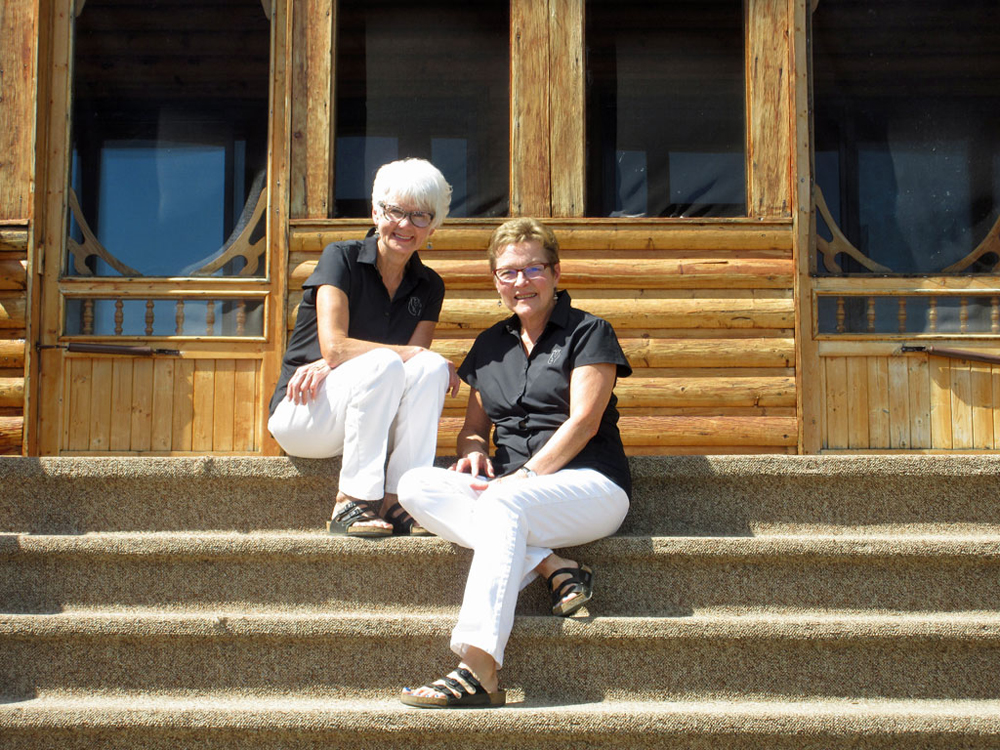
Blueberries & Polar Bears Cookbook authors Helen Webber (Left) and Marie Woolsey at North Knife Lake Lodge.
Helen and Marie first met in 1976 when Marie moved to Churchill with her husband. Their friendship was cemented through a shared love of cooking and baking. In the mid 1980s, Helen asked Marie to cook with her at North Knife Lake Lodge, and on the continued insistence of guests, they decided to write their first cookbook.
In 1994, Helen and Marie published their first cookbook Blueberries & Polar Bears, filled with guest-approved recipes focused on wild game, fish and berries. They had to print 5,000 copies at a cost of $50,000, so they tirelessly promoted the book across Canada. They did book launches with friends, approached retailers, went on road trips selling at shops across western Canada, and showcased the book at trade shows. Their secret weapon at shows was baking cinnamon buns onsite. The irresistible scent of the freshly baked buns lured people to their booth in droves.
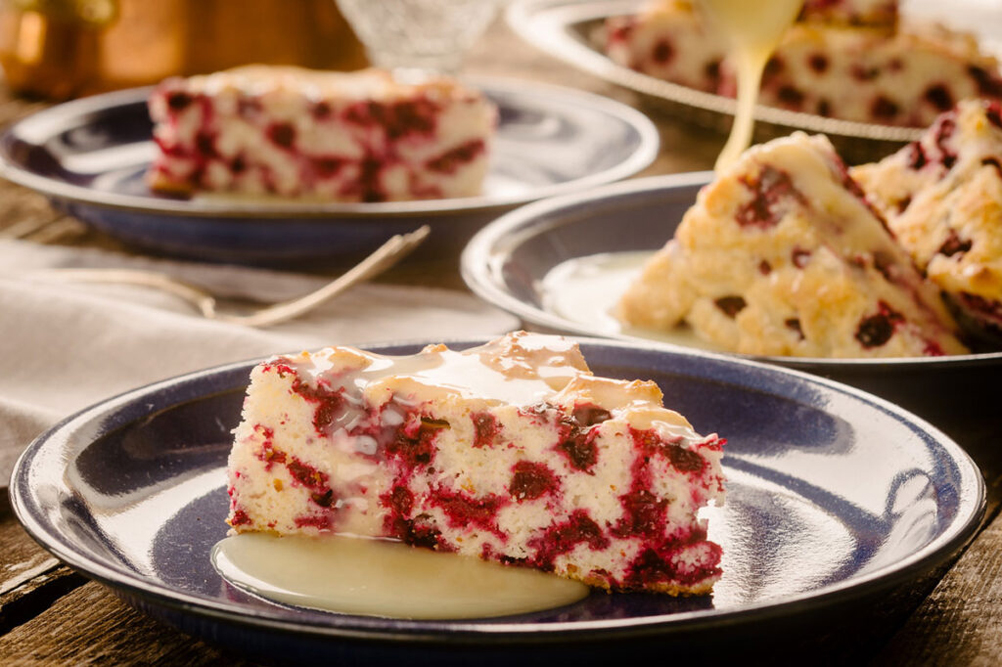
Wild Arctic Cranberry Cake with Warm Butter Sauce. a guest favourite from the Blueberries & Polar Bears cookbook series. Ian McCausland / Shel Zolkewich photo.
The cookbooks started getting coverage in newspapers, magazines, radio shows and TV spots across Canada and by 1996, Helen and Marie had they published their second cookbook in the series, Cranberries & Canada Geese. Over the years, the series expanded to four cookbooks and additional smaller specialty books. In total, the series has now sold over 100,000 copies and become a Canadian bestseller.
To further enhance flavour, Helen and Marie created their own Dymond Lake Seasoning blend. A free downloadable sampler cookbook entitled Wild Delights was also created to offer a taste of the delicious recipes in the cookbook series.

Crusted Caribou Tenderloin with Mushroom and Red Wine Reduction. Blueberries & Polar Bears cookbooks. Ian McCausland / Shel Zolkewich photo.
The Blueberries & Polar Bears books represent the heart and soul of the food served at the Churchill Wild lodges today. The stories, insights and photography within the pages of the cookbooks provide a window into life in the remote north.
Though Helen and Marie have passed the torch to a new generation of chefs now, their pioneering cookbooks formed the foundation of the culinary experience that drew rave reviews from Churchill Wild guests from the very beginning.
And the journey to 5-Stars continued…
DAY 25 – On the twenty-fifth day of Christmas (2018) my true love gave to me: A 25th Anniversary, our 4000th guest and a new anniversary book, Churchill Wild – 25 Years of Adventure on the Hudson Bay Coast.
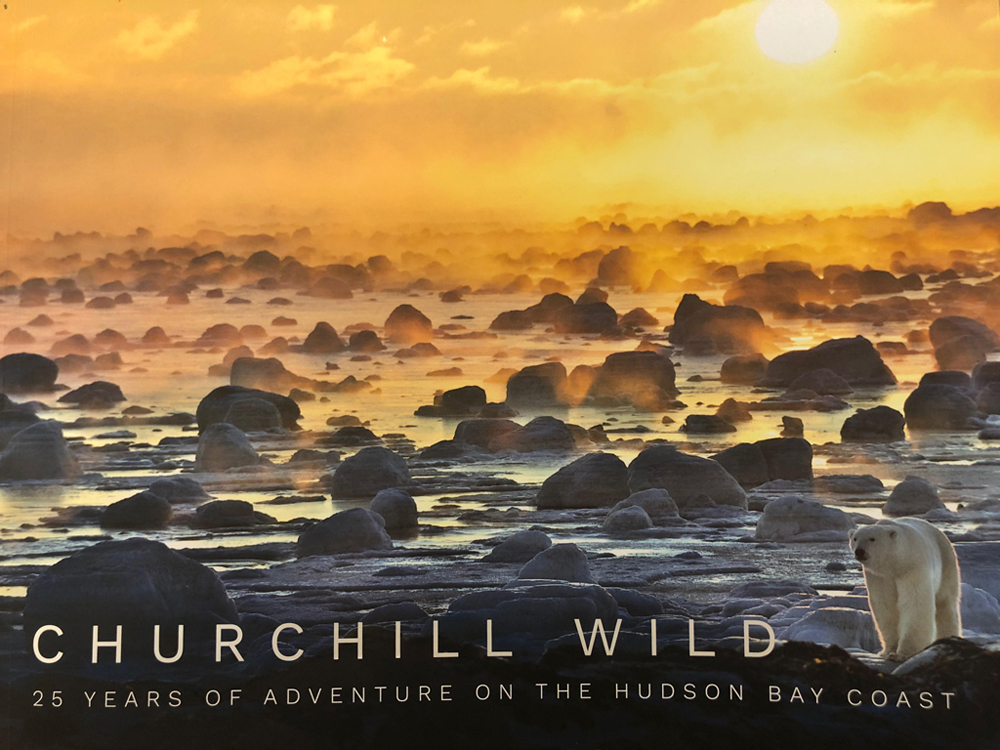
New anniversary book. Churchill Wild – 25 Years of Adventure on the Hudson Bay Coast. Susan Crane photo.
Sometimes dreams really do come true.
In 1993, Mike and Jeanne Reimer set out to do what no one had ever done before. Their dream was to offer the ultimate Arctic safari experience: walking with polar bears. In their first year of operation they had only one paying guest. In 2018 they welcomed their 4,000th guest and celebrated their 25th anniversary with a new book, Churchill Wild – 25 Years of Adventure on the Hudson Bay Coast.
Churchill Wild celebrated their anniversary with three luxury remote ecolodges on the Hudson Bay coast — two of which were included in the prestigious National Geographic Unique Lodges of the World collection. They’d won numerous national and international tourism awards, and more than 700 guests were now visiting their polar bear lodges annually for the exhilarating experience of meeting a polar bear at ground level.
The anniversary book is packed with history reaching back over 80 years, beautiful photos, family and staff biographies, stories and anecdotes from guests, staff, media and photographers, and tells the story of how Mike and Jeanne Reimer pioneered and developed the world’s first true polar bear walking safaris, raised a family and built a family business, beginning with the purchase of an abandoned whale research station north of Seal River on Hudson Bay.
The 25-year adventure was full of ups and downs, dreaming and building, exploring, discovering and learning. Churchill Wild – 25 Years of Adventure on the Hudson Bay Coast is the story of that adventure, and of the people, wildlife and wild places that made the dream a reality.
And the journey to 5-Stars continued…
Watch this post and the photo gallery below for daily updates!



